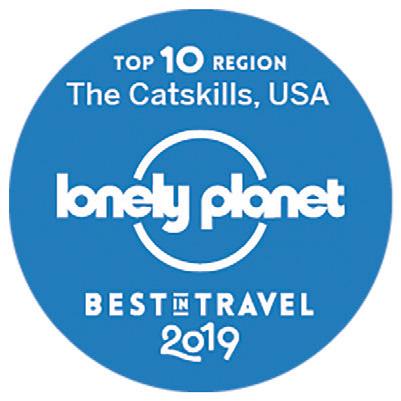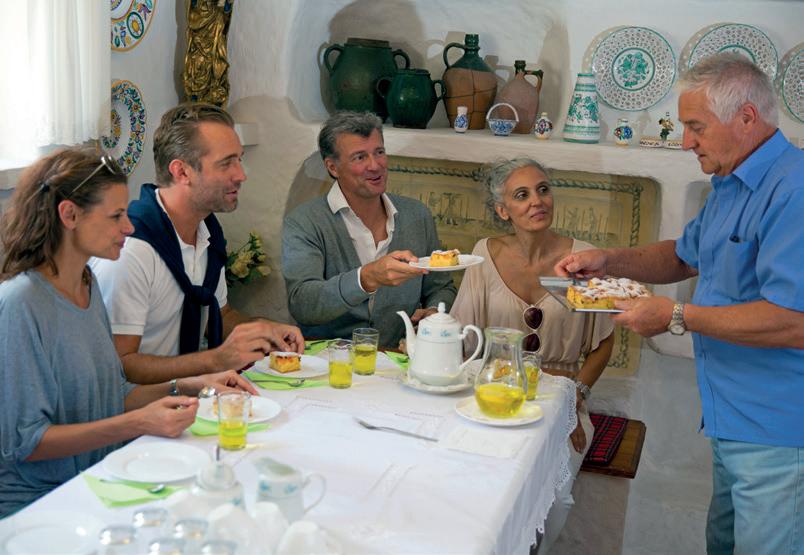A CLASSIC COASTAL GETAWAY IN RHODE ISLAND
MAINE’S GREATEST PHOTOGRAPHER COMES HOME






5 TASTY RECIPES THAT CELEBRATE THE FLAVORS OF SPRING

HOW THE ATV BOOM IS CHANGING THE NORTH WOODS





















5 TASTY RECIPES THAT CELEBRATE THE FLAVORS OF SPRING

HOW THE ATV BOOM IS CHANGING THE NORTH WOODS














28 /// One Nail at a Time
Each renovation builds toward the next for this creative Rhode Island rehab duo. By Annie Graves

34 /// Open Studio
The artisans of Nantucket Looms weave the essence of island life into their creations. By Annie Graves

38 /// House for Sale
Like your wilderness with a touch of luxury? This Maine lodge hits the spot. By the Yankee Moseyer
44 /// A Fresh Take
West Coast chef Cortney Burns finds inspiration in the New England seasons. By Alana Chernila

52 /// Local Flavor
We visit an old-school Vermont diner that was locavore before locavore was cool. By Amy Traverso
54 /// Cooking at Cottage Farm
The spring thaw signals harvest time for a treasured ingredient: the parsnip. By Krissy O’Shea
57 /// Weekends with Yankee
Packing the perfect Tanglewood picnic with cookbook author Alana Chernila. By Amy Traverso
60 /// Could You Live Here?
A visit to Bristol, Rhode Island. By Annie Graves
68 /// The Best 5
New England flower farms. By Kim Knox Beckius
72 /// Out & About
A roundup of regional events that are worth the drive.
10
DEAR YANKEE, CONTRIBUTORS & POETRY BY D.A.W.
12
14
On the edges of civilization, the call of the coyote can stirs divided sympathies. By LeeLee Goodson
16
In rural New England, the sawmill and lumberyard connects the forest to the homesteader. By Ben Hewitt
20
As frogs and salamanders make an amazing annual pilgrimage, humans gather to lend them a hand.
By Loree Griffin Burns24
KNOWLEDGE & WISDOM
Wise words for National Poetry Month from noted national poet (and Bay State native) Tracy K. Smith. Plus: Test yourself against mountains of trivia.
136
Remembering two-time Boston Marathon champion Ellison “Tarzan” Brown, the pride of the Narragansetts.
Don’t let taxes or fees chip away at your retirement savings. Fidelity’s low-cost, tax-deferred variable annuity could help you maximize savings and manage the impact of taxes.

• Low cost: 0.25% annual fee vs. industry average of 1.16%.* Keep in mind that this annuity does not include a guaranteed minimum death benefit.
• Simple: no complicated riders or hidden fees
• Investment choices: a wide range of options that includes over 50 funds from Fidelity and other reputable money management firms
Talk with a Fidelity financial professional at 866.615.3029 about how a tax-deferred variable annuity can fit into your overall retirement investment mix.
Keep in mind that investing involves risk. The value of your investment will fluctuate over time, and you may gain or lose money.
To learn more, visit: Fidelity.com/taxe cient
Before investing, consider the investment objectives, risks, charges, and expenses of the annuity and its investment options. Contact Fidelity for a prospectus or, if available, a summary prospectus containing this information. Read it carefully.
*According to 12/31/17 data on nongroup open variable annuities from Morningstar, Inc., at 0.25%, Fidelity Personal Retirement Annuity’s annual annuity charge is significantly lower than the national industry average 1.16% annual annuity charge. Underlying fund fees also apply.
Fidelity Personal Retirement Annuity (Policy Form No. DVA-2005 et al.) is issued by Fidelity Investments Life Insurance Company, 100 Salem Street, Smithfield, RI 02917, and, for New York residents, Personal Retirement Annuity (Policy Form No. EDVA-2005 et al.) is issued by Empire Fidelity Investments Life Insurance Company®, New York, N.Y. Fidelity Brokerage Services, Member NYSE, SIPC, 900 Salem Street, Smithfield, RI 02917, and Fidelity Insurance Agency, Inc., are the distributors. A contract’s financial guarantees are subject to the claimspaying ability of the issuing insurance company.
The Fidelity Investments and pyramid design logo is a registered service mark of FMR LLC.
© 2018 FMR LLC. All rights reserved. 853706.2.0
1121 Main St., P.O. Box 520, Dublin, NH 03444. 603-563-8111; editor@yankeemagazine.com
EDITORIAL
EDITOR Mel Allen
ART DIRECTOR Lori Pedrick
DEPUTY EDITOR Ian Aldrich
MANAGING EDITOR Jenn Johnson
SENIOR EDITOR/FOOD Amy Traverso
HOME & GARDEN EDITOR Annie Graves
ASSOCIATE EDITOR Joe Bills
PHOTO EDITOR Heather Marcus
DIGITAL EDITOR Aimee Tucker
DIGITAL ASSISTANT EDITOR Cathryn McCann
CONTRIBUTING EDITORS Kim Knox Beckius, Ben Hewitt, Rowan Jacobsen, Krissy O’Shea, Julia Shipley
CONTRIBUTING
PHOTOGRAPHERS Kindra Clineff, Sara Gray, Corey Hendrickson, Joe Keller, Joel Laino, Little Outdoor Giants, Michael Piazza, Heath Robbins, Carl Tremblay
PRODUCTION
PRODUCTION DIRECTORS David Ziarnowski, Susan Gross
SENIOR PRODUCTION ARTISTS Jennifer Freeman, Susan Shute
DIGITAL
VP NEW MEDIA & PRODUCTION Paul Belliveau Jr.
DIGITAL MARKETING MANAGER Amy O’Brien
YANKEE PUBLISHING INC. established 1935
PRESIDENT Jamie Trowbridge
EDITOR-IN-CHIEF Judson D. Hale Sr.
VICE PRESIDENTS Paul Belliveau Jr., Jody Bugbee, Judson D. Hale Jr., Brook Holmberg, Sandra Lepple, Sherin Pierce
CORPORATE STAFF Mike Caron, Linda Clukay, Nancy Pfuntner, Bill Price, Sabrina Salvage, Christine Tourgee
BOARD OF DIRECTORS
CHAIRMAN Judson D. Hale Sr.
VICE CHAIRMAN Tom Putnam
DIRECTORS Andrew Clurman, H. Hansell Germond, Daniel Hale, Judson D. Hale Jr., Joel Toner, Cor Trowbridge, Jamie Trowbridge
FOUNDERS
ROBB AND BEATRIX SAGENDORPH
PUBLISHER Brook Holmberg
ADVERTISING: PRINT/DIGITAL/TELEVISION
VICE PRESIDENT/SALES Judson D. Hale Jr.
SALES IN NEW ENGLAND
TRAVEL, NORTH Kelly Moores KellyM@yankeepub.com
TRAVEL, SOUTH Dean DeLuca DeanD@yankeepub.com
TRAVEL, WEST David Honeywell Dave_golfhouse@madriver.com
DIRECT RESPONSE Steven Hall SteveH@yankeepub.com
SALES OUTSIDE NEW ENGLAND
CANADA Françoise Chalifour, 416-363-1388
NORTHEAST Nick Romano, 203-722-6448
SOUTHEAST Rocky Kurland, 770-441-2406
SENIOR AD PRODUCTION Janet Selle COORDINATOR
For advertising rates and information: 800-736-1100, ext. 204 NewEngland.com/adinfo
MARKETING
ADVERTISING
DIRECTOR Kate Hathaway Weeks
MANAGER Valerie Lithgow
ASSOCIATE Holly Sloane
PUBLIC RELATIONS
Roslan & Campion, 212-966-4600
NEWSSTAND
VICE PRESIDENT Sherin Pierce
MARKETING MANAGER Stacey Korpi

SALES ASSOCIATE Janice Edson
SUBSCRIPTION SERVICES
To subscribe, give a gift, or change your mailing address, or for any other questions, please contact our customer service department: Online NewEngland.com/contact
Phone
800-288-4284
Yankee Magazine Customer Service P.O. Box 422446 Palm Coast, FL 32142-2446
















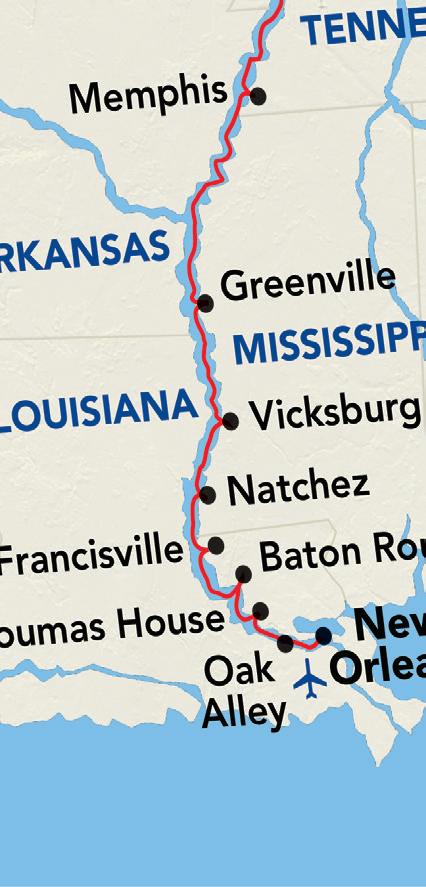

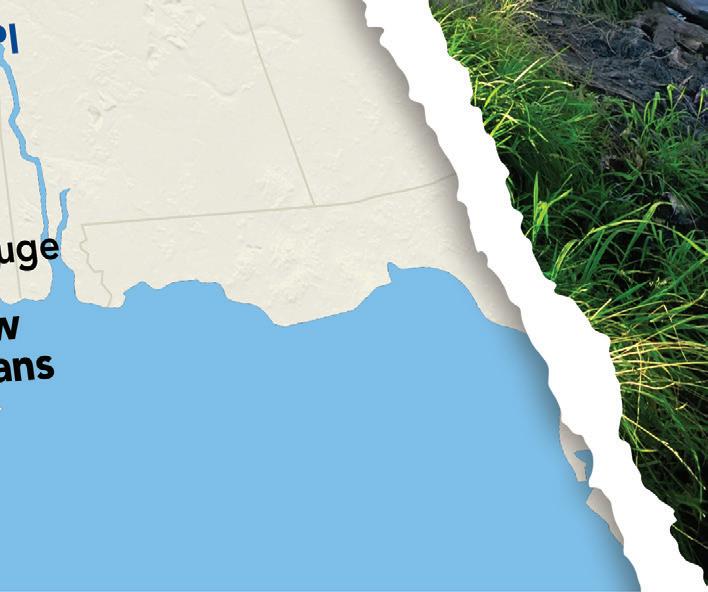





























































THEPOEMREADS:
THEPOEMREADS:
THEPOEMREADS:
Dear Reader,
Dear Reader,
Dear Reader,
The drawing you see above is called “The Promise.” It is completely composed of dots of ink. After writing the poem, I worked with a quill pen and placed thousands of these dots, one at a time, to create this gift in honor of my youngest brother and his wife.
The drawing you see above is called The Promise It is completely composed of dots of ink. After writing the poem, I worked with a quill pen and placed thousands of these dots, one at a time, to create this gift in honor of my youngest brother and his wife.
Dear Reader,
The drawing you see above is called “The Promise.” It is completely composed of dots of ink. After writing the poem, I worked with a quill pen and placed thousands of these dots, one at a time, to create this gift in honor of my youngest brother and his wife.
Now, I have decided to offer The Promise to those who share and value its sentiment. Each litho is numbered and signed by hand and precisely captures the detail of the drawing. As a wedding, anniversary or Valentine’s gift or simply as a standard for your own home, I believe you will find it most appropriate.
Now, I have decided to offer “The Promise” to those who share and value its sentiment. Each litho is numbered and signed by hand and precisely captures the detail of the drawing. As a wedding, anniversary or Valentine’s gift or simply as a standard for your own home, I believe you will find it most appropriate.
Now, I have decided to offer “The Promise” to those who share and value its sentiment. Each litho is numbered and signed by hand and precisely captures the detail of the drawing. As a wedding, anniversary or Valentine’s gift or simply as a standard for your own home, I believe you will find it most appropriate.
The drawing you see above is called “The Promise.” It is completely composed of dots of ink. After writing the poem, I worked with a quill pen and placed thousands of these dots, one at a time, to create this gift in honor of my youngest brother and his wife.
Measuring 14" by 16", it is available either fully-framed in a subtle copper tone with hand-cut double mats of pewter and rust at $150*, or in the mats alone at $110*. Please add $18.95 for insured shipping. Returns/exchanges within 30 days.
My best wishes are with you.
Measuring 14" by 16", it is available either fully framed in a subtle copper tone with hand-cut mats of pewter and rust at $110, or in the mats alone at $95. Please add $14.50 for insured shipping and packaging. Your satisfaction is completely guaranteed.
Measuring 14" by 16", it is available either fully framed in a subtle copper tone with hand-cut mats of pewter and rust at $110, or in the mats alone at $95. Please add $14.50 for insured shipping and packaging. Your satisfaction is completely guaranteed.
My best wishes are with you.
Now, I have decided to offer “The Promise” to those who share and value its sentiment. Each litho is numbered and signed by hand and precisely captures the detail of the drawing. As a wedding, anniversary or Valentine’s gift or simply as a standard for your own home, I believe you will find it most appropriate.
My best wishes are with you.
Sextonart Inc. • P.O. Box 581 • Rutherford, CA 94573 (415) 989-1630
The Art of Robert Sexton, 491 Greenwich St. (at Grant), San Francisco, CA 94133
All major credit cards are welcomed. Please call between 10 a m -5 p m Pacific Standard Time, 7 days a week. Checks are also accepted. Please include a phone number.
Measuring 14" by 16", it is available either fully framed in a subtle copper tone with hand-cut mats of pewter and rust at $110, or in the mats alone at $95. Please add $14.50 for insured shipping and packaging. Your satisfaction is completely guaranteed.

The Art of Robert Sexton, 491 Greenwich St. (at Grant), San Francisco, CA 94133
MASTERCARD and VISA orders welcome. Please send card name, card number, address and expiration date, or phone (415) 989-1630 between noon-8 P.M.EST. Checks are also accepted. Please allow 3 weeks for delivery.
My best wishes are with you.
MASTERCARD and VISA orders welcome. Please send card name, card number, address and expiration date, or phone (415) 989-1630 between noon-8 P.M.EST. Checks are also accepted. Please allow 3 weeks for delivery.
*California residents please include 8.0% tax
Please visit our website at www.robertsexton.com
“The Promise” is featured with many other recent works in my book, “Journeys of the Human Heart.” It, too, is available from the address above at $12.95 per copy postpaid. Please visit my Web site at www.robertsexton.com
“The Promise” is featured with many other recent works in my book, “Journeys of the Human Heart.” It, too, is available from the address above at $12.95 per copy postpaid. Please visit my Web site at www.robertsexton.com

“Across the years I will walk with you— in deep, green forests; on shores of sand: and when our time on earth is through, in heaven, too, you will have my hand.”
“Across the years I will walk with you— in deep, green forests; on shores of sand: and when our time on earth is through, in heaven, too, you will have my hand.”
“Across the years I will walk with you— in deep, green forests; on shores of sand: and when our time on earth is through, in heaven, too, you will have my hand.”
LOREE GRIFFIN BURNS

A PhD in biochemistry may have honed Burns’s observational skills as a scientist, but she’s also benefited from nearly two decades spent exploring the world through the eyes of her three children [“Big Night,” p. 20]. As a result, the Massachusetts native has written a number of science books for young people, the most recent of which is Life on Surtsey, Iceland’s Upstart Island .


DAVE BRADLEY

A graduate of the Art Institute of Boston, Bradley got his start as a freelance photographer for area newspapers, including The Boston Globe, before building up a client list that ranges from Puma to Esquire to Audi. He shot the images for “Food Town Showdown” [p. 81] in his South Boston studio— which also happens to give him a front-row seat to one of the city’s hottest restaurant scenes.
ALANA CHERNILA
This Massachusetts food writer and teacher did double duty for this issue of Yankee : She’s the subject of our Weekends with Yankee preview [“In the Kitchen with Alana Chernila,” p. 52] as well as the author of a story about seasonally inspired cooking with chef Cortney Burns [“A Fresh Take,” p. 44]. To read more about and by this New England culinary pro, check out her blog, Eating from the Ground Up.
MATT PATTERSON

The son of a biology teacher, this New Hampshire artist illustrated the recent nature book The Snake and the Salamander and says reptiles and amphibians “are often misunderstood or overlooked … but if you take a closer look you realize just how beautiful and incredible they are.” You can see an example of Patterson’s artwork in this issue [“Big Night,” p. 20], and much more at his website (mpattersonart.com).
LEELEE GOODSON
Goodson lives with her veterinarian husband in northern Vermont in an 1836 farmhouse just a mile down the road from the house in which she was raised, and almost every night they can hear the howls of coyotes [“Night Song,” p. 14]. She earned a BA and an MA in literature from the University of Vermont, where she currently teaches, and an MFA from the Vermont College of Fine Arts.
MEGAN HALEY
“In my work I am particularly drawn to subjects related to land use and culture, so photographing the piece on chef Cortney Burns [‘A Fresh Take,’ p. 44] really resonated with me,” says Haley, a fineart and editorial photographer based in western Massachusetts, where she also grew up. When she’s not photographing stories, Haley can be found cooking, traveling, and wandering in the woods.

After several reading sessions over several days, I have finally finished every story in your November/December issue. I looked online at the instructions for the boiled mittens [“Knitty Gritty”], I’ve suggested to my college girlfriends that we meet in Marblehead for our holiday shopping lunch [“Could You Live Here?”], and I’ve ordered three copies of the book about the Bucksport paper mill for Christmas gifts [“The Town That Refused to Die”]. My Yankee consumption is not usually so thorough, but this issue seemed uncommonly nutritious.
Marge Davis Mount Juliet, TennesseeWhen my husband came home with Yankee ’s holiday issue, I lit up like a menorah (both because I’m Jewish and I prefer candlelight) and plunged right in. From Ben Hewitt’s column in praise of solitude [“Time Alone”] to the profile of quiet radical Bill Coperthwaite [“The Tinkerer of Dickinson’s Creek”], with sweets and visual treats scattered throughout, I couldn’t have enjoyed the magazine more.
After living in the Bay Area, I’ve returned to the East Coast to settle not in my native New York but rather the wee Ocean State. Rhode Island and I are still trying to figure each other out, but at least I can say it introduced me to your magazine, which I will subscribe to as my gift to me. I’ve been exceedingly good this year, promise.
Nancy King Providence, Rhode IslandRegarding the reader who recently wrote in to say she does not want to read about the opioid problem in Yankee : I almost rejoiced to read that article about Gloucester, Massachusetts [“Port in a Storm,” September/October]. That city seems to have an answer to this tragic U.S. phenomenon that is killing our young people. I say thank
The springtime thundershower’s wrath
Brings flowers in its aftermath, But every primrose in its path Must first survive a bubble bath. —D.A.W.

you, Yankee, and please continue printing such thoughtful articles.
Susan Manning Vassalboro, Maine



When editor Mel Allen wrote that Yankee ’s November/December issue would, after more than two decades, be the last one to include a “Mary’s Farm” column by Edie Clark, he suggested that her fans continue to write to Edie here at Yankee as she recovers from a series of strokes. Many readers responded, often with lengthy, heartfelt messages of support. Here is but one example, from Diane Claveau of Freedom, New Hampshire: “I called your books better than yoga. Your words lower my blood pressure, calm my day, put me to rest at the end of the day…. I wish you well. Thanks for all the times you’ve warmed my heart.” Edie wants everyone to know how much the notes mean to her.

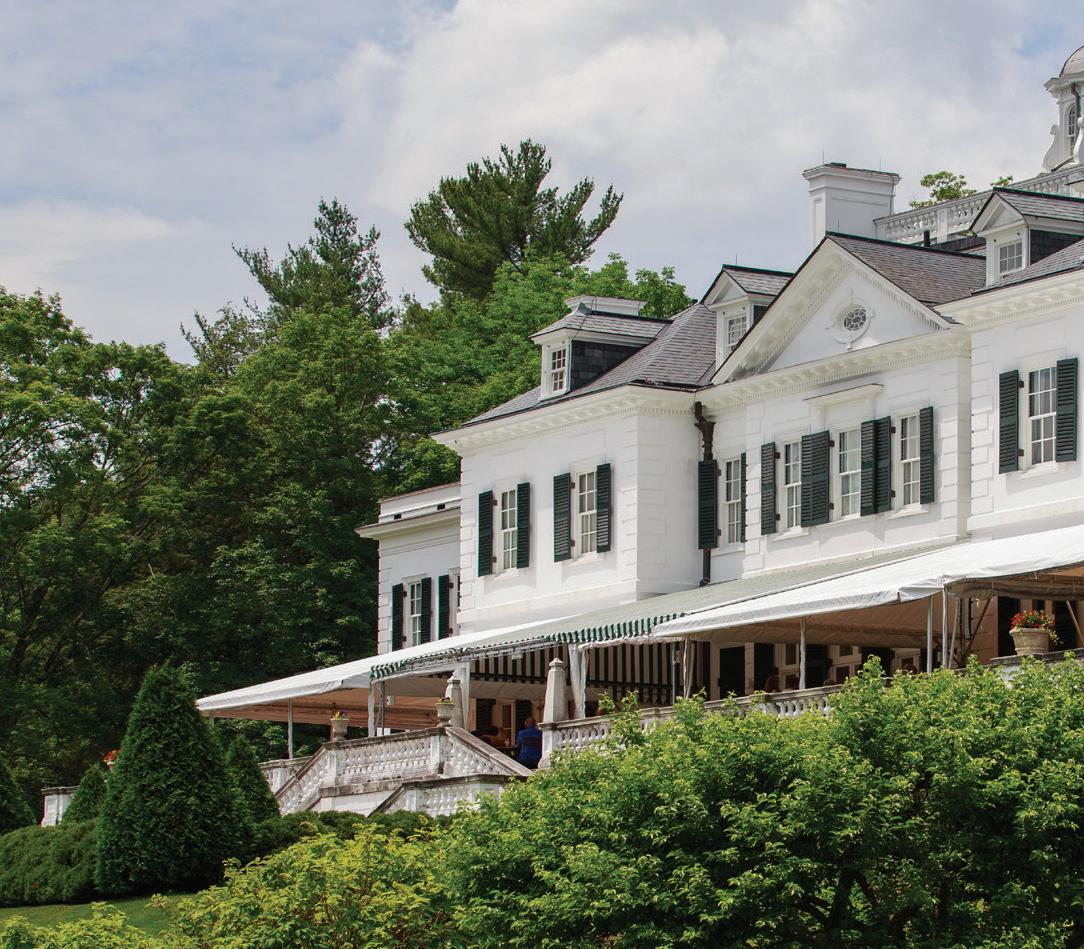
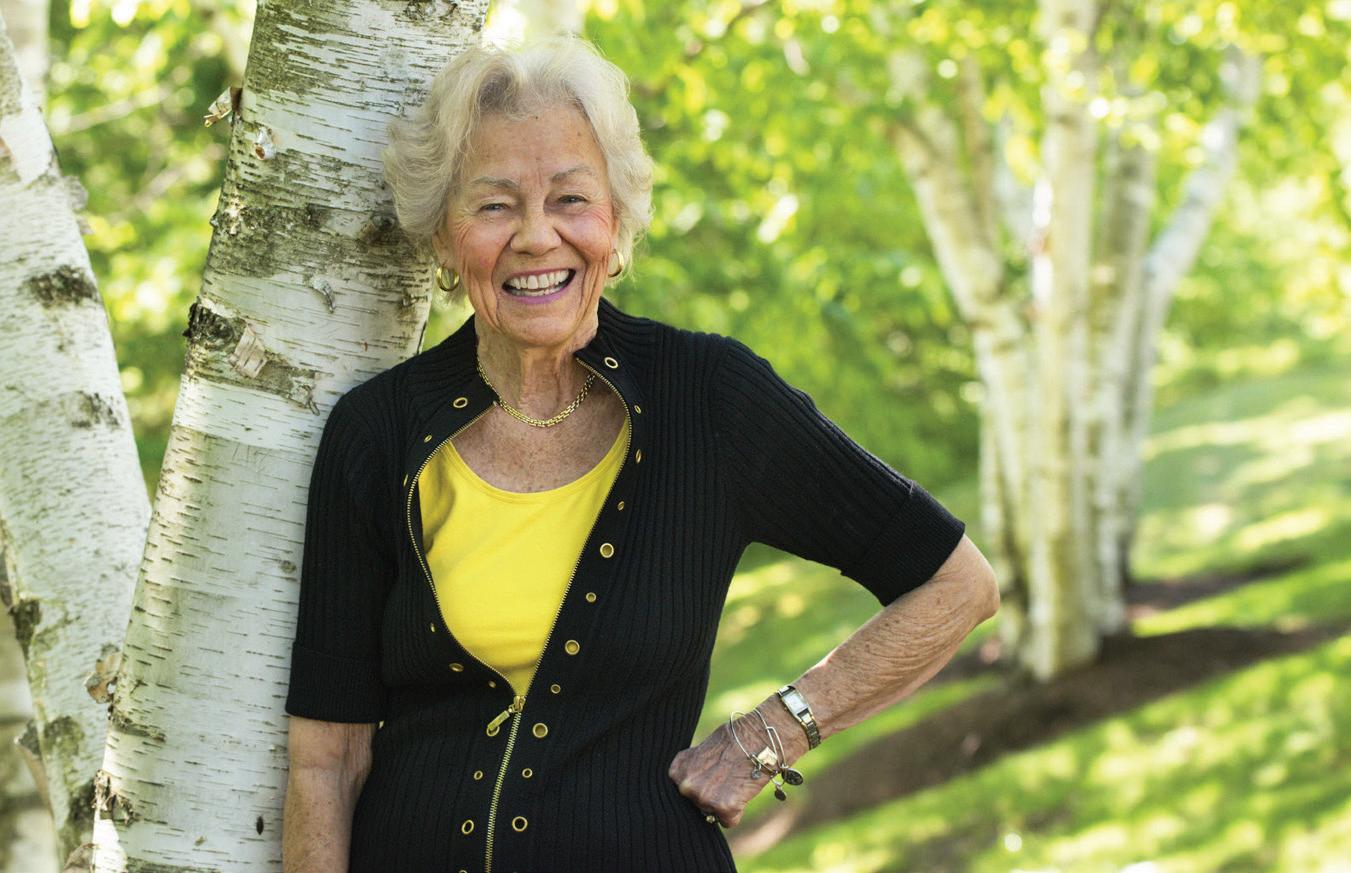
he first thing I do each morning is turn on my computer and see what emails have arrived from Yankee readers. Lately, something new has been cropping up in this correspondence: comments about Weekends with Yankee , the national PBS show in which our knowledge of New England’s special places and its unique people takes center stage. The comments all express the same thing, and many come from viewers who love the region but who live far away. They say the show brings them home.
That was the inspiration from the start—to showcase our stories of New England in a visually exciting half-hour show. Season 3 of Weekends with Yankee debuts this April, and I think the pull toward home will be stronger than ever. We go rafting with one of the first Maine Guides to take adventurers down the thundering Kennebec River. We find puffins in one episode, and in another we go behind the scenes at the famous artists’ colony where Thornton Wilder wrote Our Town , the classic drama of family and community. We meet artisans and a beekeeper, and our food editor, Amy Traverso, continues to explore the flavors of the six states we call home and to spotlight its tastemakers (including Massachusetts food writer Alana Chernila, featured on p. 57).
When I moved to Maine in 1970, Munjoy Hill was where visitors to Portland were advised not to go, even though its view to the bay was a fine reward for the uphill walk. As with many other formerly distressed places, though, over time the energy and vision of the residents has created the sense that anything is possible— including Munjoy Hill’s becoming one of the most vibrant food neighborhoods in a city recently acclaimed as Bon Appétit ’s restaurant city of the year.”
Which got us thinking: What does it mean to be called “restaurant city of the year”? And suppose we lived in Boston, which has long been the New England epicenter for chefs and diners alike? Amy Traverso calls Boston home, yet she has always been drawn to and fascinated by Portland’s rise in the culinary world. So she set herself a challenge: Eat out (a lot), talk to chefs (many), and devise a scorecard for readers to show which city they should turn to for their favorite foods. It became a delicious story for all of us here [“Food Town Showdown,” p. 81].
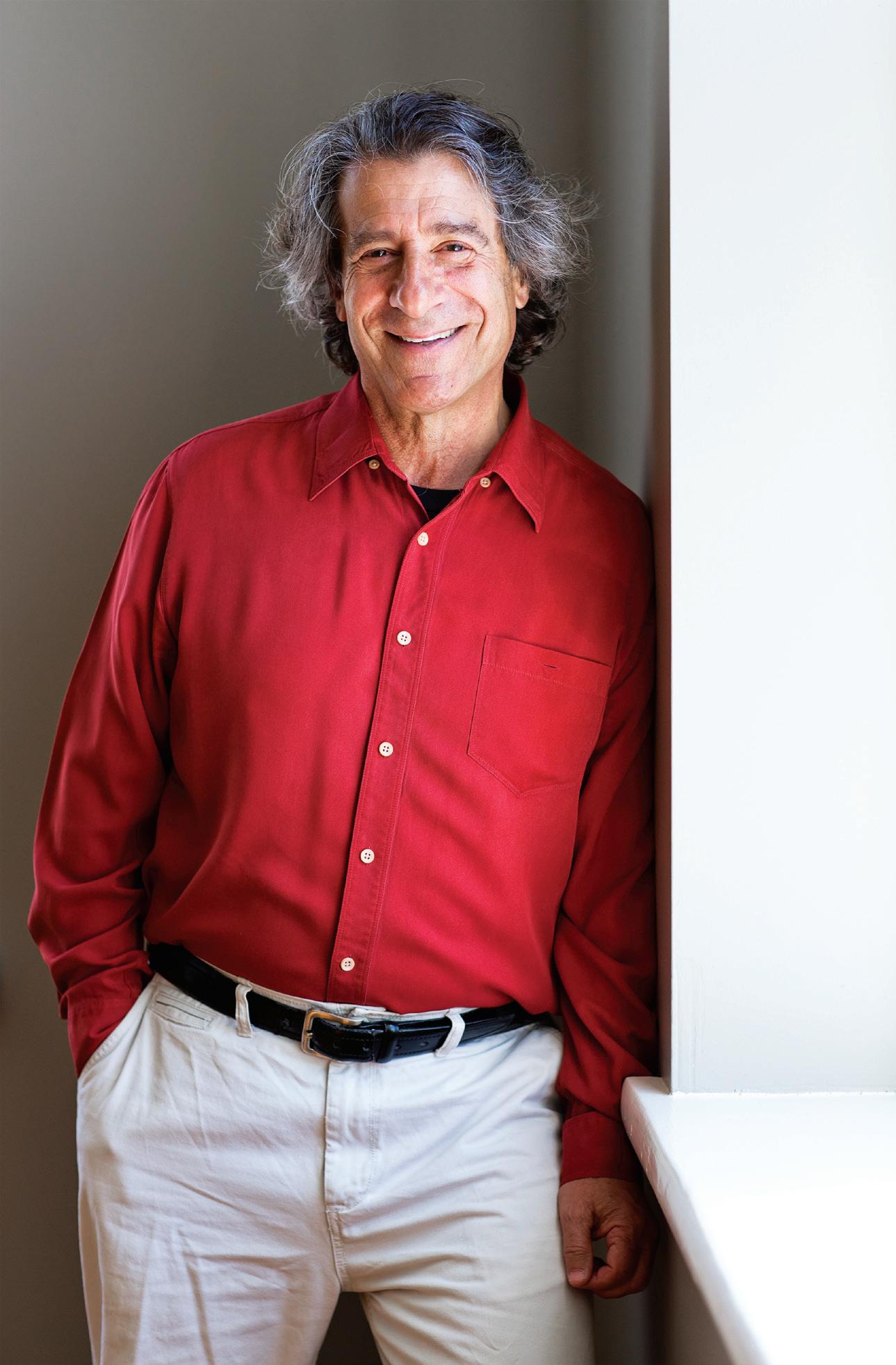
I hope that soon after this issue reaches all of you, I will turn on my computer in the morning and find out what you say about your own favorite spots to eat, in your own personal restaurant city of the year.
Mel AllenAlways keep your dear pet close with our personalized paw necklace. Crafted in our Rhode Island studios of polished sterling silver, our paw can be engraved with the name or initial of your choice! This special keepsake celebrates your love for your constant companion.

$59 Plus Free Shipping Sterling Silver Personalized Paw Necklace 18" length. 1" wide pendant. Rolo chain with a lobster clasp. Please allow an extra 2-3 business days for personalization. Personalized items cannot be returned. Shown larger for detail.
Ross-Simons Item #904390
To receive this special offer, use offer code: PAW38
1.800.556.7376 or visit ross-simons.com/paw
On the outskirts of civilization, the call of the coyote stirs divided sympathies.
heard the coyotes again last night. The first cry, sweet and clear, rose from the wooded ridge across the stream from our house. Then other voices joined, lifting and eager. I lay awake and listened, feeling a prickly primal thrill.

Fifteen years ago, only a few months after my husband, Gregg, and I had begun our veterinary practice, 34 sheep were savaged in a hillside pasture only a half mile from our farm. Newspaper articles described in detail the scene of slaughter and speculated that a coyote pack had been teaching its pups how to kill. Local hunters used the incident as evidence that a coyote hunt was necessary. Game wardens and wildlife biologists, however, seemed divided over what had killed the sheep; some said it could have been a pack of domestic dogs. A neighbor who keeps her own sheep near that pasture said she loses a ewe or two to coyotes each year, but she pointed out that when sheep are threatened, they just stamp their feet—ineffective against predatory canids, wild or domestic. For that reason, she keeps a guard dog with her flock.
One early spring morning several years ago, after we had heard the coyotes carrying on for hours, Gregg and I spotted a small blond lump just visible in the mist along the far edge of our southernmost pasture. From the kitchen window I thought it might be Phoebe, my favorite Cochin hen, the one with the fluffy tan pantaloons. Gregg went to investigate. He returned carrying the limp body of Toby, our neighbor’s cocker spaniel. Gregg brought the dog into the veterinary clinic to clean him up before calling his owner, an elderly lady who lived on the other side of our field. He thinks the coyotes were dragging the body back across the road to their den but dropped it when they touched our horses’ electric fence.
Last October, our son’s miniature dachshund, Snooky, vanished. We had let him out before bed, and he simply failed to return. We searched for him for days, walking the road that fronted our property, checking the ditches to see if he had been hit by a car. He was too ornery to have been stolen, and too old and pudgy to have run away, so finally we suspected the coyotes.
Not long after Snooky disappeared, Gregg and I spent the afternoon exploring a rockfall on the eastern slope of the ridge near our home. Large tumbling boulders had formed small caves, and we thought this must be where the pack lived. We found several dens, peering into them with flashlights. Outside, we saw scat and a few tufts of gray fur, but nothing else. We were half hoping to find Snooky’s collar or what was left of his remains to bring back to bury, to have an answer.
Despite these incidents, I know that the coyotes are profoundly shy, coming around only at night, eating mainly mice and other small mammals. So they take a weak deer now and again, or an old ewe foolishly stamping her feet. I just can’t begrudge them this. If coyotes hover ephemerally on the outskirts of civilization, I guess I have to ask: Who has encroached upon whom?
In the darkness of our bedroom, I listened as the coyotes’ voices gradually dissolved into a chaos of discordant yips, and then, silence. I wondered if I had remembered to close the chickens’ door. Finally, as I waited for sleep, I wondered about the coyotes themselves, living their mysterious lives on the periphery of human vision. In a strange, melancholy way, I like hearing them. The eerie exuberance of their voices reminds me of our life here in northern Vermont—intertwined with wild and domestic animals, with death and life, with a bittersweet blend of hope and truth.







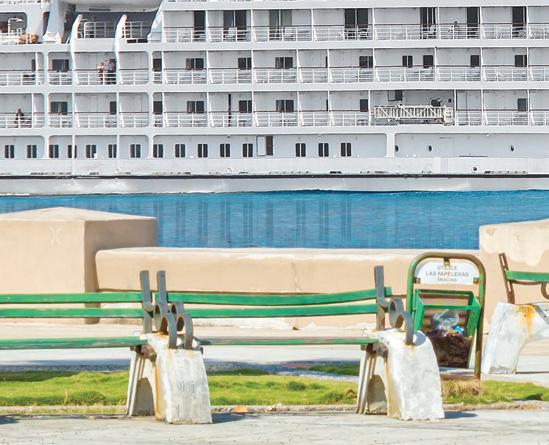




































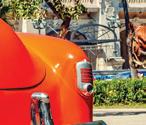
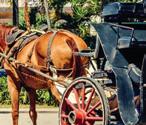

















n early March, I drive a dozen or so miles east to P&R Lumber, the small sawmill and lumberyard I’ve been frequenting for longer than I’ve held a driver’s license. This is no exaggeration: I remember being 15 and riding with my friend Trevor—a year older than me and thus allowed by law to operate a motor vehicle in the state of Vermont—to this same sawmill, where we pawed through the stacks of rough-cut hemlock, spruce, and cedar (but mostly hemlock, because it was cheapest option), the admonition of the mill owner to “put the stacks back the way you found ’em” ringing in our ears.
At the time, Trevor was building a cabin on his father’s land. This was in the aftermath of his parents’ separation, and I think he needed something to call his own, a way to feel grounded and in control of his destiny. We’d strap lumber to the roof rack of his Volkswagen van, put the stacks back the way we found ’em, and traverse the network of narrow dirt roads to the unfinished cabin, singing along to “Panama,” our favorite track off Van Halen’s superb album. I remember how we liked to mime the act of leaning our seats back when that particular verse came around, the one where David Lee Roth sort of sing-speaks the lyrics:
Yeah, we’re runnin’ a little bit hot tonight I can barely see the road from the heat comin’ off of it Ah, you reach down, between my legs Ease the seat back
Of course, it was us reaching down between our legs to ease our seats back, and not the young women who existed mostly (or in my case, entirely) in our imaginations. But still. What mattered was the possibility of it, along with the general excellence of being man-boys set loose on the world, in a van loaded with lumber and outfitted with a booming stereo, and with the excitement of seeing Trevor’s place taking shape. For me, it was a bit of vicarious living, for I liked to imagine that someday soon, I’d be out of my parents’ house, building a place of my own, in possession of a driver’s license and maybe even a Volkswagen van, too.
I still love going to P&R Lumber. They’ve expanded their offerings over the years, and now they stock dressed lumber along with specialty items such as tongue-and-groove pine paneling. A few other things have changed, too: They no longer close for three weeks every fall during
rifle season, and the cash discount is gone. But the self-serve honor system is still in place, and sometimes, if I’m lucky, I get to lean a ladder up against one of the towering stacks to procure the specific species and dimensions needed. In a society that has gone crazy with risk and liability and simple laziness, there is something comforting about a business that encourages its customers to climb ladders in pursuit of their building materials. And then trusts them to accurately report their purchases when it comes time to pay.

P&R is one of two small mills within a 20-minute drive of our home, the other being Dave’s Sawmill, which is owned and operated by Dave Stratton and his son Ben. Dave doesn’t offer the diversity that P&R does—it’s all rough-cut at Dave’s, and you can have whatever species you’d like, so long as it’s hemlock or cedar. I like rough-cut lumber, because rough-cut lumber is what’s known as “dimensional.” A rough-cut two-by-four is actually a full two inches thick and four inches wide, while the two-by-fours found at typical building supply stores are “nominal,” measuring one and a half inches thick and three and a half inches across. To me, purchasing nominal lumber makes about as much sense as buying decaffeinated coffee, or meatless hotdogs, or those fancy jeans that come with holes already worn in the knees. It’s like paying for something that’s supposed to be there but isn’t.




I remember the first time I met Dave Stratton, back in 1999 or maybe 2000. I’d ordered from him a dozen or so hemlock carrying timbers, five-by-nine and 20 feet long. This was when we were building our first house in Cabot, and he arrived with them stacked on the back end of the long flatbed truck he drove at the time. Now, I don’t know how much you know about hemlock, but all you really need to know for







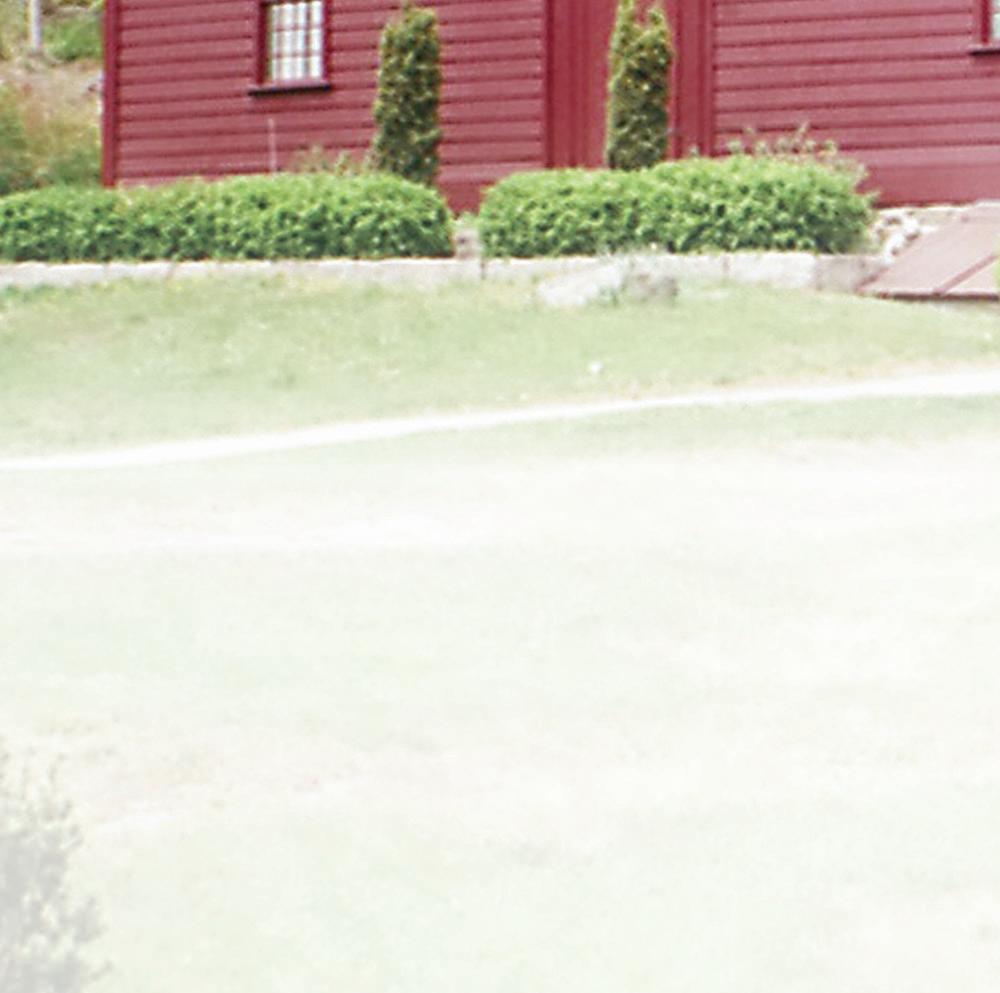
the purposes of this story is that it’s heavy. It’s dense wood that holds a lot of moisture, and these beams were fresh off the stump, almost wet to the touch. I have no idea how much they actually weighed, but I know it was a lot. Did I mention that Dave’s flatbed did not dump? No, I don’t think I did.
So Dave backs his truck up near the house, and I get on one end of the beams, and he gets on the other, and the idea is that we’re going to sort of throw-slide them onto the ground (again, liability not being high on the list of Dave’s pressing concerns). And we count down from three, and heave, and Dave’s end slides magnificently, teetering off the edge of the truck, while my end does … nothing. I grunt and heave again, and I’d like to think I got an inch or two out of it, but I’m pretty sure that’s being generous. Dave takes a moment to assess the situation, then says, not unkindly,
but also very clearly, “Why don’t you just stand back ? ” And proceeds to unload a dozen green hemlock beams by himself.
I try to split my business evenly between P&R and Dave’s, though it really depends on what my needs are. But I want both of these businesses to survive and even thrive, in part from basic self-interest and in part because they embody so much of what I love about rural New England, which by and large is a place where you can still find people scratching out a modest living producing essential goods and services for their neighbors. How many homes in this community rose from the same mill my friend Trevor and I frequented as boys? How many animals sheltered, how many playgrounds built? How many carpenters and loggers kept employed? These are rhetorical questions, of course: No one knows
how many, not exactly. And in the absence of a precise number, the only accurate answer is “a lot.”
At P&R, I load my truck with a few dozen pieces of one-by-ten tongue-and-groove pine, which I intend to use as paneling for interior walls. I keep track of the boards on a scrap of paper, the exact numbers each of eight-, ten-, and twelvefoot lengths. I secure the load with a pair of ratchet straps and walk to the office, where Kathy tallies my order and presents me with an invoice. I hand her a check and head back to my truck, where I tighten each ratchet one click more as insurance against the curving, potholed roads of northern Vermont.
Then I head for home. Bob Seger’s “Turn the Page” comes on the radio. It’s no “Panama,” but it’s pretty good. So I reach down, ease my seat back, and turn up the volume.
Sat., May 11 • 10am-4pm Downtown Portsmouth, NH
See stunning kitchens from some of the Seacoast’s top designers. This annual benefit showcases downtown Portsmouth’s best!

ANNUAL SPONSOR:
PREMIER SPONSOR:





































Seventy-two pieces, rings, earrings, and pendants, have just arrived for spring 2019. Documented, named, described, photographed and put up on our website. We invite you in to see this, our newest collection: rubies, emeralds, sapphires, amethyst, peridot, opals, and diamonds, a classy classic collection of highly practical, we arable jewelry








Keith* is sixty-three at the height of his gem and jewelry designing career Forty years and over fivethousand pieces of jewelry under his belt Keith prices with conservative Yankee sharp-pencil trade wind precision He prices like it was thirty years ago Every gem was hand-selected in Southeast Asia and it shows; the colors perform, dance and sing.




Pre-shop the Trade Wind Collection on-line. You may click and buy, click and call, or find your way to the Port of Portland and our store to see the real thing.









Big Night comes when late winter melts into early spring. Here in central Massachusetts, this happens in late March, or sometimes April, as temperatures make their first-of-the-season climb into the 40s and stay there through the night, and the clouds drop rain instead of snow. It has to be warmish and wet. That’s the weather for amphibian migration. That’s Big Night.
Here’s what happens: Rain falls onto pavement, backyards, cars, houses, and also treetops and leaves and the forest floor. This rain calls to the frogs waiting under leaf litter and to salamanders inside the hollows of downed trees. Or maybe it’s the warmth that calls to them. They hear, anyway, and when the sun goes down, they emerge, moving in the direction of whatever small, seasonal pool of water was the place of their birth. That’s where they’ll breed, and that’s why they travel over wet forest floor, through wet rural backyards, down wet driveways, and across wet streets.
The streets are a problem. When roads run between the forests where amphibians spend the winter and the vernal pools they seek in the spring, there will be accidents. Frogs and salamanders will meet cars and trucks. Thankfully, though, there are some humans—the Big Night volunteers—who will stand watch on those very streets. Last year the city of Keene, New Hampshire, closed North Lincoln Street, and in one night volunteers counted 420 wood frogs, 349 spring peepers, three spotted salamanders, and one red-backed salamander … all crossing between 8 and 10:30 p.m. In other places, volunteers have built and maintained tunnels that run under busy thoroughfares. If
not for these interventions, it’s likely that half the amphibians migrating across roadways would be crushed.

At my house, we eat an early dinner on Big Night. Then we dig out rain boots and slickers. We dress in layers, test the batteries in our flashlights and headlamps. We pack into the car, giddy, and meet up with friends in a parking lot nearby. There’s a trail at one end of the lot, and it meanders by a vernal pool that hosts migrating wood frogs and peepers and salamanders. The kids gather at the entrance to the trail and wait for the pep talk. They shine their flashlights as far as possible down the path in front of them, desperate for a stirring in the wet leaves. I try to slow them down, remind them that we might not see migrants tonight. The joy is in the looking, I say. The fun is in discovering for ourselves if tonight is really Big Night.
You see, even though the amphibian migration is predictable, it’s not in a way that can be printed onto a calendar. Small differences in the conditions between locations must be considered. It can be raining in our driveway, and not raining at all at our favorite vernal pool. It can be warm enough at home, and much too cool over there; even the friendliest 45-degree afternoon can drop a shocking 10 degrees by the time the sun has fully set. Add to all this the individual personalities of the amphibians— they move when their bodies tell them to move. Some will go a bit earlier than the others, and always there will be stragglers. Migration can happen en masse over several perfect wet, warm nights or spread out over weeks of partly spitting, partly dry, sometimes balmy, sometimes chilly ones. Big Night can be elusive.
In early spring, many frogs and salamanders leave their woodland homes to find rain-fed pools for mating. Often they must cross busy roads—and that’s where humans step in to help.ILLUSTRATION BY MATT PATTERSON
Still, it’s a night that stays with you, a weather pattern you can teach yourself to recognize year in and year out. When the right conditions come around again, you listen closely to meteorologists and talk to amphibianloving friends, and eventually that night arrives when you feed the kids cereal at 5 o’clock and dress them for rain. Even though it’s not for sure yet. Even though it’s a school night.
Hoods up, pants in our boots, standing at the trailhead, we know we might be here too early, or too late. The kids try to contain their Big Night energy, but can’t. They strobe the woods with their flashlights as we walk, listening for the sounds to celebrate: the quacking call of wood frogs, the shrill pip of spring peepers. In the hierarchy of Big Night thrills, first there is the warm rain, then there is the calling of migrating frogs, and finally, the fondest wish
The best way to experience Big Night is to find a vernal pool you can reach by foot. This easy access means you can visit it regularly, upping chances that you’ll spot migrants. (And by not driving, you’ll likely save a few amphibian lives, too.)
Learning more about vernal pools and the spring amphibian migration can be as easy as contacting your local nature center. The Harris Center for Conservation Education in Hancock, New Hampshire, runs volunteer “crossing brigade” programs each year, and its website includes a list of similar programs throughout the Northeast (go to harriscenter.org and search for “other crossing brigades”).
Wildlife tunnels have been an effective solution to the road crossing problem, and several New England communities have installed them, including Monkton, Vermont, and the Massachusetts towns of Amherst and Princeton. In fact, the Hitchcock Center for the Environment in Amherst helped build the first amphibian tunnels in North America, back in 1987; you can read about tunnel operation or volunteer to help with maintenance at hitchcockcenter.org (search for “salamander tunnels”).
of everyone present, there are amphibians in the flesh and on the move.
“I see one!” someone shouts, and there follows a stampede of humans. One spotted salamander, frozen in the beams of seven flashlights. He’s five





inches long, black and yellow-spotted. His wet skin shines. We squat around him in a circle, get quiet at last.
“He’s perfect,” someone whispers. All around us, late winter melts into early spring.







How familiar are you with the geology, history, literature, and folklore of New England’s best-known mountains? To find out, take the following test, based on Into the Mountains by Maggie Stier and Ron McAdow (Appalachian Mountain Club Books, 1995).
1. This Vermont mountain was called by the Abenaki “Moze-o-de-be-wadso,” meaning “mountain with a head like a moose.”
2. Herman Melville dedicated one of his novels to this peak, which he could see from his window while he wrote much of Moby-Dick .
3. From a telescope in a hotel atop this Massachusetts peak, visitors could read the numbers on clock towers in Hartford, Connecticut, 30 miles away.
4. The distinctive profile of this mountain appears on Vermont’s official coat of arms.
5. The highest point in Massachusetts east of the Berkshires, this mountain was renamed Mount Adams in honor of the election of John Quincy Adams— four disappointing years later, it was restored to its original name.
6. At the foot of this peak, the only major mountain in New England that is entirely privately owned, was a tavern in which the Green Mountain Boys caroused.
7. The newspaper Among the Clouds was published on this summit from 1877 until World War I.
8. A forest fire in 1907 burned 35,000 acres on this, the second-most-climbed peak in New Hampshire’s White Mountains.
9. A single determined man was largely responsible for buying, preserving, and giving this mountain to the state of Maine.
10. This New Hampshire peak was supposedly cursed by the Indian for whom it is named.
—Adapted from “Climb Every Mountain,” by Geoffrey Elan, July 1996

(born April 16, 1972, in Falmouth, MA). This Pulitzer Prize winner and two-term U.S. poet laureate celebrates her birthday, fittingly, during National Poetry Month. Now the director of creative writing at Princeton University, she returned to New England this winter to accept the Hall-Kenyon Prize for American Poetry, which is named in honor of the late New Hampshire poets Donald Hall and Jane Kenyon.

“Listening to music and lyrics and watching movies, I think, uses a lot of the same muscles we use in reading and experiencing poetry—and yet we somehow forget that we have those whe n it comes to sitting down with a book of poems.”1. Mount Mansfield; 2. Mount Greylock; 3. Mount Holyoke; 4. Camel’s Hump; 5. Mount Wachusett; 6. Mount Equinox; 7. Mount Washington; 8. Mount Lafayette; 9. Mount Katahdin; 10. Mount Chocorua








If you’re tired of having your outdoor enjoyment rained on baked out or just plain ruined by unpredictable weather...
At last there is a solution! One that lets you take control of the weather on your deck or patio, while saving on energy bills! It’s the incredible SunSetter Retractable Awning! A simple easy-to-use & affordable way to outsmart the weather and start enjoying your deck or patio more...rain or shine!
The SunSetter is like adding a whole extra outdoor room to your home... giving you instant protection from glaring sun...or light showers! Plus it’s incredibly easy to use opening & closing effortlessly in less than 60 seconds!
So, stop struggling with the weather & start enjoying your deck or patio more!
For a FREE Info Kit & DVD email your dvd@sunsetter.com

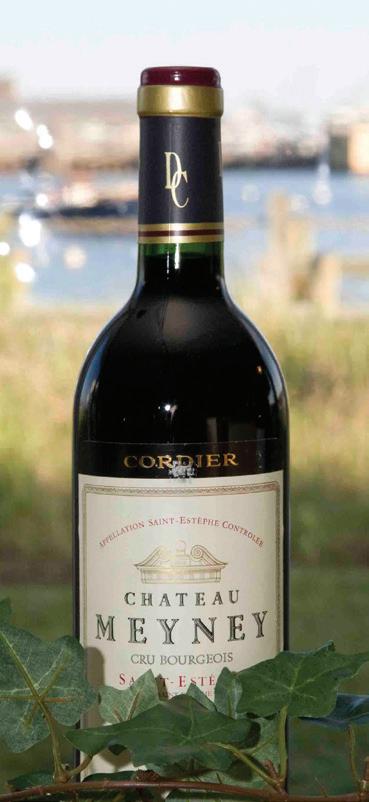
MAY 15-19, 2019 | Nantucket, Massachusetts
This Nantucket event spotlighting worldclass food and wine is sure to leave a lasting impression. The five-day Nantucket Wine & Food Festival combines gourmet flavor with Cape Cod beauty through tastings, dinners, and seminars.


There are dozens of scheduled events, including a walk-around Gala featuring winemakers from around the world and a wine tasting with New York Times chief wine critic Eric Asimov, as well as plenty of downtime for attendees to check out the local and regional vendors in the Culinary Tent. No matter what you choose, there is an event to educate and entertain every food and wine enthusiast.

SEPTEMBER
Amy Traverso, Yankee senior food editor and cohost of Weekends with Yankee, will be leading a demonstration class, “For the Love of Apples,” that will take you from the orchard to the kitchen with both sweet and savory recipes. This menu starts off with a tasting of Carr’s Ciderhouse Hard Cider, followed by Bacon-Wrapped Dates with Apple Slaw, Pork and Apple Pie with a Cheddar-Sage Crust, and a Pear and Apple Cobbler with Lemon Cornmeal Biscuits. This is a class you don’t want to miss!

Make sure to check out Stonewall Kitchen’s 2019 October-May class schedule. Classes feature talented in-house chef instructors, celebrity chefs, and cookbook authors. Classes can be found online at stonewallkitchen.com, or you can call 877-899-8363 to receive your own catalog.
 IMAGES COURTESY OF NANTUCKET WINE & FOOD FESTIVAL
IMAGES COURTESY OF NANTUCKET WINE & FOOD FESTIVAL
Celebrating the people, destinations, and experiences that make the region and Yankee Magazine so unique. Follow along @YANKEEMAGAZINE #MYNEWENGLAND





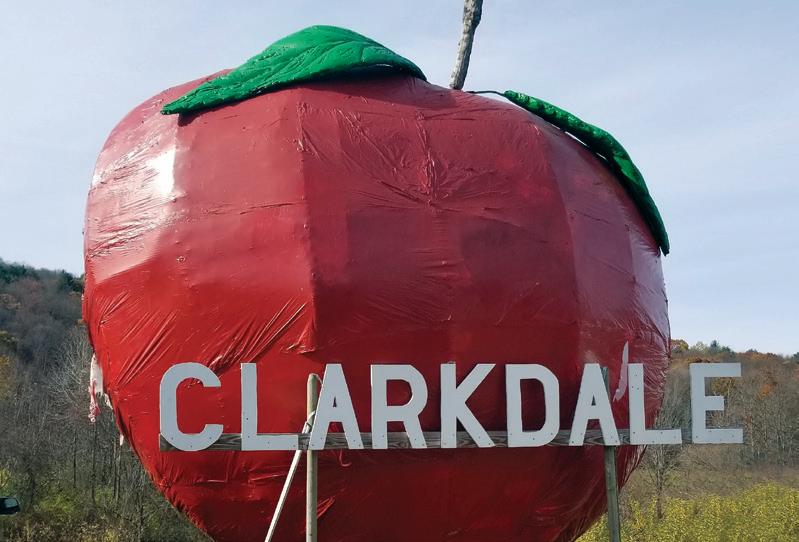
Yankee recently teamed up with the Massachusetts Office of Travel and Tourism at Franklin County Cider Days. Amy Traverso, Yankee senior food editor and cohost of Weekends with Yankee, shared some of her favorite apple hacks, while visitors explored bucolic orchards, tasted a variety of ciders, and celebrated all things apple.

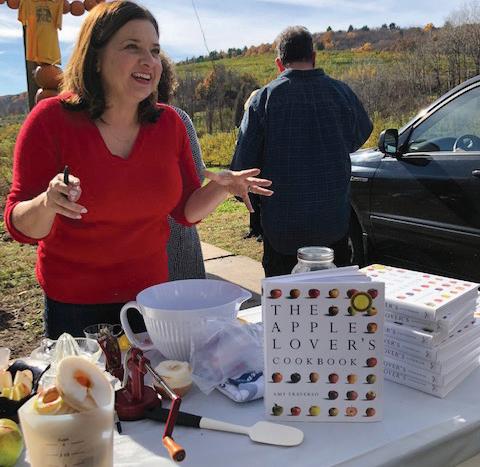
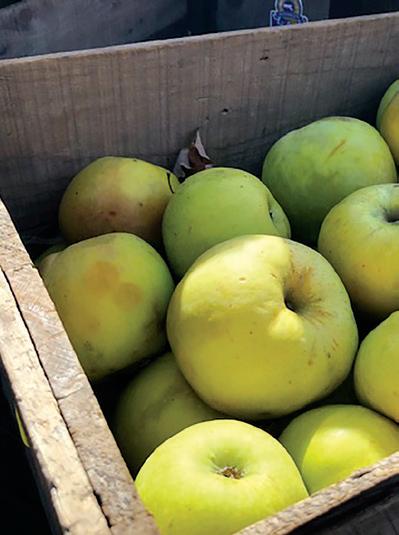
 BY ANNIE GRAVES
BY ANNIE GRAVES
This is no one-shot fixer-upper saga. It’s more of a renovation epic.
I’m standing in the doorway of what appears to be a pretty one-room schoolhouse, dropped here from 1800. The bell is silent, though its dangling rope is tempting. The front door has a twin right beside it: Boys enter through one opening, girls through the other. A field unfurls to my left, and the smell of hay, not uncommon here in Tiverton Four Corners, Rhode Island, hangs in the air.
A chilling cry rings out from Sakonnet Farms, a picturesque tumble of buildings on the other side of the schoolhouse, where eggs and jams are for sale. Moments later, under a cloudless blue sky, I stare down a peacock. He appears to be laying claim to the front yard, and who am I to argue?
“I call him Curious George,” says Kristin Silveira, when she stops by. “We can’t seem to catch him, but he always wants to know what’s going on.”
In fact, this is no longer a schoolhouse. It’s a modern-day vacation rental that Kristin, 43, and her husband, Adam, 46, restored to exterior authenticity in 2011. Inside, it’s my fantasy one-floor living—open and airy, 1,075 square feet, with a stainless steel kitchen and granite countertops, plus a generous helping of vintage memorabilia: wooden desks, roll-up maps, and antique report cards.
The Silveiras also own the adjacent Sakonnet Farms and its mini menagerie of pigs, goats, chickens, ducks, and one errant peacock. Free-range eggs in rainbow colors sit in my fridge, a perk of staying here. Meanwhile, we sit at the large kitchen island as Kristin explains how the schoolhouse was a catalyst for their B&B dynasty, an assortment of fixer-uppers that all hunker nicely under the Sakonnet Farm & Stays name.
While from the outside this structure still resembles the c. 1800 schoolhouse it once was, owners Kristin and Adam Silveira have transformed it into a rental cottage with all the comforts of home—and then some (e.g., gourmet kitchen and whirlpool tub).

“We thought we’d fix it up and do a year-round rental,” Kristin remembers. And it was supposed to be easy—the exterior of the building had been freshly remodeled with a conventional front door and windows when they bought it, so only the gutted interior needed work. She points to a sepia-toned photo, hanging on the wall. “Then we heard it used to be a one-room schoolhouse.”
Adam did the research, and learned it was true. “Then we had to ask ourselves, did we really want to take apart a finished exterior?” She looks at me, knowing it’s a crazy question. In the end, Adam made a scale drawing of the front, and they re-created the schoolhouse, right up to its cupola. Inside, they laid 10-inch-wide plank pine, installed cupboards and lacquered them deep olive, built a granite-topped island, and painted everywhere. “It took six months of construction, another six to decorate,” she says, mostly with antiques snagged on eBay. The 100-year-old cast iron bell came from a one-room schoolhouse in Ohio.
Meanwhile, they decided to try vacation rentals, instead of residential. The online response was immediate. “We had schoolteachers coming,” says Kristin. “One woman came from California and stayed for a month. We were like, ‘Whoa!’” Buoyed by their success, and just a few months after opening Tiverton Schoolhouse No. 1, the young couple tackled an unfinished new colonial in Little Compton … and then a magnificent estate in Adamsville—
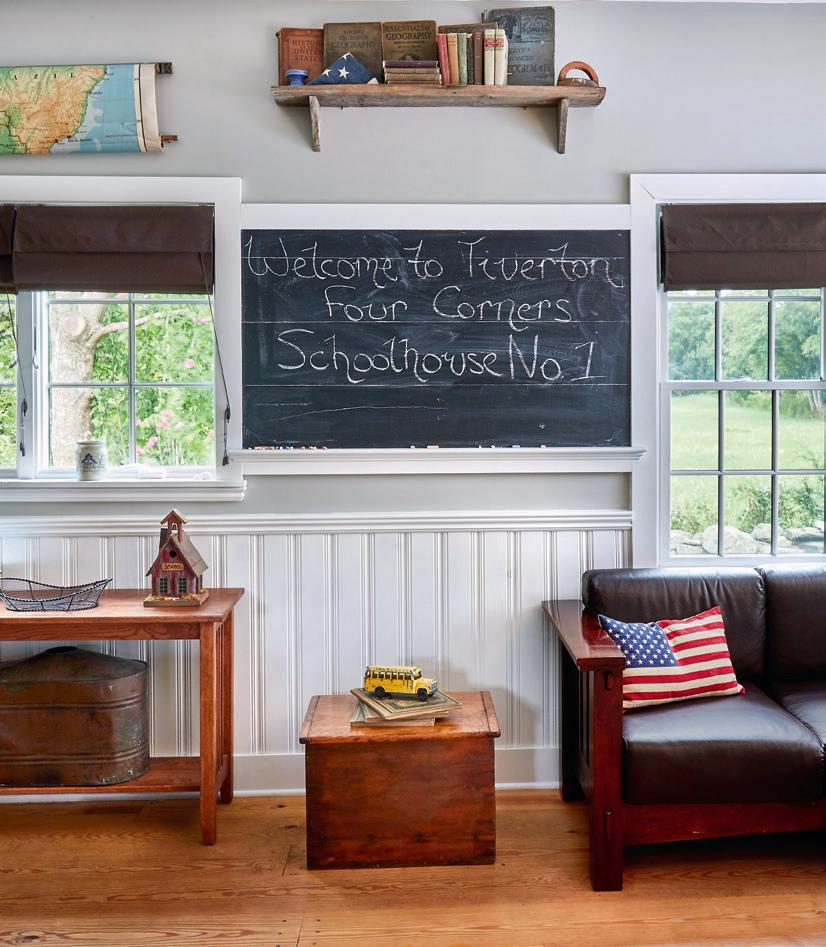
But wait a minute.
How did they manage this? The Silveiras were raising four children (Alyssa, now 20; Megan, 19; Jami, 17; Jonathan, 15). She’s an RN; he’s a supervisor for the electric company, with an engineering background (in other words, don’t try this at home). Plus they were rehabbing their own house in Little Compton.
“I guess we like to work,” says Kristin, in a classic case of New England understatement. Also, they look for great deals. And the kids help out. Oh, and they do everything—plumbing, electrical,

right
or


carpentry, painting, septic. They even dug their own swimming pool. “I hope you have a backhoe,” I say, half kidding. She smiles. “We made jokes about Adam and his big toy, but it’s the best investment we ever made.”
Back to that halffinished hulk in Little Compton that was waiting to be transformed into a vacation stay that today sleeps eight and is elegantly decked out in Silveirafavored earth tones. “It was abandoned, unfinished, dead birds inside,” Kristin recalls. “We put in a crazy lowball offer, and they took it. We worked nights and weekends for 18 months.” Local artwork hangs throughout, all for sale, thanks to their partnership with the South Coast Artists network. “This was for a different market,” she explains. “Extended families, plus it’s Little Compton—some people are specifically looking for that.”
They took a break. Traveled some, attended to the rentals, caught their breath.
And then … history came knocking in earnest. When we step inside the magnificent 200-year-old Samuel Church Estate in Adamsville, with its

historic tower, Kristin lights up. “This place got us hooked on historic preservation. That part was so exciting— to breathe new life into something so old.”
The elegant Federal is cloaked in weathered shingles. Light streams in through wavy glass that blurs the view like rain. There’s a beehive oven, wide pine floors. But that’s not what kept them coming back, making offers for a year. “It was the tower,” she says, as we stare at the white-shingled water tower, a defining feature of Adamsville. “And then,” she adds, “it’s like we woke up and found this amazing, beautiful house on the property.”
For the third time, they tackled a kitchen. Peeled wallpaper for

left and below : After renovating a two-centuryold schoolhouse and an unfinished colonial, the Silveiras transformed the Samuel Church
months. “We removed all the windows,” she tells me (an exhausting number of 12-over-12s). In the living room, they lifted up the floor and found the original pine boards underneath.
“We worked from November 2016 to June,” Kristin remembers. “We didn’t anticipate how long it would take.” When they got a request to host “a little wedding thing,” they hurried to finish. With time running out, Adam ran over the granite countertop laid out on the lawn, although you’d never know it, looking at the shorn corner. And when he cut the hole for the sink, “the entire piece broke in half.” It’s funny now—and the seam looks intentional—but, “The wedding party was coming in and we were screwing on wall plates. The caterer was helping!”
We’re laughing as we walk to the tower. This past winter, they insulated it, added interior walls, and painted. It’s rented to Kathrine Lovell, an artist who’s landed the most inspiring workspace a creative type could ask for. “Here’s one thing you should know,” she tells me. “Kristin’s the glue in a lot of town projects, even though she’s got so much going on. That’s her superpower.”
But in fact, there’s a shared superpower at work. The Silveiras manage to make it all look effortless. Even fun. Kind of like Tom Sawyer did, when he painted the fence. I suspect that’s partly how they got their kids to lend a hand over the years. This superpower is at work even now, as I climb into my car.
“I think I’ll just stay for a while and weed,” says Kristin, her eyes flicking over the flower bed as she plucks the spindly offenders. And I can’t help it—I want to pitch in.

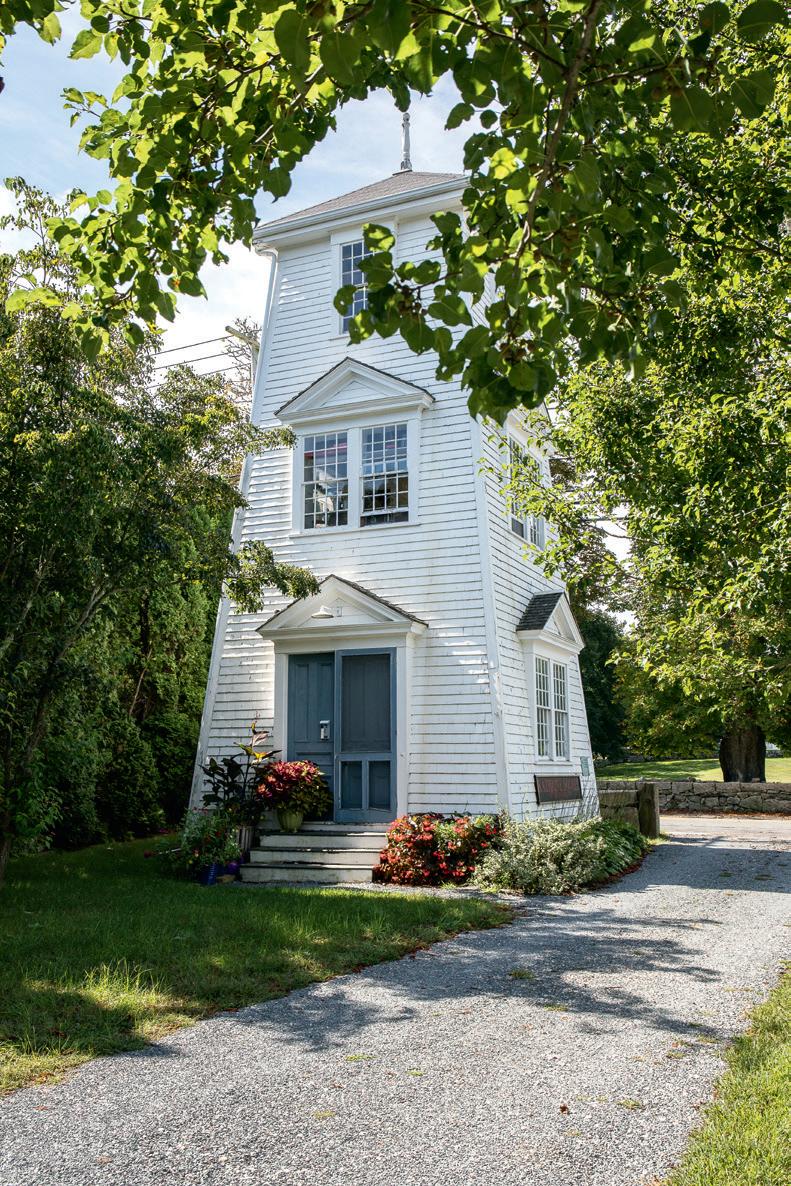




he romance is implicit in Nantucket Looms’ tagline: Handwoven Thirty Miles Out to Sea . But once I’m aboard the Hy-Line ferry, speeding away from the Massachusetts mainland, it snaps into sharper focus. I’m flying over waves toward a speck of land that’s been marinating in whaling lore, ghost stories, and salty mystique for more than 350 years—so much so that two of the most enduring characters in literature, Ahab and Starbuck of Moby-Dick , hailed from Nantucket, whose name translates as “Faraway Land.”
An hour later, the ferry makes its way into Nantucket’s harbor. Celebrities and tourists aside, this is a strikingly handsome historic town, a deeply
authentic place to roll your ankle on cobblestones (“hobblestones,” as the local kids call them) while gazing at the beautifully restored old homes. It is here, in the heart of the village, at 51 Main Street, that you will encounter a rosy brick storefront topped with a gold-lettered sign: Nantucket Looms. Last year, the venerable little business turned 50.
Inside, the first floor is filled with handwoven fabrics begging to be touched—Scottish cashmere and Japanese silk, brushed mohair and Peruvian alpaca—in shades of fog, ocean blue, and celadon, as if the essence of Nantucket could be distilled into textiles. This ocean of tranquility washes up to the second-floor studio, where the light filters across honey pine floors. Wooden looms clack quietly, and shuttles dart back and forth over the threads like dragonflies.
“It’s such a melodic, familiar sound, to walk into the building and hear the looms,” says Bess Clarke, as she guides me through the studio. The weavers’ handiwork is stacked everywhere: ivory alpaca blankets,
cashmere scarfs and ponchos, checkerboard rugs made of linen and cotton. A framed thank-you note from Jackie Onassis hangs on the wall.
Bess grew up sweeping the cobblestones out in front, while her mom, Liz Winship, helped steer the company for 40 years. Eventually, founders Andy Oates, master weaver, and Bill Euler simply “handed [Liz] the keys and retired to Key West.”
Five years ago, Bess took over from her mother and formed a small partnership of women who were already deeply committed. Among them is master weaver Rebecca Peraner, who did three summer internships with Oates while she was a RISD student before coming aboard permanently. “I absorbed so much about the exquisiteness of natural fibers and the simplicity of weave structures,” she remembers. “The designs were timeless and beautiful.”
The third member of the crew is Stephanie Hall, who joined Nantucket Looms in 1996. “Liz needed help at the shop,” she says. “She and I had an instant connection—she was






my mentor.” Together they expanded the business to include full-scale interior design.











“We all collaborate,” Rebecca says. In a flash, the talk turns to kids, school, and the weekend. “We’re all young moms,” she explains.
Bess interjects, “We depend on each other to help raise our families—we even spend Saturdays together at the beach!”
And just as quickly, we’re back to Nantucket.
“It’s inherent in everything we do,” Stephanie says. “It’s our life. It takes a lot to live here. It can be challenging on an island….” She trails off, as the others nod.

They’re mindful of protecting the integrity of their island, not overselling or exploiting it—not being too “Nantuckety,” as Rebecca puts it. At the same time, they’re weaving this coastal life, this cottage style, into pale alpaca throws and frothy mohair fringe. “Authenticity is a big thing for us,” Rebecca says.
I watch as a young weaver flicks the shuttle across her loom, her hands knowing. She’s weaving a romantic lifestyle into this throw, but it’s founded on something real.







“What Andy and Bill put value on was so special,” Bess says. “There was nothing ostentatious or overdone. And they passed it down to us.” She checks with her partners, this closeknit group whose members call one another “friends, business partners, sisters.” And she adds, “Liz, Bill, Andy—their voices are still very much alive in our heads.”
Back out on the street, wandering through a village that feels timeless, I’m thinking about these women, this island, the traditions of Nantucket. Earlier in the day, someone said to me, “Women always ran this town, because their men were away.” I’ve just met three.
To buy or for more information, go to nantucketlooms.com.

Volcanoes, Beaches, and Rainforests. Explore Costa Rica on a Fully Guided Tour with Caravan.

Caravan makes it so easy - and so affordable - for you and your family to visit Costa Rica. Explore volcanoes, beaches, and rainforests.
Your Costa Rica tour is fully guided and all-inclusive with all hotels, all meals, all ground transportation, and all activities with a professional Tour Director from start to finish. Visit Caravan.com for tour details, weather, airport transfers, hotel photos, frequently asked questions, and more.
Discover why smart shoppers and experienced travelers have chosen Caravan since 1952. Caravan handles all the details while you and your family enjoy a well-earned, worry-free Costa Rica vacation.
“ All hotels were excellent! There is no way I would have stayed in such superior and sophisticated hotels for the price I paid ”
—Client, Salinas, California
“ We found the people of Costa Rica very gracious and friendly. We were very impressed with Caravan ”
—Client, Pottstown, Pennsylvania
“ This was the best vacation I had. It is the only way to see Costa Rica ”
—Client, Plano, Texas
“ Brilliant, Affordable Pricing ”

—Arthur Frommer, Travel Editor
Choose an Affordable Tour
10days Guatemala with Tikal
9days Costa Rica Natural Paradise
8days Panama Canal Cruise & Tour
10days Nova Scotia, Prince Edward Island
9days Canadian Rockies, Glacier Park
8days California Coast, Yosemite
8days Grand Canyon, Bryce, Zion
8days Yellowstone, Mount Rushmore, Grand Tetons
8days New England Fall Foliage
FREE Tour Catalog
Call 1-800-CARAVAN
This award-winning lodge in the heart of Maine’s North Woods is ideal for those who like their wilderness with a touch of luxury.
hotographs can give you a feel for a place, but there are some things you just can’t see without actually being there. Although we had caught glimpses of Moosehead Lake and the view beyond as we drove into Greenville, Maine, the full vista from the Lodge at Moosehead Lake’s perch atop Blair Hill—the lawn rolling down toward the lake and Moose Mountain—is almost too beautiful to describe.

Linda and Dennis Bortis have owned the lodge since 2007. It was Dennis who greeted us and showed us around the property and then to the Allagash Suite, where we’d be staying that night. All of the lodge’s guest rooms have individual themes reinforced with decor and furnishings (including some impressive hand-carved bedposts and headboards); in our suite, the water theme translated into antique oars and paddles as wall accents.

“We weren’t interested in buying an ordinary inn. We agreed we’d only do it for someplace really special,” Linda told us, as we sat by a bank of windows in the comfortable dining room. “This area is still pristine. Even now, there are moments when I just stop and stare at the view.”
The lodge’s main building was constructed in 1917 as a summer residence for a Connecticut banker named Andrew Sloper and his family. Greenslope, as it was called, stayed in the family for several decades and was frequented by Andrew’s children and their families. (An interesting aside: Andrew’s son, William, was a Titanic survivor who was once wrongly believed to have dressed in women’s clothing to gain access to a lifeboat.) In the late 1960s, Greenslope first opened to the public as a restaurant called Lakeview Manor. In a nod to that early incarnation, a vintage restaurant sign now adorns the dining room wall.
Yankee likes to mosey around and see, out of editorial curiosity, what you can turn up when you go house hunting. We have no stake in the sale whatsoever and would decline it if offered.
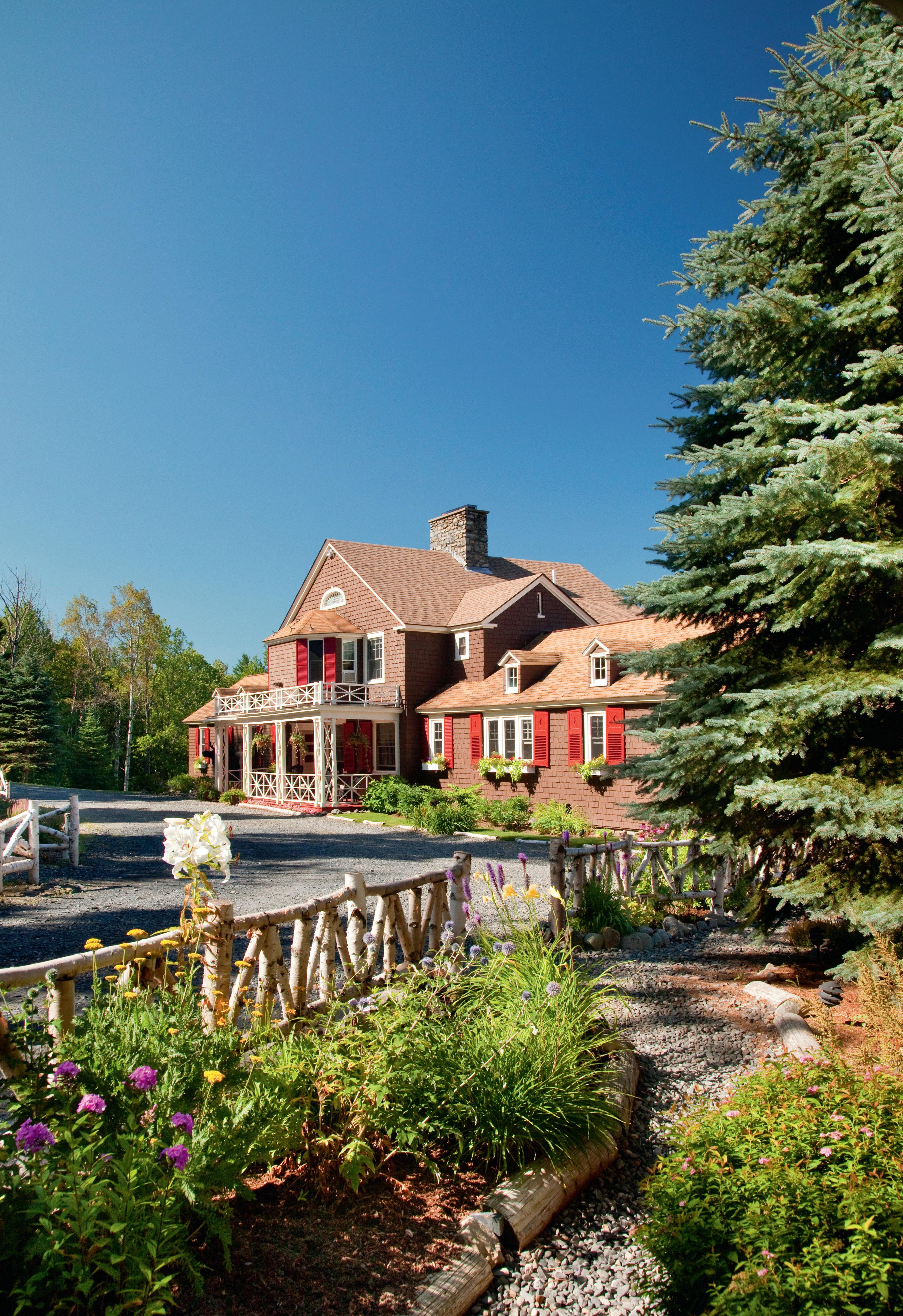
In the early 1990s, owners Jennifer and Roger Cauchi welcomed the first guests to the Lodge at Moosehead Lake. Merging rustic decor with highend accommodations, it was the first inland Maine business to be awarded AAA’s Four Diamond Award for excellence in hospitality, a distinction it has maintained since 1994.

What the various owners of the lodge have long understood is that—since there’s no way to deliver the North Woods to their guests’ rooms—helping visitors get out into the great outdoors is key to success. “Many people who come here are hoping to see moose,” Linda said, “so the lodge started offering moose safaris long ago. We reestablished that and built upon it.” Today, the lodge’s customized outings range from fishing trips and seaplane rides to moonlight canoe trips and hikes up Mount Kineo, where a fire tower provides a
360-degree view that seems to go on forever. (Alas, there would be no time for such adventures during this visit, but we vowed to return.)





Our suite was not in the main lodge but instead in the carriage house, which was first a garage and then a retail shop before being converted into guest quarters. Today, the Lodge at Moosehead Lake features five guest rooms in the main lodge and four suites in the carriage house. Every room or suite has its own fireplace, and all but one has a lake view.
Perhaps the biggest change that Linda and Dennis have made to the property was to construct an innkeeper’s house. This private residence has allowed them to be easily accessible without always having to be “at work”—and naturally it also features a great fireplace and a fantastic view.
The Bortises plan to retire to a house overlooking the Blue Ridge

Mountains in North Carolina. Linda said there’s plenty they’ll miss about living here—the view and the guests, of course, but many other things, too. “There is always something to do, always a room to update. I’ll miss the problem solving and the marketing,” she said. “And the decorating. I’ve loved that.
“But we still want to travel, too. We love the lodge, but it’s time to change roles. We say to our guests, ‘We’ve gotten to the place where we want to be you.’” Having gotten our first taste, we know just what she means. —Joe
Bills







Located on 7½ acres of land and including a separate 2-bedroom, 2½-bathroom innkeeper’s home, the Lodge at Moosehead Lake is listed at $2.5 million. Contact Kimberly Swan of the Swan Agency, Sotheby’s International Realty, at 207288-5818, or go to maineinnsforsale.com.
For three generations, the builders, blacksmiths and craftsmen at Country Carpenters have put their hands and hearts into designing and building the finest New England Style buildings available, using hand-selected materials, hand-forged hardware, hand-built and hand-finished by real people. You can feel the difference in your heart.
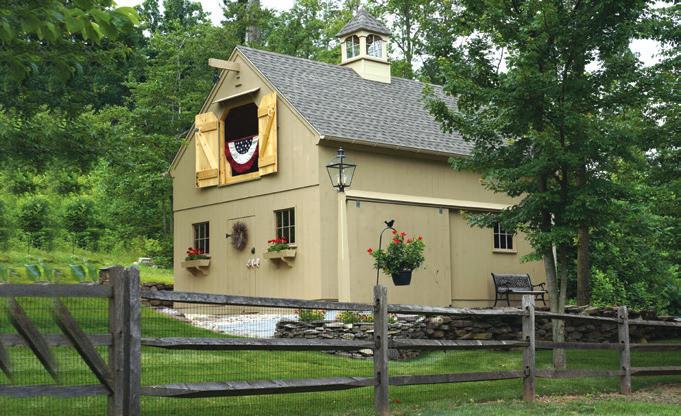




















are handmade using the finest quality ingredients,and are fully cooked before packaging.





One dozen delicious pierogi are nestled in a tray, making a one pound package of pure enjoyment!

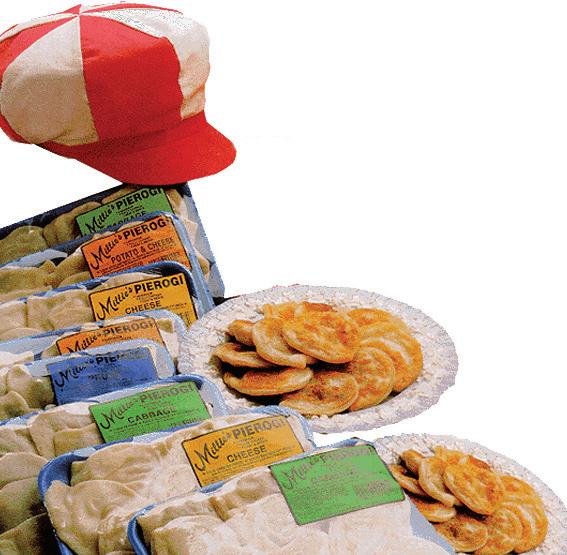
are HANDMADE using the finest quality ingredients, and are fully cooked before packaging. One dozen delicious pierogi are nestled in a tray, making a one pound package of pure enjoyment!
You can get Millie’s Pierogi with these popular fillings:• Cabbage • Potato & Cheese

• Farmer’s Cheese
• Blueberry • Prune
• Potato & Cheese with Kielbasa • Potato & Onion
Turns any day into an occasion – order today!








Box of 6 trays-$42 • Box of 10 trays-$63
Box of 6 trays-$46 • Box of 10 trays-$69
Polish Picnic-$43.50 • Polish Party Pack-$66
Polish Picnic-$45 • Polish Party Pack-$69
Kapusta & 5 trays–$45.50 • Plus Shipping
Call


Kapusta & 5 trays–$49 Plus Shipping
129 Broadway, Chicopee Falls MA 01020












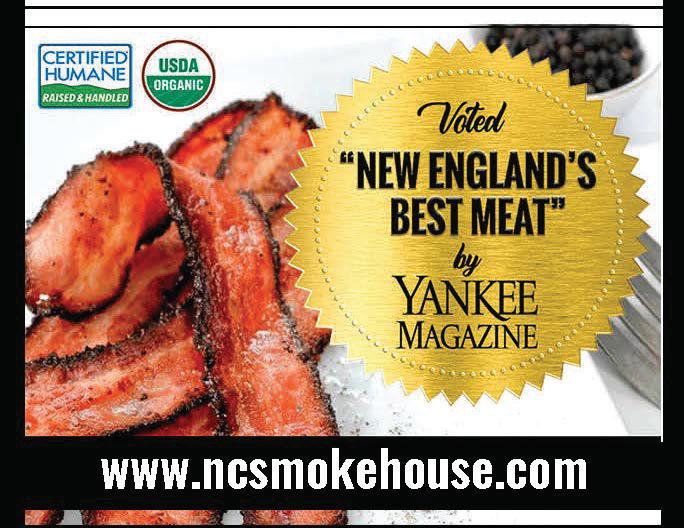




WEST COAST COOKING STAR CORTNEY BURNS FINDS INSPIRATION IN NEW ENGLAND’S SEASONAL FLAVORS.
BY ALANA CHERNILAVERNAL EQUINOX SALAD

SPRING CHOWDER WITH PEAS, POTATOES, AND CLAMS


Cortney Burns moves quickly along a forest trail in North Adams, Massachusetts, her small frame bundled in layers, dark hair pulled into a ponytail. She’s scanning the wet ground, looking for ingredients. Soon she spots a dense green weed.

“That’s edible,” she says, pointing to the mass of textured leaves and purple flowers. It’s creeping charlie, an invasive ground cover and the scourge of many New England gardeners. In Burns’s eyes, however, it’s a quality ingredient with a sweet, grassy flavor.
Finding the flavors of a place and building a cuisine around them is at the core of Burns’s cooking philosophy, and every dish she makes reflects it. But what’s remarkable is that she’s only a recent transplant to the Northeast.
For the past several years Burns was a star chef at Bar Tartine in San Francisco, where she also earned a James Beard Award for the cookbook Bar Tartine: Techniques & Recipes. Despite that success, however, Burns couldn’t say no when she was invited to join the team at Tourists, a modern-rustic hotel that opened in North Adams last year to critical raves.
“This project was based on a sense of travel and wonderment,” she says. “[It] was something I couldn’t necessarily do in Northern California. It was so exciting to come where there was space for something new.”
After moving to North Adams in 2017, Burns began learning the ingredients in the landscape around her. The changing seasons inspired her devotion to fermentation, preservation, and seasonality. “I could get asparagus any day of the year in California,” she says. “But here, the seasons really do dictate the menu.”
As this story was going to press, Burns turned over daily operations of the Tourists kitchen to Corey Went worth, formerly of Boston’s Flour, in order to devote more time to her new cookbook—which undoubtedly will showcase some of the delicious lessons she’s learned from her stint in New England.



The following recipes are a few of Burns’s favorites for spring. The techniques are simple, but the preparations and ingredients reflect her sophisticated, seasonally inspired style.

TOTAL TIME : 50 MINUTES
H ANDS- ON TIME : 50 MINUTES



During the transition between winter and spring, it can be a challenge to eat seasonally. This salad captures the moment exactly, using fresh and cooked vegetables to satisfy the cravings of both seasons.
FOR THE VINAIGRETTE
½ cup extra-virgin olive oil, plus more for drizzling



¼ cup lightly packed fresh dill leaves
¼ cup fresh lemon juice
1½ teaspoons honey
½ teaspoon kosher salt
¼ teaspoon freshly ground black pepper
1 clove garlic
FOR THE SALAD
Kosher salt
4 eggs
3 cups cooked or drained canned white beans, like cannellini or gigante, rinsed
6 tablespoons extra-virgin olive oil, plus more for garnish
2 tablespoons fresh lemon juice
½ teaspoon red pepper flakes
Freshly grated lemon zest (from 1 lemon)
Freshly ground black pepper
2 medium fennel bulbs

4 tablespoons grape-seed or olive oil, divided
1 pound asparagus, trimmed of woody ends
1 bunch radishes, such as breakfast or cherry bomb radishes, greens removed
Toasted sunflower seeds and fresh dill, for garnish
First, make the vinaigrette: Combine all the ingredients in a blender
and puree them until smooth.
Next, make the salad: Fill a medium saucepan with 2 quarts water and 2 tablespoons salt. Prepare an ice bath in a large bowl. Bring the pot of water to a rolling boil over mediumhigh heat, then gently lower the eggs into the water and cook for 6½ minutes. Drain, immediately transfer to the ice bath, and peel once completely cool. (Soft-boiled eggs can be made 1 to 2 days ahead; just wait to peel until you’re ready to serve.)
Combine the beans with 6 tablespoons olive oil, lemon juice, ¾ teaspoon salt, red pepper flakes, lemon zest, and several grinds of pepper in a medium bowl. Stir with some force to combine, allowing the ingredients to form a creamy dressing. Let the beans marinate at room temperature while you prepare the rest of the salad.
Preheat the oven to 325°. Halve the fennel bulbs lengthwise and trim away any brown bits or tough outer layers. Reserve half of one bulb and set aside, and cut the other three halves lengthwise into thin wedges, leaving the core intact. Gently toss with 3 tablespoons grape-seed or olive oil to coat.
Cut the reserved fennel bulb half crosswise into very thin slices. Slice a quarter of the asparagus into similarly thin coins, followed by a quarter of the radishes. In a medium bowl, toss the sliced vegetables with just enough vinaigrette to coat, about ¼ cup, and set aside. Reserve the remaining dressing for future salads.
Set a cast iron skillet over mediumhigh heat. When the pan is hot, add the remaining whole asparagus, working in batches so the spears don’t crowd the pan. When they’re lightly browned in places but still firm and bright green, remove from the skillet and season with salt. When the spears are cool enough to handle, cut them into 2-to-3-inch pieces.
Halve the remaining radishes lengthwise and toss them with 1 tablespoon grape-seed or olive oil. Cook them, flat side down, in the same skil-
let in which you cooked the asparagus, giving them a gentle press with your spatula to encourage even browning. Cook until brown but not mushy, 2 to 3 minutes. Remove the radishes from the pan and lightly season with salt. Working in batches, arrange slices of oil-tossed fennel in the hot skillet so as not to crowd the pan. Cook until deeply golden, about 2 to 4 minutes per side. Remove from pan. Reduce heat to medium-low. Add the beans in an even layer, then transfer the pan to the oven and cook until warmed through and creamy, 5 to 10 minutes. Use the back of a spoon to coarsely mash half of the beans. Spread the warm beans over individual plates or a platter. Top with the shaved raw vegetables. Arrange the browned asparagus, radishes, and fennel over the top and gently tear the eggs in half, tucking the vegetables around the eggs. Salt the runny yolks and top each one with dill, olive oil, and sunflower seeds. Serve immediately. Yields 4 servings.
To Tal T ime : 90 minu T es
H ands- on T ime : 75 minu T es
This bright clam chowder gains its creaminess from a garlicky French-style aioli. That, along with the use of fresh clams, makes it a new take on a New England classic.
FOR THE AIOLI
1 egg yolk, at room temperature
2 cloves garlic
1 tablespoon fresh lemon juice
¼ teaspoon kosher salt
2 ⁄
3 cup olive oil
Freshly ground black pepper
FOR THE CHOWDER
2½ pounds clams (2 to 3 dozen), such as cherrystone or littleneck
2 leeks (about 1 pound)
6 cups seafood stock
1 tablespoon grape-seed or olive oil
12 ounces small fingerling potatoes, halved
1⁄ 8 teaspoon kosher salt
½ pound thick-cut bacon, cut into ½-inch pieces
1 pound fresh English peas, shelled , or 1¾ cup frozen peas
Pea shoots, for garnish (optional)
First, make the aioli: Place the egg yolk in a bowl. Grate the garlic into the bowl with a microplane, then add the lemon juice and salt, whisking to incorporate.
Whisk the yolk mixture vigorously as you slowly add the oil, taking care to fully incorporate it before adding more. As the mixture thickens and becomes opaque, you can add the oil a bit more quickly, still whisking constantly. Season with black pepper. Refrigerate until you are ready to use.
Next, make the chowder: Preheat oven to 300°. Remove and rinse the dark green tops from the leeks and combine them with the fish stock in a large saucepan over medium-low heat. Bring the stock to a gentle simmer and let the leek tops steep while you prepare the rest of the chowder. Cut the remaining leek segments into ½-inchthick rounds, leaving the rounds intact, and rinse thoroughly.
Set a large ovenproof skillet over medium heat, add the oil, and heat it until shimmering. Add the potatoes, cut side down, in a single layer. Sprinkle with 1⁄8 teaspoon salt and allow to cook on the stovetop until they build a light crust, about 10 minutes. Transfer the pan to the oven and cook the potatoes until tender, about 20 minutes. Remove the potatoes from the pan and set aside.
Meanwhile, add the bacon to a second ovenproof skillet. Cook over medium-low heat, stirring occasionally, until the bacon is tender and gently browned, about 10 minutes. Remove from the pan and set aside.
Arrange the leek slices in the pan with the bacon fat. Increase the heat
to medium and cook until the bottoms of the leek slices are lightly caramelized. Add ¼ cup water to the pan, immediately cover with a lid, and cook until tender, 15 to 20 minutes. Push the leek slices to one side of the pan, then add the bacon and potatoes. Cover the pan and return it to the oven to rewarm the contents in unison.
Remove and discard the leek tops from the stock and increase the heat to medium. Add the clams to the broth. Cover the pot and bring to a simmer. Check on the clams after 4 minutes; as the shells open, use a slotted spoon to divide them among the serving bowls, then re-cover the pan and continue until all are opened up. Discard any clams that don’t open.
Add the peas to the broth and cook uncovered until tender, 2 to 3 minutes. Use your slotted spoon to divide them among four bowls, followed by the potatoes, bacon, and leek slices.
Whisk 1 cup broth into the aioli until incorporated, then pour the aioli mixture back into the pan. Cook, whisking regularly, until the broth thickens slightly, 2 to 3 minutes, then ladle it into each of the bowls. Top with pea shoots. Yields 4 servings.
To Tal T ime : 6 hours
h ands- on T ime : 30 minu T es
This creamy, barely sweet custard is a perfect base for seasonal flavors throughout the year. Try infusing it with fennel seeds, cardamom pods, or lavender.
½ cup diced dried apricots (about 10 apricots)
1 cup white wine
¼ cup honey
FOR THE CUSTARD
3 cups heavy cream
2 tablespoons dried chamomile flowers (or 4 chamomile tea bags)
½ cup whole milk, chilled
2½ teaspoons powdered plain gelatin
¼ cup honey
½ cup Greek-style yogurt
1⁄ 8 teaspoon kosher salt Neutral oil, to grease the ramekins or baking dish
First, make the compote: Combine the ingredients in a medium saucepan over medium heat. Bring the mixture to a gentle simmer and cook until the apricots plump up and wine thickens slightly, about 20 minutes. Set mixture aside to cool.
To make the custard: Combine the cream and chamomile flowers or tea bags in a medium pan over medium heat and bring to a gentle simmer. Remove from the heat and let stand at room temperature for 1 hour, or cover and refrigerate overnight.
Another favorite dish of chef Cortney Burns is Chicken and Garden Greens Potpie, shown at left. The herb-packed chicken pie uses a sauce of creamy cauliflower and sweet fennel in place of the more traditional béchamel. And if you follow Burns’s instructions for a glutenfree pie crust, too, the recipe is perfect for those with special diets.

find this recipe online : newengland.com/ chicken-and-greenspotpie
Pour the milk into a large bowl. Sprinkle the powdered gelatin across the top, and let it stand for 5 minutes. Meanwhile, return the infused cream to the stove over medium heat. Add the honey, whisking to combine, and heat until warmed through. Remove the pan from the heat, and, straining it through a fine-mesh sieve as you go, pour the infused cream into the cold milk, whisking constantly. Whisk in the yogurt and salt.
Grease six to eight ¼-cup ramekins or a 2-quart baking dish. Divide the custard evenly among the ramekins or pour it into the baking dish. Cover and refrigerate until set, about 4 hours for ramekins or 6 to 8 hours for a single baking dish.
To serve, spoon the compote over the custard. Alternatively, you can unmold the custard by running an offset spatula or a butter knife around the edge of the ramekin to release it from the sides, then add a scoop of compote over each serving. Yields 6 to 8 servings.

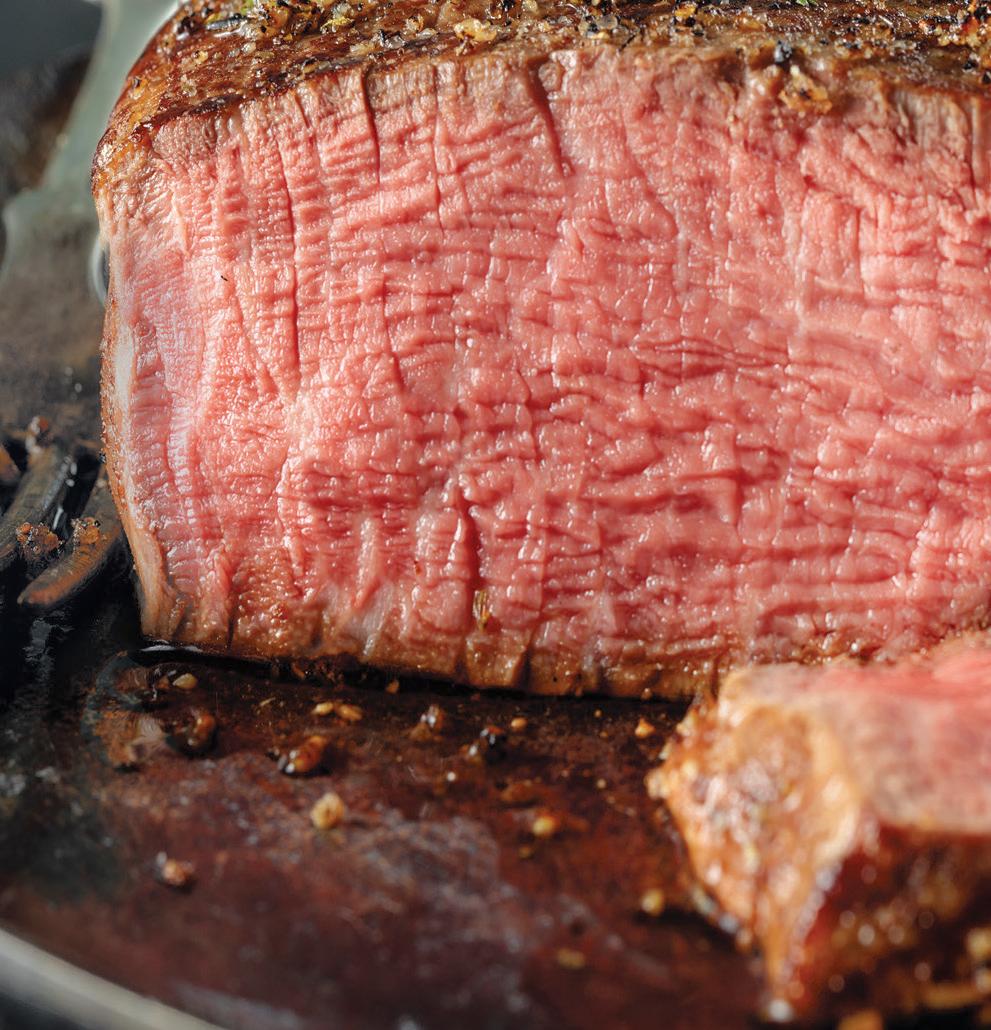













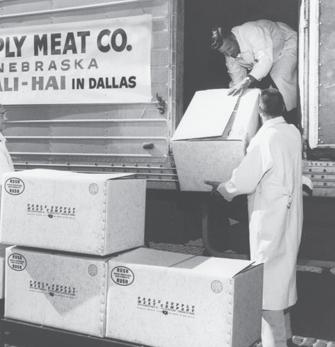



he VerMonte Cristo at Mountain Creamery—the only diner in Woodstock, Vermont—is not a familiar sandwich in the way of, say, turkey and cheddar with a ruffle of romaine, but it’s worth the drive from any point in New England. It’s a breakfast-lunch hybrid, a sweet-savory trickster. There are fillings—a pile of turkey, ham, and Swiss— and homemade bread, which is egg-washed and griddled à la French toast. That’s the standard Monte Cristo format. The twist is the stainless steel ramekin filled with warm maple syrup (the real kind, grade A) for dipping. For people who can never choose between pancakes and eggs, or regular fries and sweet potato ones, the VerMonte Cristo says yes and both.
It’s been flying out of the kitchen today, along with the Vermont Gobbler (turkey, cranberry, sprouts, mayo). A tour bus’s worth of hungry diners has just cleared out. “They all wanted to order at once,” says Teena Clogston, who’s working the shift with her daughter, Amnesty ClogstonRushford. “I said, ‘Your tour guide’s right there. She’s not leaving without you.’”
The Creamery is both a local hangout and a tourist haunt, and the secret of its 30-plus years of survival lies in courting both groups. It helps that Woodstock, home to Rockefellers and the venerable Woodstock Inn, has high standards. But the clincher is that the Creamery was locavore before locavore was cool. Owner Boris Pilsmaker has a farm just up the road that supplies the diner with beef, pork, turkey, eggs, and vegetables in season (though not enough to fully stock a menu this big). Still, it’s as unlikely to rebrand itself around farm-to-table hipsterism as it is to start offering yoga classes downstairs in the ice cream shop. This is a familiar, comfortable place serving familiar, comfortable food.
Even the decor hasn’t changed much since Pilsmaker opened the doors in 1987. He was a Boston kid who started making ice cream to fund his skiing habit, spending winters in Killington and summers on Nantucket. In 1980, he opened Nantucket’s iconic Juice Bar (he sold it in 2000). But as his sons grew, Pilsmaker and his family settled full time in Killington, and he and his wife, Sheila, established Hinterland Organic Farm in 1998. “Twenty-five acres, all trees,” he says. “I cut every tree down on that property.” Now the setup is complete: the farm, the restaurant, and the ice cream shop, whose product is high in butterfat, rich in flavor, and excellent on a piece of mile-high apple pie with a slice of cheddar. Son Ben is even stepping up to take over more of the operations.
Not that Pilsmaker is likely to rest on his laurels, or trumpet his success. He just likes the work. “We do this recipe. We roast our sugar pumpkins that we grow on the farm and mix it with black beans and make an omelet out of it with cheddar cheese,” he says, growing animated. “It’s that opportunity to do different things with food and use your imagination. It’s so rewarding to me to do that.” So food is a creative medium, one might say? A form of self-expression? “Well, I never thought of it like that,” he demurs. “I just like doing it.” He hesitates. “No, I don’t go that far with it ... but I guess you could say that.”
33 Central St., Woodstock, VT. 802-457-1715; mountaincreameryvt.com
Snapshots from a visit to Mountain Creamery and its farm, including a freshbaked mile-high apple pie ( top left), waitresses Amnesty Clogston-Rushford and Tina Von-Gal ( top right), the signature VerMonte Cristo ( middle center ), and owner Boris Pilsmaker with son Ben ( bottom right).
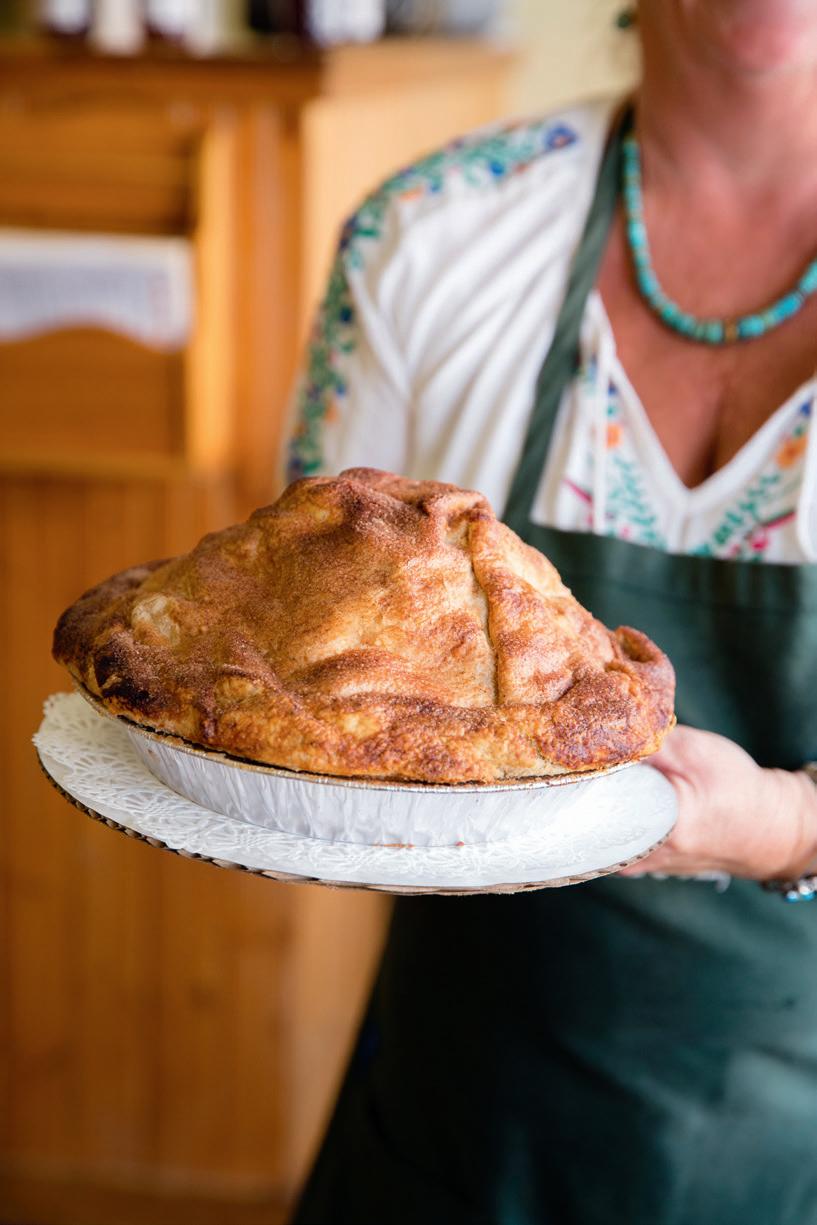


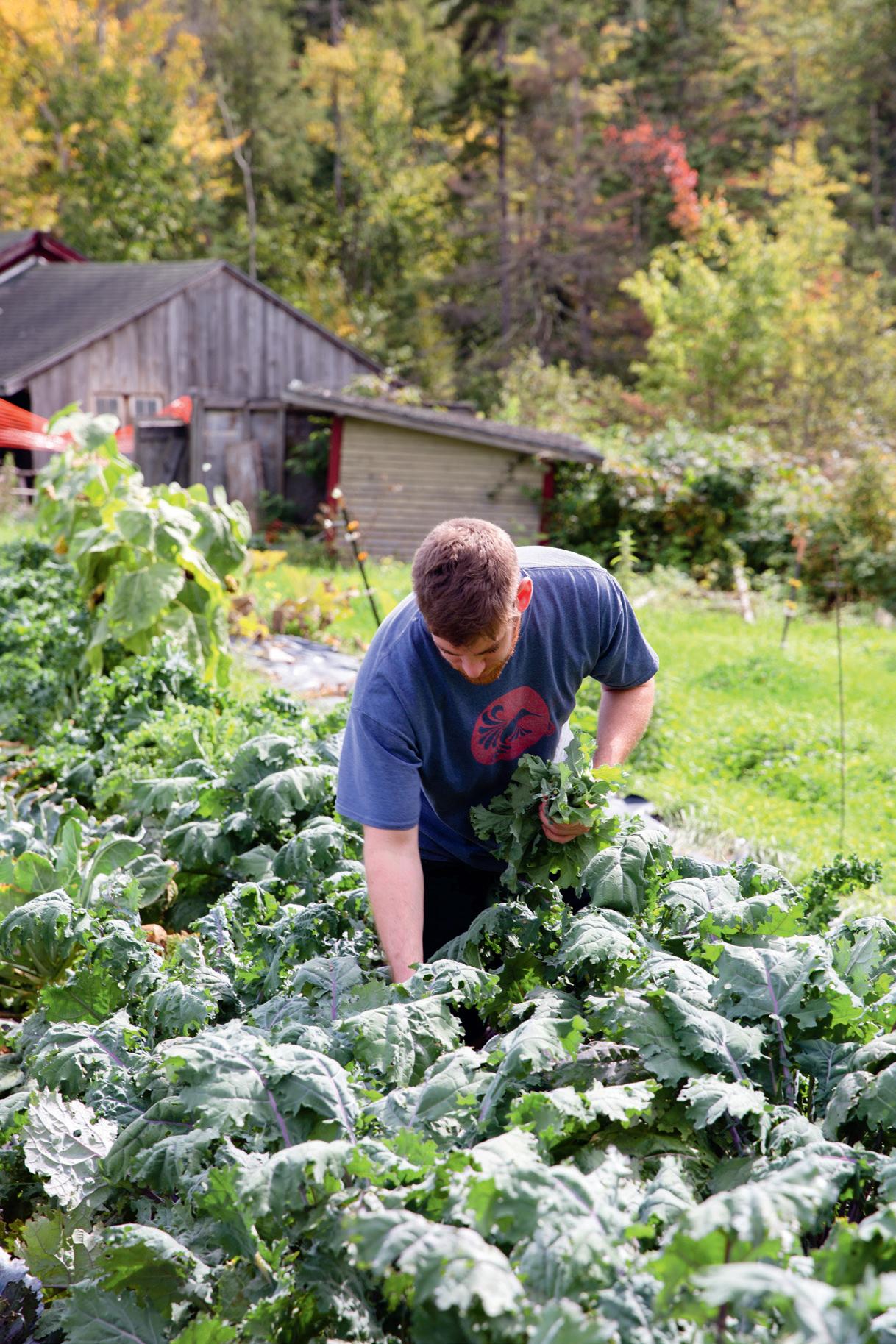

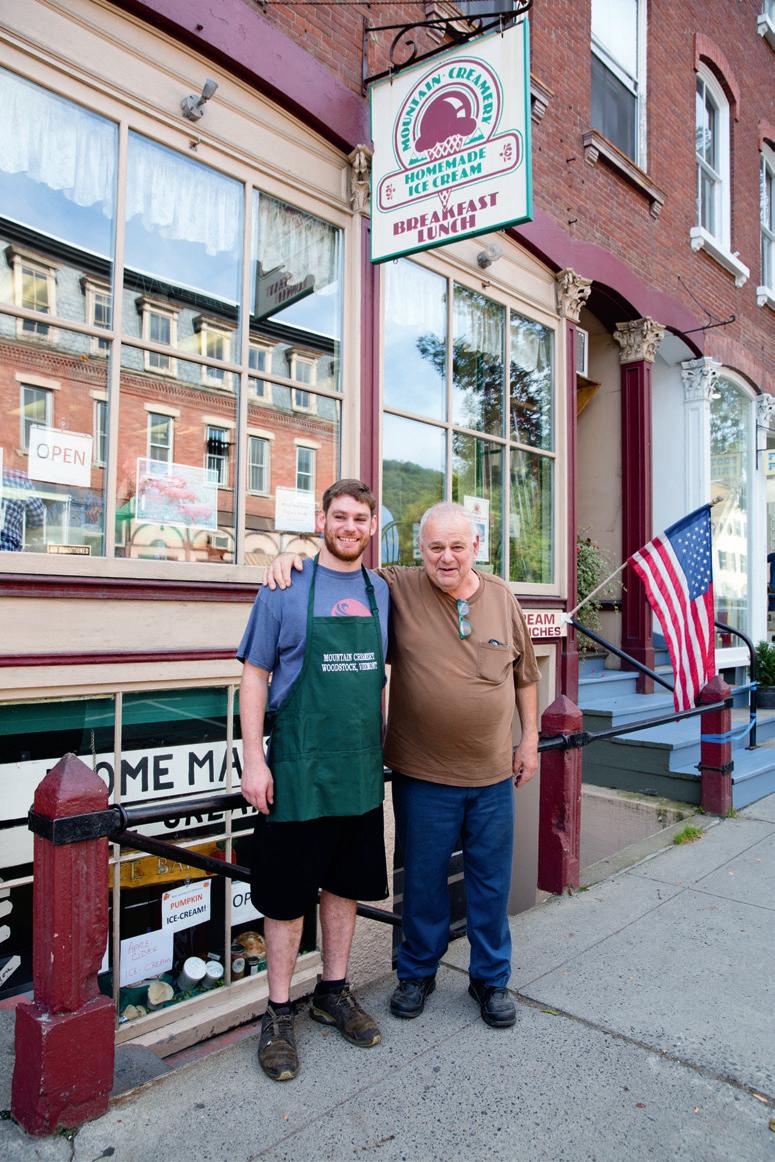
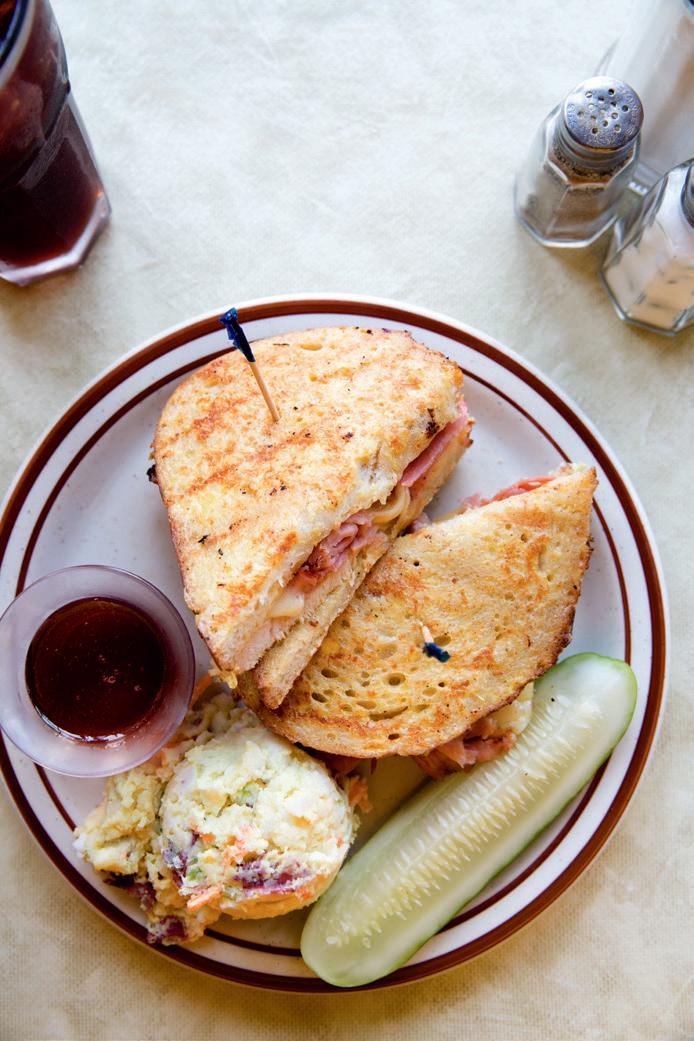




scattering of small trays fills the back counters in the farm’s kitchen, waiting patiently for the longer, warmer days of spring. Encouraged by grow lights, tiny green shoots are just beginning to emerge, the first glimpse of this year’s garden. But there’s still a bit of green, leafy life outside. Planted last year and left to overwinter and sweeten until the ground thaws, our spring-dug parsnips are ready to harvest. At this time of year, they qualify as a delicacy, and I love to fry them in butter with crunchy hazelnuts or stir them into this well-proportioned cake. With comforting cinnamon-cardamom notes and a moist texture, this simple treat is the perfect accompaniment to a cup of tea in front of a cozy fire.
P reP time : 1 hour
h ands- on time : 35 minutes
FOR THE CAKE
2
⁄ 3 cup unsalted butter, plus more for the pans
1½ cups all-purpose flour, plus more for the pans
2 teaspoons baking powder
1½ teaspoons baking soda
1 teaspoon ground cinnamon
1 teaspoon ground cardamom
¼ teaspoon table salt
3 large eggs
1¼ cups sugar
3 medium parsnips, peeled and grated
1 medium firm, tart apple, unpeeled and grated
½ cup chopped walnuts
Powdered sugar for dusting
FOR THE MAPLE MASCARPONE CREAM
1 cup mascarpone
1 tablespoon maple syrup
¼ teaspoon table salt
Preheat oven to 350° and set a baking rack to the middle position. Grease and flour two 9-inch cake pans and set them aside.
Melt ²⁄³ cup unsalted butter and set it aside to cool.
In a medium bowl, whisk together the flour, baking powder, baking soda, cinnamon, cardamom, and salt.
In a large bowl, using a handheld or stand mixer, beat the eggs and sugar until light and fluffy, 3 to 4 minutes.
Scrape down the sides of the bowl and stir in the melted butter. Using a spatula, work the flour mixture into the wet mixture a little at a time until evenly incorporated. Fold in the grated parsnips, apple, and walnuts.
Divide the batter evenly between the cake pans, smoothing the tops with a spatula. Bake until the cakes just begin to pull away from the sides of the pans and the centers are set, 20 to 25 minutes. Set the pans on wire racks to cool for 10 minutes before turning the cakes out to cool completely.
Just before serving, make the cream by beating the mascarpone with the syrup and salt. Sandwich the cream between the cake layers. Dust the top of the cake with powdered sugar and serve immediately. Yields 8 servings.




















the scenes of season three of our public television show, Weekends with Yankee, premiering this April.
aking a television show inspired by a magazine is like leaping from a 2-D world into a 3-D one. In one medium, words and photographs set the scene. In the other, there’s movement and performance (and behind it all, the logistics of moving a crew from one shoot to the next). Every winter, we sift through dozens of story ideas, looking for the ones with “legs”—a promise of visual beauty, surprises, a better understanding of New England. We factor in geographical diversity. We look for characters with a good story to tell and the ability to do it on camera. In short, we control for everything we can. And then there’s the weather. Take this season’s segment on picnicking at Tanglewood with cookbook author and Berkshires native Alana Chernila. Sitting in a sterile WGBH conference room during a planning meeting, we imagined orchestral swells, golden lateafternoon light filtering through the trees, candles, and a soft quilt.
But on the actual day of filming, in late July, the moody Massachusetts skies emptied as we unpacked our basket. And while our location near the Music Shed was acoustically ideal, it was, we soon realized, downslope from the storm drains. Still, there was no option to pack up and try again tomorrow, so we went on, umbrellas in hand. Luckily, as a Tanglewood veteran Chernila had seen worse days on that Great Lawn. And sure enough, by the time she was handing out jars
filled with zingy buttermilk borscht, the sun was out again, drying up all the rain. Except for the quilt—that remained soaked, as did the knees of my white pants.
This recipe appears in Chernila’s second book, The Homemade Kitchen (Clarkson Potter, 2015). It’s a perfect choice for the first warm days of spring, when you’re craving bright flavors and the local beets are just coming into season. It also travels well, making it a great picnic starter. Transport it in singleserving Mason jars and top with yogurt, crumbled feta, or crème fraîche and extra herbs before serving.
1 tablespoon olive oil



2 cups chopped leeks, white and light green parts only (from 1 to 2 leeks)
1 teaspoon kosher salt, plus more to taste
1½ pounds red beets, roasted, skinned, and quartered
4 cups water or stock
1½ cups buttermilk
3 tablespoons fresh lemon juice (about 1 lemon), plus more if needed
½ cup coarsely chopped fresh dill
¼ cup finely chopped fresh mint
¼ cup finely chopped fresh basil
Freshly ground pepper, to taste
Optional toppings: Yogurt, crème fraîche, or feta cheese crumbles; chopped cucumbers; extra herbs
Warm the olive oil in a small skillet over medium heat. When it starts to shimmer, add the chopped leeks and 1 teaspoon kosher salt. Cook, stirring occasionally, until the leeks are soft, about 5 minutes. Remove skillet
from heat and allow leeks to cool for a few minutes.



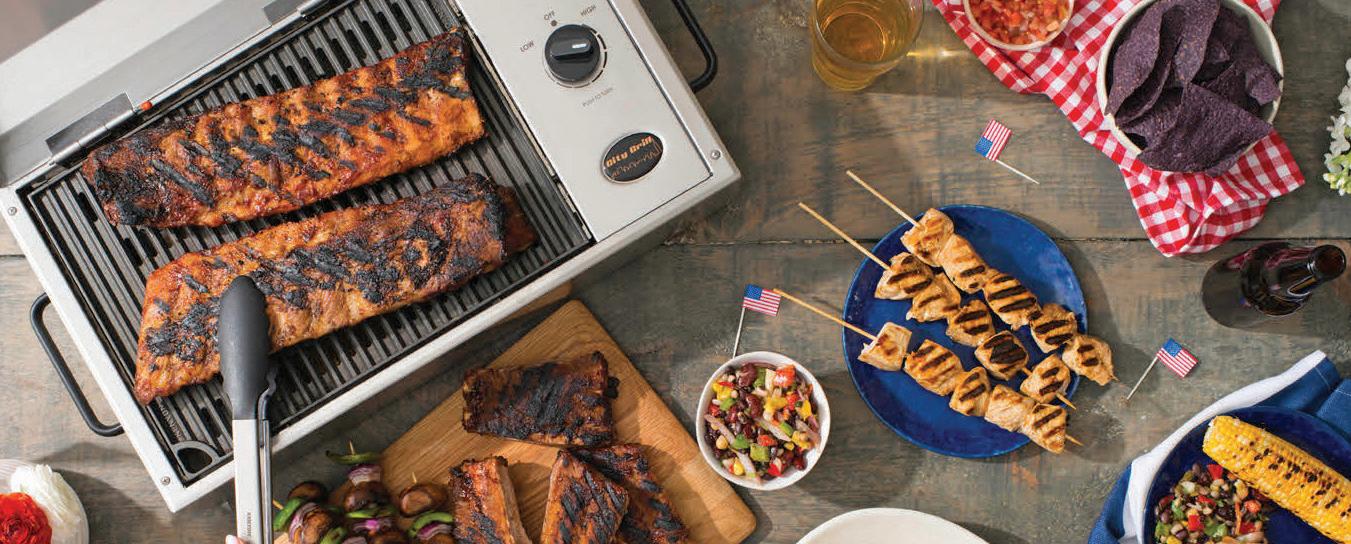
In a blender, combine the beets, leeks (along with any juices from the pan), water or stock, buttermilk, lemon juice, dill, mint, basil, and several grinds of pepper. (Depending on the size of the blender, you might have to do this in batches. Alternatively, you can combine the ingredients in a large pot and blend with an immersion blender.) Blend until smooth and transfer to the refrigerator. When the soup is cold, taste and add salt or lemon juice if necessary. Serve cold, with extra pepper and the toppings of your choice. Yields 2 quarts.
Follow Amy Traverso’s culinary adventures on our public television series, airing nationwide and online at weekendswithyankee.com


VELOUR COWL NECK TUNIC $48 $24 HALF PRICE

• Elegant cowl neck
• Relaxed shape
• Blissfully comfortable
Length approx 30” (76cm)
Machine Washable
75% Cotton 25% Polyester
Imported
Sizes US 6-22 (UK 10-26)
See size conversion online
Pale Duck Egg Heather Navy
AA14188 OFU
VELOUR PULL-ON PANTS $52 $26

HALF PRICE
• Elastic waist with adjustable drawcord
• Straight leg shape
Machine Washable 75% Cotton 25% Polyester

Imported
Pale Duck Egg Heather Navy
Sizes US 4-22 (UK 8-26)
See size conversion online
27” (68.5cm) inside leg AC14922 OFU
29” (74cm) inside leg AC14923 OFU
31” (79cm) inside leg AC14924 OFU

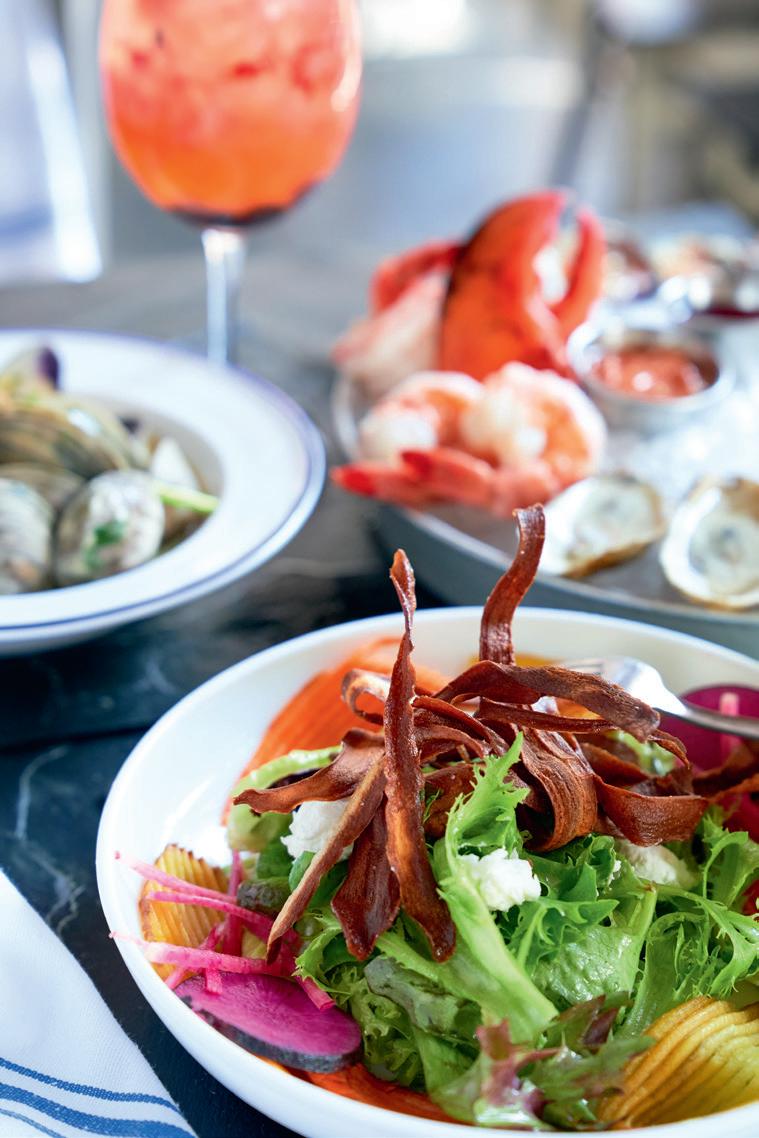


 BY ANNIE GRAVES
BY ANNIE GRAVES
salty breeze chops the air, blowing into Bristol, Rhode Island. It’s April in the old seaport, and already, in the distance, sailboats are flying over the waves, outpacing the last of winter. Narragansett Bay snaps and ruffles like a sheet in the wind; former rum distilleries soak up sun along the waterfront. A few blocks from the harbor, mansions on Hope Street bear witness to maritime fortunes won and lost.
Founded in 1680, Bristol is a town made for walking through history, with dramas that include the tumultuous story of the DeWolf family and their role in the infamous “triangle trade”: Bristol rum traded for African slaves, who then worked on massive plantations in Cuba, which supplied the Bristol distilleries with sugar and molasses.
Wind and water fuel Bristol’s narrative. There’s a reason so many winning America’s Cup yachts were built here. “Narragansett Bay is the ‘it’ place for wind,” says Joanne Murrman, a docent at Linden Place, the graceful Federal mansion in the heart of downtown. And even when you’re not on it, the bay seems omnipresent. Cyclists follow its curves on the East Bay Bike Path; families stroll and picnic along its edge at Colt State Park. It’s also a distractingly beautiful component of
Blithewold, a historic summer estate where carpets of daffodils unroll, a bamboo grove rustles with mystery, and a 100-year-old giant sequoia commands attention. But that view from the Great Lawn overlooking the ripples—it’s simply grand.
For all this, Bristol has a cheery, unaffected vibe. And although it’s just 14 miles north of Newport’s hustle and bustle, it feels decidedly under the radar. Along with prime sailing and biking and breathtaking scenery, it offers a compact downtown, where 23,000 residents take pride in hosting the oldest continuously held Fourth of July celebration in the country (since 1785). Underscoring this point: The center line through town marks the parade route in bold stripes of red, white, and blue.
Sited on a peninsula that looks remarkably like a crab claw, Bristol lies less than an hour south of the state capital, Providence. A weathered boardwalk runs along the waterfront, past the DeWolf Warehouse, with its honeycolored stone, and the 1818 DeWolf Tavern. Three hundred years of architecture are packed into the downtown: Handsome Federal and Greek Revival homes line the long, parallel streets laid out in a grid, with busy restaurants and pubs interspersed.
“You’re in for a treat,” a fan in line at the Beehive Café tells me. Clearly, as the mango-glazed doughnut, in its own sweetly assertive way, sets the
above : Statesman Tavern turns out refined drinks and dinner offerings, which include a creamy mushroom pasta and a Manhattan updated with smoked Rittenhouse rye. right : Kids go looking for coastal critters on an outing with the Audubon Society of Rhode Island.

tone for a weekend that unfolds in flavors. Lunch is at Pomodoro Pizzeria, a tiny bistro that feels straight out of Boston’s North End (homemade gnocchi, broccoli rabe sandwiches topped with provolone). At night, an apple-chai whiskey cocktail and asparagus salad complements the fisherman’s stew at Statesman Tavern. A Sunday breakfast at Sunset Café gets


progressively merrier as diners fill up on Portuguese chorizo hash and sweet-bread French toast. And for the final fling: Bristol Oyster Bar, where the sea is plunked onto the plate in the form of Dutch Island, Moonstone, and Chessawanock oysters. (Who could say no to the briny goodness of the “Legendary Buck a Shuck?”)
Amid an artful mix of storefronts, I’m pulled into Epilogues, where contemporary nautical handcrafts and gifts mingle with French antiques and midcentury scatterings. Another standout is Grasmere, a home décor shop accented with oversize ferns that give the feel of an elegant English greenhouse. And at C&R Mercantile, owner Denise Nehez fills her teensy space—

just 200 square feet—with an array of flowers, farm goods, and pretty gifts.

To burn off a little extra energy, join the wagon train of families pedaling along the 14.5-mile East Bay Bike Path from Bristol to Providence. The path crosses through Colt State Park, a 464-acre estate on Poppasquash Neck that was left to the public by the wealthy industrialist Samuel Colt.
At the annual Fiber Festival weekend at Coggeshall Farm Museum, the rain does nothing to dampen the spirits of kids clustered around the sheepshearing pen. We’re all agog as the fleece comes off in one continuous piece in the hands of a master sheepshearer, who informs us, “It’s like peeling a banana!” On
above : At C&R Mercantile you can find fresh flowers, produce, and farm-inspired gifts (such as this flour-sack dish towel), all selected by owner Denise Nehez.
right : The stately house museum Linden Place.
non-shearing weekends, rare-breed livestock and reenactments evoke daily life on a tenant farm in 1799.
Four U.S. presidents (Monroe, Jackson, Grant, and Arthur) visited Linden Place, the stunning 1810 mansion that dominates Hope Street. Guides dig deep into the story of the families who lived here—DeWolfs and Colts—who

made their fortunes as slave traders. More than a house tour, it’s the history of our country, dark corners and all.
There are too many magical nooks to count at Blithewold Mansion, Gardens & Arboretum, where a 45-room mansion sits in the midst of rose gardens, wildflowers, and a woodland glade that bursts with daffodils in the spring. Marvel at the floral abundance, stroll the 10-acre Great Lawn rolling down to the bay, and take tea at the mansion, if you like.
Bristol shipbuilders were long renowned for their America’s Cup yachts, so it stands to reason that this town is home to the America’s Cup Hall of Fame. It was founded in 1992 as part of the Herreshoff Marine
Museum, which celebrates Bristol’s maritime legacy with gleaming vintage boats, classic yacht regattas, and a sailing school for kids and adults using boats from the 1930s.
It’s easy to get distracted at Mount Hope Farm, what with the baby goats, sheep, and donkeys, plus cutting and perennial gardens, but this place also presents the chance to sleep like a colonial bigwig in the 1745 Governor Bradford House. On the waterfront, the Bristol Harbor Inn offers nautical-themed rooms with views of Narragansett Bay.
At the time of our visit, a threebedroom 1850 colonial with gingerbread trim on Hope Street in walking
Once the home of U.S. senator William Bradford, Mount Hope Farm today is a national historic site that includes a B&B, events facilities, nature trails, and an assortment of friendly farm animals.
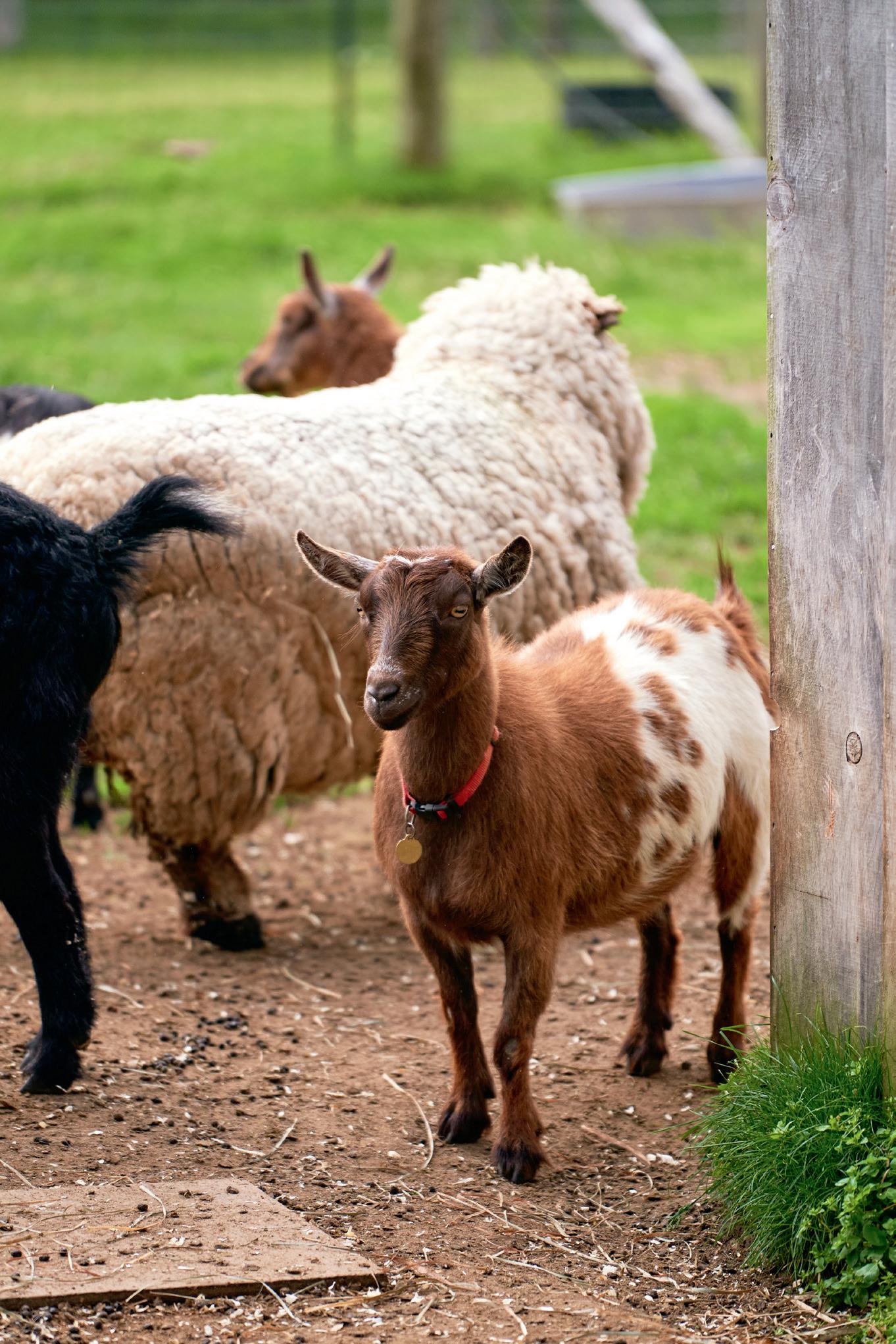

distance of the harbor lists at $374,900. An airy two-bedroom cottage downtown is selling for $299,900. And nearly an acre of land adjacent to Audubon land on Poppasquash Road is $199,000.
To see more photographs from our trip, go to newengland.com/bristol-2019. Special thanks to Mark DeStefano and Pedego Electric Bikes Rhode Island for providing the rental bikes shown on p. 61.
48 PEAKS OVER 4,000’ AND NO END TO ADVENTURE IN SIGHT.







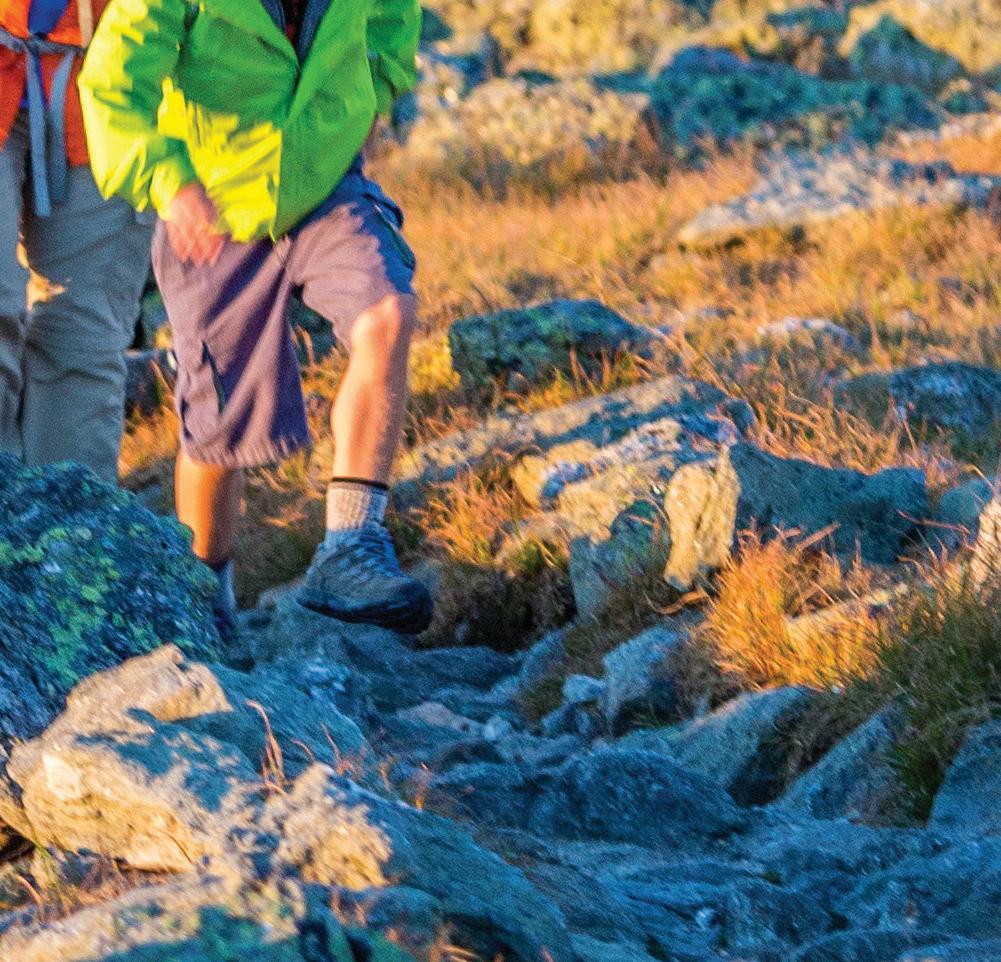



 BY KIM KNOX BECKIUS
BY KIM KNOX BECKIUS
ike fine cooking, flower growing requires well-honed technique, the right ingredients, a willingness to experiment, and a lot of love. It’s a formula that flourishes at these family-run farms, where acres of flowers are sown not for commercial-account sales but for you, the visitor. Spend carefree hours among the plants, take home mood-boosting blooms, and restore your faith in the softness this earth can produce.
There’s a metaphor in the bumpy dirt road that leads to “Peony Heaven,” where a sneak preview of what lies beyond the pearly gates awaits each May and sometimes into mid-June. Everyday worries fade at this Connecticut woodland farm, where the six-acre display garden’s pathways and picnic tables are accented by jaunty umbrellas protecting blossoms so massive they hardly seem real. For 30 years, the Furman family has nurtured rare and extraordinary tree peonies and their perennial cousins, which are sold on-site and via catalog. Add these camera-loving bloomers to your own garden as a reminder to seek heaven here on earth. Thomaston, CT. 860-283-1042; treepeony.com
Walk with Karen Clark along the neatly planted rows at her Maine farm, and you’ll gasp when she grabs a seemingly gorgeous dahlia and snaps off its head. Only perfection is accepted at this 22-year-old family enterprise. Luckily, dahlias are “a perfect flower,” says Karen’s husband, Phil, and from late July through October, new ones open as fast as the older heads roll. Each spring, the couple plants more than 4,000 of these robust, in-yourface flowers that crave relentless sun. Each fall, they harvest up to 20,000 tubers to store for spring shipments to customers. In between, hummingbirds, monarch butterflies, leaf peepers, and dahlia devotees take joyful refuge—at no charge—amid more than 100 creamy-to-jeweltoned varieties available for cutting. Camden, ME. 207-236-8752; endlesssummerflowerfarm.com
Rebloomers, doubles, spiders, a sixfoot-tall anomaly named “Notify Ground Crew”—the 2,000 varieties of day lilies are the obvious stars at Elaine and Carl Wickstrom’s back-road farm in eastern Massachusetts. But it’s the galaxy of other, often seldom-found plants on the grounds that have made garden geeks giddy for 20 years. Native species like nodding pink onion, intriguing aquatics and succulents,
nocturnal bloomers, peculiar herbs, a dozen heathers, woodland rarities like cobra lilies, and 400 … maybe 500 hosta varieties thrive (the Wickstroms are too busy propagating to count). From roughly May 1 through Columbus Day, with the densest mass of day lily color making July prime time, you can stroll, picnic, or paint en plein air at this plant zoo. Berlin, MA. 978-8382471; goldenskepfarm.com

Breathe in air perfumed by 9,000 breeze-ruffled lavender plants at this little slice of Provence in Con-
this page , from top : Wicked
necticut, which is open free to anyone needing a lavender lift from around Mother’s Day until Christmas Eve. At its peak visual splendor in July (and most intensely aromatic whenever 60 pounds of fresh-clipped stalks are fed into a copper still to extract essential oil), Chris and Denise Salafia’s farm has grown faster than weeds since 2014. A sightseeing train, a bistro serving lavender-flavored treats, a handbuilt covered bridge, and an Airbnb apartment have been added to the property. In the gift shop filled with purple delights handcrafted on-site, you can flip through Miss Rumphius, a Barbara Cooney children’s book that Denise read to her mom in hospice. Like the title character, the Salafias strive “to make the world more beautiful.” Killingworth, CT. 203-350-0367; lavenderpondfarm.com
When spring is finally ready to pour sunshine on New England, more than half a million tulips erupt in layer-cake rows of saturated color at Wicked Tulips—so many that you actually notice their fragrance, perhaps for the first time. It’s a privilege reserved for the wicked smart who have stalked this Rhode Island grower online for opening-date news and advance tickets to wander through fields afire, snapping photos and gathering perfect blooms by the pailful or armload. Ever since a Netherlander and a New Englander—Jeroen and Keriann Koeman—gave a historic farm parcel the Monet treatment, sold-out crowds of happy flower hunters have been the rule. Johnston, RI. 401-297-3700; wickedtulips.com

THE HARRASEEKET INN
FREEPORT, ME
A family-owned, AAA Four Diamond hotel featuring two restaurants, fireplaces, indoor pool, select petfriendly rooms. Book direct and get free breakfast and tea. Complimentary transportation from Amtrak Downeaster station. Two blocks to L.L. Bean. Best shopping in New England.
800-342-6423
harraseeketinn.com
THE INN AT HASTINGS PARK

LEXINGTON, MA
Boston’s only Relais & Châteaux hotel is located in one of New England’s most historic districts. The fully restored property features contemporary design with a twist on the traditional. Its award-winning restaurant, Artistry on the Green, serves regional seasonal cuisine.
781-301-6660
innathastingspark.com

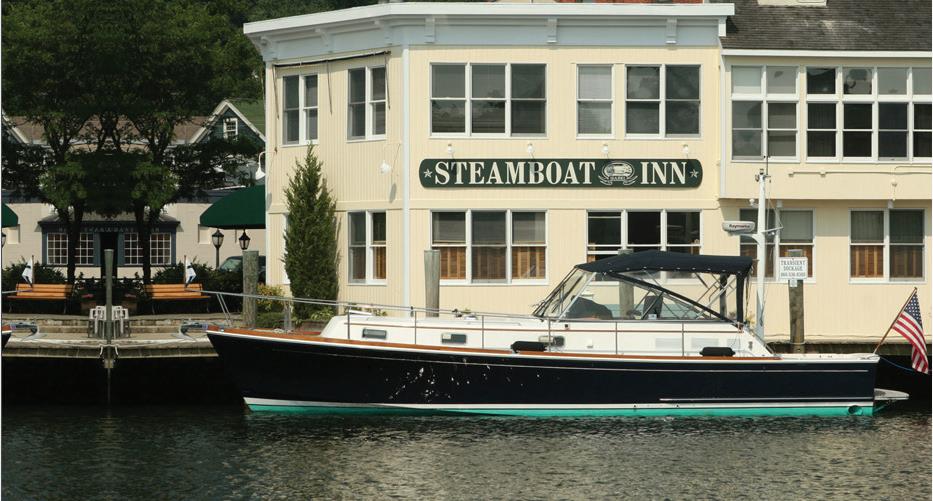
Stay in historic downtown Mystic in luxurious accommodations directly on the river. Many fine restaurants and shops are just steps away. Ideal for a romantic getaway! Enjoy a sunset cruise on the schooner Argia, sailing daily from our wharf.
860-536-8300
steamboatinnmystic.com
Gifts at 136 offers a large selection of fine crafts and art from Maine, including furniture, paintings, sculpture, jewelry, pottery, glassware, lighting, and more.
Gifts at 136 has won multiple awards for its well-curated collection of accessible art. Open all year.
207-563-1011
giftsat136.com
Steps from downtown Bar Harbor, along majestic Frenchman Bay, the iconic Bar Harbor Inn has been welcoming guests since 1887 with genuine hospitality, signature service, and timeless charm. Enjoy the area’s finest waterfront dining, accommodations and spa services on this stunning eight-acre property.
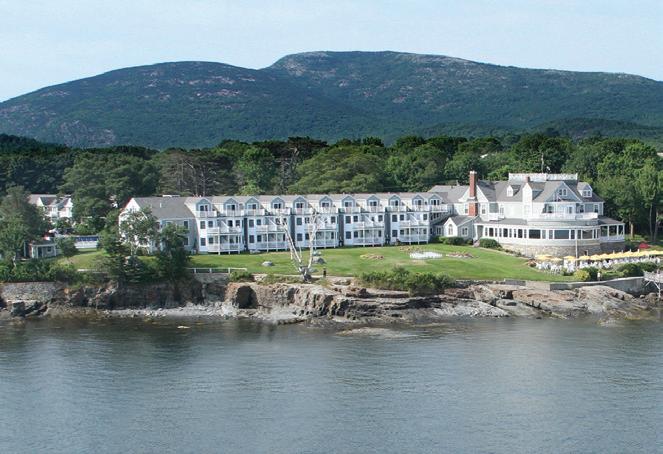

844-249-3584
barharborinn.com
The Amazing World of Dr. Seuss Museum is an interactive, bilingual experience that explores the childhood and stories of Springfield, MA, native Theodor Geisel, aka Dr. Seuss. Five museums and a sculpture park offer Seuss, science, art, and history—something for everyone!
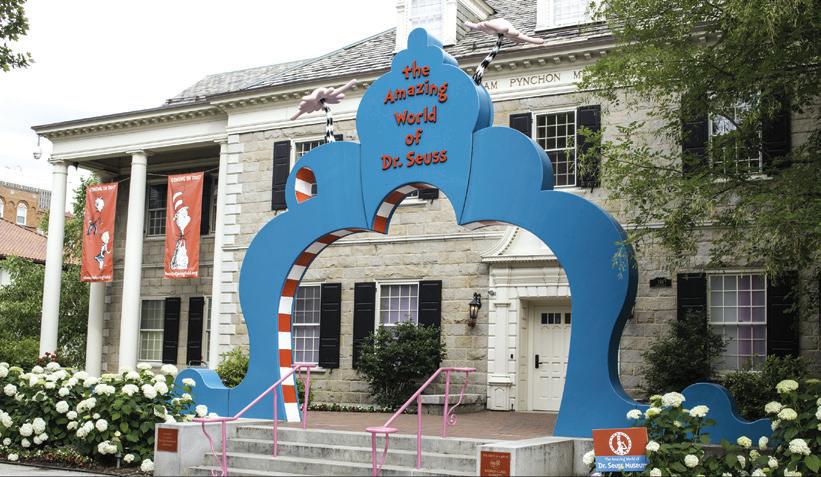
800-625-7738 springfieldmuseums.org
A historic inn meets contemporary luxury just outside one of Vermont’s most beautiful villages. Refined sitting rooms, world-class art, glorious gardens, and luxurious lodgings featuring fireplaces and Frette linens meet gourmet breakfasts in our AAA Four Diamond boutique inn.
802-457-2065
jacksonhouse.com
Experience the enchanting cottage that inspired Elizabeth Orton Jones’s Little Golden Books version of “Little Red Riding Hood.” Untouched by time, this is a mecca for gardeners, epicureans, and anyone looking for inspiration and relaxation. Have a Pickity day!

603-878-1151
pickityplace.com

Authentic charm and elegance in the heart of Brunswick. Sixteen beautiful guest rooms offer modern amenities with the personal service only a small inn can provide. Complimentary fresh breakfast made with local ingredients served by a roaring fire. Full bar.
800-299-4914
thebrunswickinn.com
Enjoy a quarter mile of sandy beach and docks on the shores of Lake Winnipesaukee. Lakeside cottages, apartments, and rooms available. Great location for fishing, hiking, kayaking, boating, and more. Family owned and operated since 1890.

603-293-4321
amesfarminn.com
Climb this historic 7.6-mile road to the summit of the Northeast’s highest peak—drive yourself, or take a guided tour. This must-do drive is America’s oldest man-made attraction. During the winter, take a tour on the Mt. Washington SnowCoach.

603-466-3328
mtwashingtonautoroad.com
A must-see New England destination that tells the story of Plymouth Colony in the early 1600s and its shared history with the Pilgrims and native people. Visit the 17th-Century English Village, Wampanoag Homesite, Plimoth Grist Mill, Waterfront Exhibit, Craft Center, and Plimoth Bread Co.

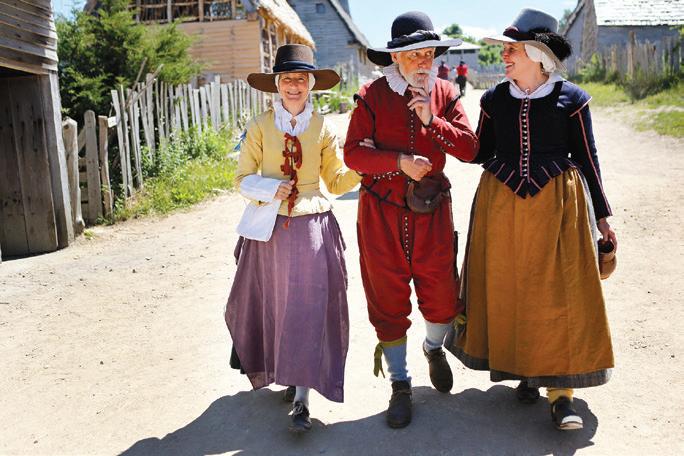
508-746-1622
plimoth.org
Experience this stunning historic estate with unmatched views of Lake Winnipesaukee and the surrounding mountains. Tour the 1914 Arts and Crafts-style mansion, dine on the lakeview terrace, explore the estate’s 28 miles of trails and waterfalls, and more

603-476-5900
castleintheclouds.org
with
Editors’
and learn for yourself why they received Yankee Magazine’s highest accolade.

MAR. 3
If you’ve never witnessed the homegrown Vermont sport known as jack jumping—in which participants hurtle themselves downhill while seated on single ski, and with no poles for balance—head over to the Mount Snow ski resort to see a lot of great racing (and some spectacular wipeouts) in an annual competition that goes back nearly 40 years. West Dover, VT. 800-245-7669; mountsnow.com
MAR. 16
The highlight of a monthlong salute to Newport’s Irish heritage, the biggest Saint Patrick’s Day parade in the state steps off at 11 a.m. from City Hall, followed by a family-style, alcohol-free party with bagpipers, Irish step dancers, contests, food and refreshments, and more. Newport, RI. 401-8465081; newportirish.com

APR. 9
Last fall, the Red Sox became the first team to win four World Series trophies in the 21st century. Expect fans to start cheering them lustily toward a fifth, as they play their home opener against the Toronto Blue Jays. Boston, MA. mlb.com/redsox
APR. 20
The 53rd running of the largest paddling event in New England follows a 16.5-mile course from Kenduskeag to Bangor. If you are attending as a spectator, join the crowds near the rapids of Six Mile Falls for some “thrill of victory and agony of defeat” moments. Penobscot County, ME. kenduskeagstreamcanoerace.com
APR. 26–28
Known for rural beauty and smalltown character, the southwest corner of the Granite State shows a surprising Cannes-do spirit with this seventh annual cavalcade of independent feature films, documentaries, and shorts, plus parties and meet-and-greet events. Keene and Peterborough, NH. 603-522-7190; moniff.org
APR. 27–28
Come stroll through a carpet of gold as more than half a million of springtime’s cheeriest ambassadors pop their heads up at Meriden’s Hubbard Park. And if that doesn’t shake you out of any lingering winter stupor, the parade, the fireworks show, carnival rides, and three stages of live entertainment definitely will. Meriden, CT. 203-238-1315; daffodilfest.com
For more best bets around New England, see p. 74



MAR. 3: CHESHIRE, Train Show . Go loco for locomotives at Cheshire High School’s biannual showcase of model train equipment, accessories, and memorabilia, plus a number of large model train layouts. 203-265-7527; ramband.com

MAR. 14–17: OLD GREENWICH, Ephemera Society of America Conference and Fair. More than 80 specialists in ephemera—political posters, postcards, stamps, etc.—will set up at the Hyatt Regency for a weekend of deals, discussions, presentations, and auctions. This year’s theme: “Coming to America: The Immigrant Experience.” 315-655-9139; ephemerasociety.org
MAR. 16–17: HEBRON, Hebron Maple Festival
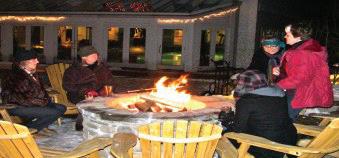

This family-owned, 93-room luxury inn features two great restaurants, 23 replaces, an indoor heated pool and is fully handicapped accessible. Select pet-friendly rooms available. Walk to the best shopping on the Maine coast and the Amtrak Downeaster train station. Ask about our Yankee Getaway Package. Book direct for complimentary breakfast and afternoon tea.



Street • Freeport, ME 04032 800-342-6423 • www.harraseeketinn.com
At this celebration of the sweet and sticky season, learn how maple syrup is produced during sugarhouse tours and demonstrations, and then savor the goodness with an abundance of mapley treats. Children’s activities, a craft fair, and other activities round out the weekend. 860-423-6389; hebronmaplefest.com
MAR. 23–24: HARTFORD, Connecticut Spring Antiques Show. This venerable show returns to the Hartford Armory, where it got its start back in 1973. A premier showcase of early American furniture and decorative arts, it’s equally fun for novices and collectors. 860-345-2400; ctspringantiquesshow.com
MAR. 24: MYSTIC, Irish Parade . Drawing an estimated crowd of 30,000-plus, this parade ranks among the region’s largest. The celebration kicks off from Mystic Seaport and heads into the historic downtown before winding up at the Mystic Museum of Art on Water Street. mysticirishparade.org
APR. 28: NEW HAVEN, Cherry Blossom Festival
Enjoy the sight and fragrance of more than 70 Yoshino Japanese cherry trees in bloom around Wooster Square, where a full lineup of music, exhibits and demonstrations, kids’ activities, and good food will keep you entertained. historicwoostersquare.org
APR. 28: VERNON, Sheep, Wool, and Fiber Festival. Shearing demonstrations, knitting instruction, and sheepdog trials are all part of the fun as farmers and vendors congregate at the Tolland County Agricultural Center for an agricultural celebration that dates back more than a century. ctsheep.org
MAR. 22–24: PORTLAND, Maine Boatbuilders
Show. At the Portland Sports Center you’ll find a gathering of the East Coast’s finest custom-boat builders, as well as manufacturers of boating equipment, all ready to discuss and sell their work. 207-774-1067; portlandyacht.com
MAR. 24: STATEWIDE, Maine Maple Sunday
Come for the nifty syrup-making demonstrations, stay for the tasty samples. More than 80 Maine sugarhouses open their doors today, with fun activities—games, tours, live music, etc.—varying from one

stop to the next. Check the website for locations. mainemapleproducers.com
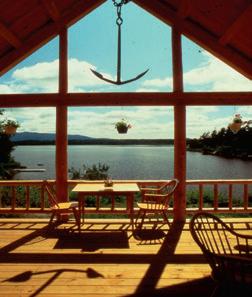


APR. 6–7: NEWRY, Spring Fest Weekend. Head over to White Cap at Sunday River for some memorable springtime revelry: Hit the slopes, cheer on the competitors in the “slip ’n’ flip” relay, and enjoy a lineup of live bands. 207-824-3000; sundayriver.com
APR. 12–14: BANGOR, Bangor Flower & Garden Show. The Cross Insurance Center is transformed into a gardener’s dream as more than 100 landscapers, horticulturists, and garden clubs present beautiful floral and garden displays, bulbs, herbs, greenhouses, sheds, and more. 800-237-6024; homeshows.com



APR. 12–14: OGUNQUIT, Patriots Day Celebration . Historical characters offer insights into the past with reenactments throughout the weekend, which bustles with all-ages activities such as concerts, hay rides, and a rubber duck race. 207-646-2939; visitogunquit.org

APR. 20: DENMARK, Sheepfest . From humble beginnings in 1995, the sheepshearing festival at the Denmark Arts Center has grown into a much-anticipated community event that spotlights the art of sheepshearing and turning wool into all manner of beautiful and useful products. denmarksheepfest.com
APR. 25: PORTLAND, Chocolate Lovers’ Fling Local chocolatiers gather at Brick South

at Thompson’s Point to showcase their creativity and serve up the ultimate chocolate confections, hoping to win your vote in the coveted People’s Choice category. Silent and live auctions benefit the nonprofit organizer, Sexual Assault Response Services of Southern Maine. 207-828-1035; chocolateloversfling.org
APR. 27–28: MADAWASKA, Top O’ Maine Trade Show. The Madawaska Multipurpose Complex hosts northern Maine’s largest trade show, with 75-plus exhibitors displaying their wares and information on their services. Hit the food court for a snack, and maybe head home with one of the prizes that will be given away. 207-728-7000; stjohnvalleychamber.org







MAR. 2–17: NORTHAMPTON, Spring Bulb Show
A spectacular array of more than 5,000 blooms, from crocuses to hyacinths to irises, provides a glimpse of spring during this longstanding tradition at Smith College’s Lyman Conservatory. 413-585-2740; smith.edu
MAR. 9: YARMOUTH, Cape Cod Saint Patrick’s Parade. Get the Saint Paddy’s Day festivities started early with this annual two-mile parade featuring bands, dancers, and vin
tage cars. With about 400 people marching and another 40,000 or so lining the route, this parade has become one of the biggest and best around. 508-240-7347; capecodstpatricksparade.com
APR. 12–14: BOSTON, CraftBoston . Immerse yourself in creativity as nearly 100 artisans fill the Cyclorama at the Boston Center for the Arts with their wares. Load up your shopping bag with everything from handcrafted Shaker boxes to luxe leather goods. 617-266-1810; societyofcrafts.org
APR. 12–14: MANSFIELD, New England Folk Festival . Hosted by Mansfield-area schools, this 75th annual event offers plenty of music, dance (both participatory and performed), and crafts, plus food, kids’ activities, and more. neffa.org
APR. 12–21: CAMBRIDGE, Cambridge Science Festival. This celebration of science, technology, and engineering features over 200 events in Cambridge and beyond. Take in lectures, performances, exhibits, tours, debates, and more. See website for schedule and locations. cambridgesciencefestival.org
APR. 13–15: LEXINGTON/CONCORD, Patriots’ Day Weekend . Minute Man National Historic Park pays tribute to the opening battle of the American Revolutionary War with parades, reenactments, and commemorative ceremonies, culminating in the Lexington Patriots’ Day parade. nps.gov/mima

APR. 13–MAY 5: PITTSFIELD, Baby Animals on the Shaker Farm . Springtime at Hancock Shaker Village means the arrival of baby lambs, piglets, goats, ducklings, and chicks. Get in on the family fun by helping with farm chores, learning how to save seeds, weave baskets, make seed packets, and more 413-443-0188; hancockshakervillage.org
APR. 25–28: VINEYARD HAVEN, Spectrum Film Festival. The Martha’s Vineyard Film Society presents a world perspective on LGBTQ people and issues through films, guest speakers, discussions, and a special event focused on LGBTQ youth. 508-6969369; mvfilmsociety.com

MAR. 1–2: NORTH CONWAY, Hannes Schneider Meister Cup. Combining the thrill of modern skiing with the nostalgia of yesteryear, this Cranmore Mountain Resort event honors the father of ski instruction. Proceeds go to the New England Ski Museum. 603-356-5543; newenglandskimuseum.org
MAR. 9–10: HENNIKER, Hawaiian Weekend



Pats Peak Ski Area invokes some tropical flavor with a weekend of live music, festive décor, loud shirts, hot tubbing, contests, and more. 603-428-3245; patspeak.com
MAR. 13–14: PORTSMOUTH, Banff Centre Mountain Film and Book Festival. The Music Hall hosts the touring version of this famed Canadian event, giving local audiences a chance to see award winners and audience favorites from the nearly 400 action, environmental, and adventure films that were entered. 603-436-2400; themusichall.org
MAR. 16–APR. 7: BETHLEHEM, Maple Experience at the Rocks . During the last three weekends of March and the first weekend of April, participate in the process of tapping trees and making syrup, and enjoy horsedrawn wagon rides through this scenic 1,400-acre property. Reservations recommended. 603-444-6228; therocks.org
MAR. 22–24: MANCHESTER, Made in New Hampshire Expo. Explore all that the Granite State has to offer at the DoubleTree by Hilton Manchester Downtown. More than 100 vendors will be showing off their New Hampshire wares, including food and crafts. 603-626-6354; millyardcommunications.com

MAR. 23–24: STATEWIDE, New Hampshire


Maple Weekend . More than 100 sugarhouses across the Granite State invite you to stop by for a peek into the sugaring process. Enjoy samples and varied activities at each stop. See the website for locations. nhmapleproducers.com
APR. 6: NEWBURY, Intragalactic Cardboard Sled Race. In this silly signature Mount Sunapee event, cardboard, paint, duct tape, and ski wax are the building blocks of some of the most intricate and professionally designed sleds you will ever see. 603-763-3500; mountsunapee.com
APR. 20–21: LEBANON, Five Colleges Book Sale . This spring tradition (since 1962!)
is held at the Lebanon High School Gym, where book aficionados will find 35,000 to 40,000 titles on all topics, plus maps, prints, ephemera, DVDs, and more. 603-4283311; five-collegesbooksale.org


MAR. 31: WESTERLY, The Swingles . As part of its Kent Hall Masters Series, the Chorus of Westerly welcomes this British a cappella group, whose first iteration came together in 1963. A lot has changed since then, including the lineup of seven singers, but the Swingles harmonies are as mesmerizing as ever. 401-596-8663; chorusofwesterly.org
EARLY APRIL: BRISTOL, Blithewold: The Gateway to Spring. Each April, when its more than 50,000 daffodils burst into bloom, the seaside estate of Blithewold is a spring spectacle to behold. Mother Nature has some say in the scheduling, however, so check the website for exact dates. 401-253-2707; blithewold.org
APR. 4–7: PROVIDENCE, Rhode Island Home Show . The biggest home show in southern New England returns with its signature interior design showcase and walkable landscapes, as well as hundreds of contractors and product exhibits, seminars, and cooking demonstrations. ribahomeshow.com
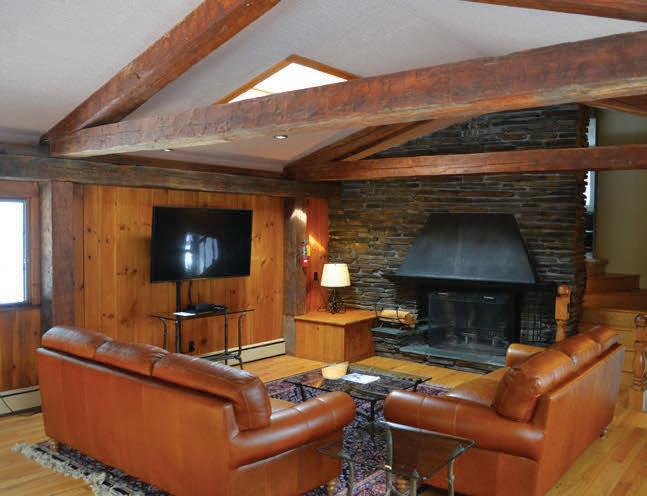
APR. 11: PAWTUCKET, PawSox Home Opener. The Red Sox Triple-A affiliate may be relocating to Massachusetts in 2021, but for now they’re still the beloved home team of Pawtucket baseball fans. Come out to historic McCoy Stadium to see them take on the Syracuse Mets. milb.com/pawtucket
APR. 13–21: NEWPORT, Daffodil Days Festival. This townwide celebration of spring invites you to participate in workshops, take a cliff walk, tour gardens and houses, admire vintage cars, and enjoy music, a parade, and more. 401-849-8048; newportdaffydays.com


APR. 24–27: PROVIDENCE, Eat Drink RI Festival . Featuring a star-studded lineup of more than 80 farmers, chefs, bartenders, and food and drink artisans from across the state, this popular festival returns to downtown Providence. Expect tastings, demonstrations, and plenty of dining and cocktail opportunities. eatdrinkri.com
APR. 29: SAUNDERSTOWN, Spring Fair/Fish on the Run at Gilbert Stuart Birthplace & Museum . Visit the birthplace of the 18thcentury master portrait artist just in time to view the river herring migration up the fish ladder, and enjoy an afternoon of corn grinding in the gristmill; demonstrations of spinning, weaving, and rug hooking; house tours; and kids’ activities. 401-294-3001; gilbertstuartmuseum.com
MAR. 1–3: FERRISBURGH, Vermont Flower Show. Gather inspiration and learn to create your own gardens as you explore the 12,000-square-foot indoor landscape at the Champlain Valley Exposition Center. This year’s theme: “Wonder—A Garden Adventure for All Ages.” 802-425-5117; greenworksvermont.org

MAR. 2–3: BRATTLEBORO, Circus Spectacular. Step right up for this high-flying gala hosted by the New England Center for Circus Arts at the historic Latchis Theatre, featuring students from the local program performing alongside guest artists from circuses around the world. 802-254-9780; necenterforcircusarts.org

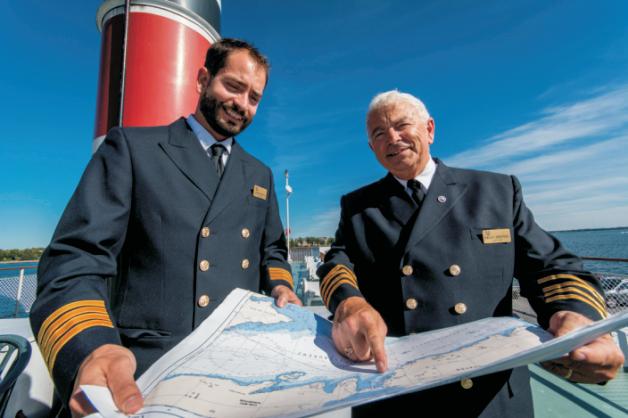
MAR. 15–30: ESSEX JUNCTION/MONTPELIER, Green Mountain Film Festival . Whether you’re a film buff or a casual moviegoer, you’re sure to find something appealing among these feature films, documentaries, shorts, and animated tales from all over the world, screened at multiple venues around town. The first week of the festival is based at Essex Cinemas in Essex Junction; the second week sees the action move to venues in Montpelier. gmffestival.org
MAR. 23: STRATTON MOUNTAIN, Taste of Vermont. Some of Vermont’s best restaurants, chefs, and bakers will gather at the Main Base Lodge at Stratton Mountain Resort, where you can sample their favorite creations and pick up some new recipes. 802-297-2096; strattonfoundation.org
MAR. 23–24: STATEWIDE, Maple Open House Weekend . Celebrate maple syrup season by visiting a sugarhouse to learn about Vermont’s first agricultural crop of the year. Check the website for an open house near you. 802-763-7435; vermontmaple.org

MAR. 30: BURLINGTON, Mardi Gras Weekend Magic Hat Brewery brings music and merry mayhem to downtown Burlington with a seasonal celebration that kicks off Friday night and culminates in a parade on Sunday. 802-658-2739; magichat.net
APR. 6–7: ESSEX JUNCTION, Made in Vermont Marketplace . From wood sculptures and handcrafted furniture to specialty food products and small-batch spirits, this Champlain Valley Expo event is an opportunity to browse, taste, and purchase products from the Green Mountain State. madeinvermontmarketplace.com
APR. 13: KILLINGTON, Pond Skimming Championships . Are they brave or just crazy? Either way, skiers and snowboarders will put their skills to the test as they attempt to sail across the pond. Competitors will be judged on skim, costume, splash, and crowd response. 800-734-9435; killington.com
APR. 19–20: WOODSTOCK, Baby Farm Animal Celebration . Visit Billings Farm this weekend and you can take a wagon ride, learn about heirloom seeds, and tour the 1890 farmhouse—but save plenty of time for the lambs, chicks, and calves who are the stars of the show. 802-457-2355; billingsfarm.org
77 Forest Street, Hartford, CT 860.522.9258 info@stowecenter.org harrietbeecherstowe.org

Celebrating 25 years of educating visitors about the WWII-era Americans called “the greatest generation”. 1939-45

Home Front displays; vintage tanks & weapons; period art, music and more.



Please join us for these 2019 Special Exhibits:
• Smithsonian exhibit, Righting a Wrong, Japanese Americans and WWII - May - July 7
• Esquire Magazine, The War Years - July 14 - Sept 8
• The Last Good War: Faces & Voices of WWIISept 15-Oct 31
Open May 1 – Oct 31

Mon.-Sat. 10-4
12-4



“Get back to the basics”


New Hampshire’s White Mountains are a wonderful place to escape, explore and create unforgettable memories. Experience towering peaks, stunning scenery, spectacular waterfalls, limitless recreation and 17 legendary attractions that have provided a lifetime of memories and cheer for generations of visitors.


Visit us in an 8,000 sq. ft. tropical paradise , home to nearly 4,000 free-flying butterflies! Enjoy our butterfly-themed gift shop & food court So much more than butterflies! Visit our lizards, tortoises, birds, and fish. A unique setting for your wedding and/or reception shower, family party or corporate event. Open Everyday 9-5 • Year-Round 281 Greenfield Rd. • South Deerfield, MA 01373 (413) 665-2805 • www.magicwings.com



20 cabins with fireplaces

Restaurant: Late June – Labor Day
Play, swim, boat, fish, hike, bike, and relax by the lake in Lyme, NH




Open May to October • Pet-Friendly 800-423-2141 www.LochLymeLodge.com
~since 1923~



After the first bite, I thought, “Can you really call this a movement?” Farm-to-table. Locally sourced. Sea-to-table. We were intrigued, and midway through our meal, we were moved. But, not by a trend. Or fad. This felt like food, like life, as it was meant to be. Simpler, sure. But the meal tasted like the sea. Reminded me of the landscape. Fresh and ancient all at once. We were getting a taste of the simple life. And apparently it’s full of flavor that we’ve been missing. What else have we been missing? Maybe we’ll find out on the hike tomorrow. This is me.
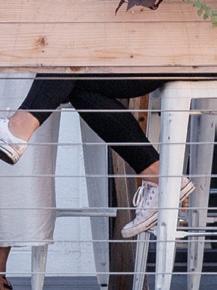









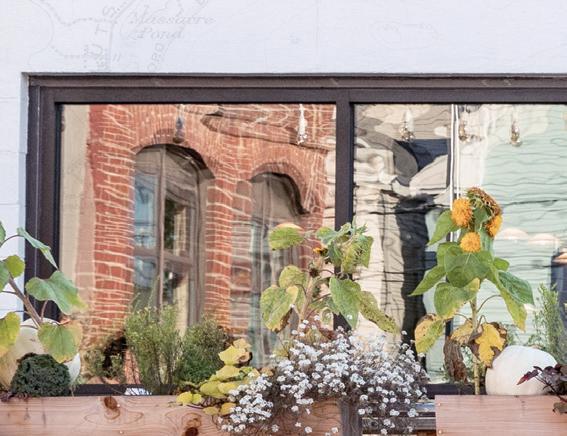









































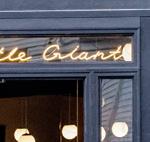






















































































 JOURNEY NO. 52 GREATER PORTLAND & CASCO BAY
JOURNEY NO. 52 GREATER PORTLAND & CASCO BAY




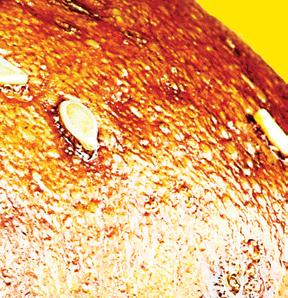




















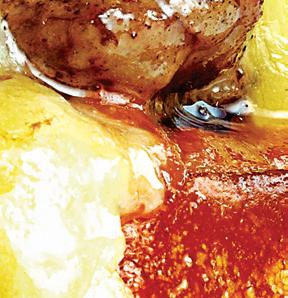













































To drive up to Portland’s Munjoy Hill on a late summer evening is to enter an urban garden of earthly delights … a food scene that hits every of-the-moment note … a veritable theme park of boho-hipster foodie-ism. On Fox Street, IPA-toting beer lovers gather around a game of cornhole and a bright-red food truck in the parking lot of Rising Tide Brewing Company. Across the way, the glass garage doors of Baharat are flung up to reveal diners tucking into plates of peach and halloumi kebabs and za’atar deviled eggs. At the top of the hill, on Washington Avenue, a kombucha fermentory stands within spitting distance of a wood-fired bagel bakery and an oyster bar; one block away, diners queue up for a coveted table at Drifters Wife, which Bon Appétit writer Andrew Knowlton has called “the wine bar of my dreams.” Some of these hopefuls will give up on the wait and walk a few blocks to binge on fries on a light-strung patio at Duckfat, or dig into poke and Japanese fried chicken at Izakaya Minato. And if that doesn’t cap off the night, there’s always another brewery (Oxbow), a distillery (Hardshore), and Maine Mead Works on the same block.
It’s almost too much of a good thing. Are you full yet? Save room for breakfast. There are potato doughnuts at the Holy Donut and positively unholy almond croissants at Belleville. Over on the west side, the coffee and pastries at Tandem have achieved cult status well beyond Maine’s borders.
Portland is hip. Portland is sexy. And in that aforementioned Knowlton review, it was named the 2018 “Restaurant City of the Year.” Today it’s not unusual to hear locals reference “the Bon Appétit article” with equal parts vexation and pride: It’s harder to get a table anywhere now, but it’s nice when the world affirms your good taste.
Meanwhile, 100-odd miles to the south, Boston suddenly finds itself in the role of midsize middle sibling. For decades, it perceived its closest competition as New York (even though New York’s eyes are really turned toward Los Angeles). And now Portland is getting all the love? It’s as if Boston’s little sister has suddenly grown up and won prom queen. This has inspired no small amount of lamentation in the local media, beginning with an August 2018 Globe column by Devra First titled “Why Don’t Boston Restaurants Win National Awards?” in which she asks the most painful of middle-child questions: “What’s Portland got that Boston doesn’t?” Eater’s editor in chief, Amanda Kludt, poured on the salt, calling Boston “boring” in a headline, which put the city in a uniquely Bostonian bind: How to respond to a direct attack without boosting its reputation as a too-touchy town?
Boston chefs have defended their city, penning blogs and columns. “For a chef, restaurant owner, and member of the Boston restaurant community, it is a particular kick in the stones when you read that our local and national food media think that Boston is one big snooze fest,” Will Gilson of Puritan & Company wrote on Eater. “When a question is asked, ‘Why don’t more Boston restaurants win national awards?’ it makes each chef in this town want to throw a sauté pan through a window.”
Well, Will, I have a confession to make. I love eating in Portland. I love its compactness, its innovative spirit, the whole gestalt of it. I have called it “my favorite New England food town” several times on our TV show, Weekends with Yankee. I’ve lived in Boston for nearly 20 years, and, if I’m honest, this familiarity has bred a critical complacency. With Portland, there’s that new-city smell, the escape from everyday life. With Boston, I return from dinner to find a basket of unfolded laundry.
And of course there are market realities. For Boston restaurateurs, money is both the city’s greatest asset (there’s more capital and a larger population of wealthy diners) and its biggest handicap (commercial rents are higher, as are construction, labor, and food costs, not to mention housing and transportation). Consider that a full liquor license can cost up to $500,000 in Boston. In Portland? Typically less than $3,000. Think of how that initial outlay affects how chefs do business. Are Portland chefs freer to experiment? Yeah, probably. But does the added pressure keep Boston chefs at the top of their game? Quite possibly. And at the most superficial level, all that investment money sure produces some great-looking dining rooms.
Clearly, it’s time to sweep away some assumptions and compare Boston and Portland side by side, category by category, setting aside the buzz and that Vacationland glow. What is really the best food town in New England? And what does that title even mean?
To get at the answers, we surveyed the two cities’ dining landscapes to identify which restaurants are doing the best food and drink in 25 categories: bakeries, seafood, Japanese, vegetarian, etc. And in the end, the city with the most “wins” got our title. (For now. Food scenes always evolve.)
But first, let’s consider the obvious. Boston is much bigger and thus should be more likely to win the most categories. Boston is a grand smorgasbord to Portland’s lovely tea tray, if you will. We did our best to factor that in, so if Portland had fewer restaurants in a category but their quality was notably high, it got the nod.
Who does it best? Read on and see….

The following 25 categories best reflect what’s happening in New England food and drink right now: the most buzzedabout cuisines, the regional must-haves. In choosing the top performers in each category, we limited ourselves to establishments within five miles of the city center (though we bent our rule in one very worthy case—see “Diners,” p. 87).

THE CANDIDATES
Boston
3 Little Figs, Café Madeleine, Clear Flour, Flour, Forge, Hi-Rise, Iggy’s, Maria’s Pastry Shop, Sofra, Tatte
Portland
Belleville, Scratch, Standard, Tandem, Ten Ten Pié, Two Fat Cats
THE WINNER: PORTLAND
Boston’s baking scene is nothing to shake a baguette at, but the power of the Standard-Scratch-Tandem trifecta can’t be denied. If it’s a carb crawl you’re craving, Portland more than delivers on from-scratch bona fides—not to mention a relatively short distance from one spot to the next.
THE CANDIDATES
Boston
Blackstrap, Blue Ribbon, Larry J’s, the Smoke Shop, Southern Proper, Sweet Cheeks Q
Portland
Elsmere, Salvage, Terlingua
THE WINNER: BOSTON
For a bunch of Yankees, New Englanders sure make some respectable barbecue. And of all the good options here, nothing makes us happier than a combo plate of Tiffani Faison’s heritage-breed pulled pork and biscuits at Sweet Cheeks Q—except maybe Andy Husbands’s brisket at the Smoke Shop. And since both spots are in Boston, we’ve got to hand it to (Pork and) Beantown.
THE CANDIDATES
Boston
(Bars) Deep Ellum, Lord Hobo, Meadhall, the Publick House, Row 34; (Breweries) Aeronaut, Backlash, Idle Hands, Lamplighter, Mystic, Night Shift, Trillium

Portland
(Bars) The Great Lost Bear, Liquid Riot, Mash Tun, Novare Res, the Thirsty Pig; (Breweries) Allagash, Austin Street, Bissel Brothers, Foundation, Oxbow, Rising Tide

THE WINNER: TIE
Boston may be home to Jim Koch’s Boston Beer Co. (which helped get the whole craft beer thing started 30-plus years ago) and beer-geek bars like Lord Hobo, not to mention Trillium and Night Shift breweries, but Portland has more breweries per capita than any other U.S. city. That’s tough to top, especially when they’re as good as Allagash and Rising Tide. Call this one a draw.
THE CANDIDATES
Boston
Allston Diner, the Breakfast Club, the Friendly Toast, Juliet, Little Dipper, Mamaleh’s, Mike & Patty’s, Mike’s City Diner, Sofra
Portland
Bayside American Café, Becky’s Diner, Dutch’s, the Front Room, Hot Suppa, LB Kitchen, Portland Pottery Café, Union

THE WINNER: PORTLAND
A reliably great breakfast place, where the doors open daily at 7 or 8 a.m., is a beautiful thing. From the breakfast sandwiches at Boston’s Mike & Patty’s to the eggs Benedict at Portland’s Hot Suppa, you’ll start the day well in either city. But Portland has the edge here because Hot Suppa is that good and because the city rounds out its a.m. options with the best doughnuts in New England (see p. 87).
“Boston
Schulte & Herr, the Sinful Kitchen, Terlingua, Tipo, Woodford F&B

THE WINNER: BOSTON
Maybe it’s all those students sleeping in on Sundays, but Boston is a true brunch town. Options range from high-end (the $99 seafood Grand Plateau at Bistro du Midi) to high-low (the Fruity Pebbles pancakes at Lincoln Tavern). And while any day that begins with skillet cornbread at Portland’s Central Provisions is a very good day, the
THE CANDIDATES
Boston
Alden & Harlow, Bar Mezzana, Bred Gourmet, the Bristol, Bronwyn, Craigie on Main, Daddy Jones, Drink, the Gallows, Hojoko, Neptune Oyster, Toro
Portland
Brgr Bar, Chaval, East Ender, Grace, Hot Suppa, LFK, Nosh, Terlingua, Woodford F&B

THE WINNER: BOSTON
Portland has some seriously great burgers, including the cold-smoked patties at East Ender crowned with jack cheese, and the double-stacked Chaval burger. But Boston has two burger kings who’ve perfected the art of the patty: Tony Maws at his restaurant Craigie on Main (and Kirkland Tap & Trotter), and Michael Scelfo at Alden & Harlow (and Waypoint). From the cuts of meat to the way they’re ground to the artfully chosen
CARA STADLER
“The reason so many chefs have moved to Portland is a lot of the restaurants here are wholly owned by the chefs, not by some investor who’s telling them what to do.”
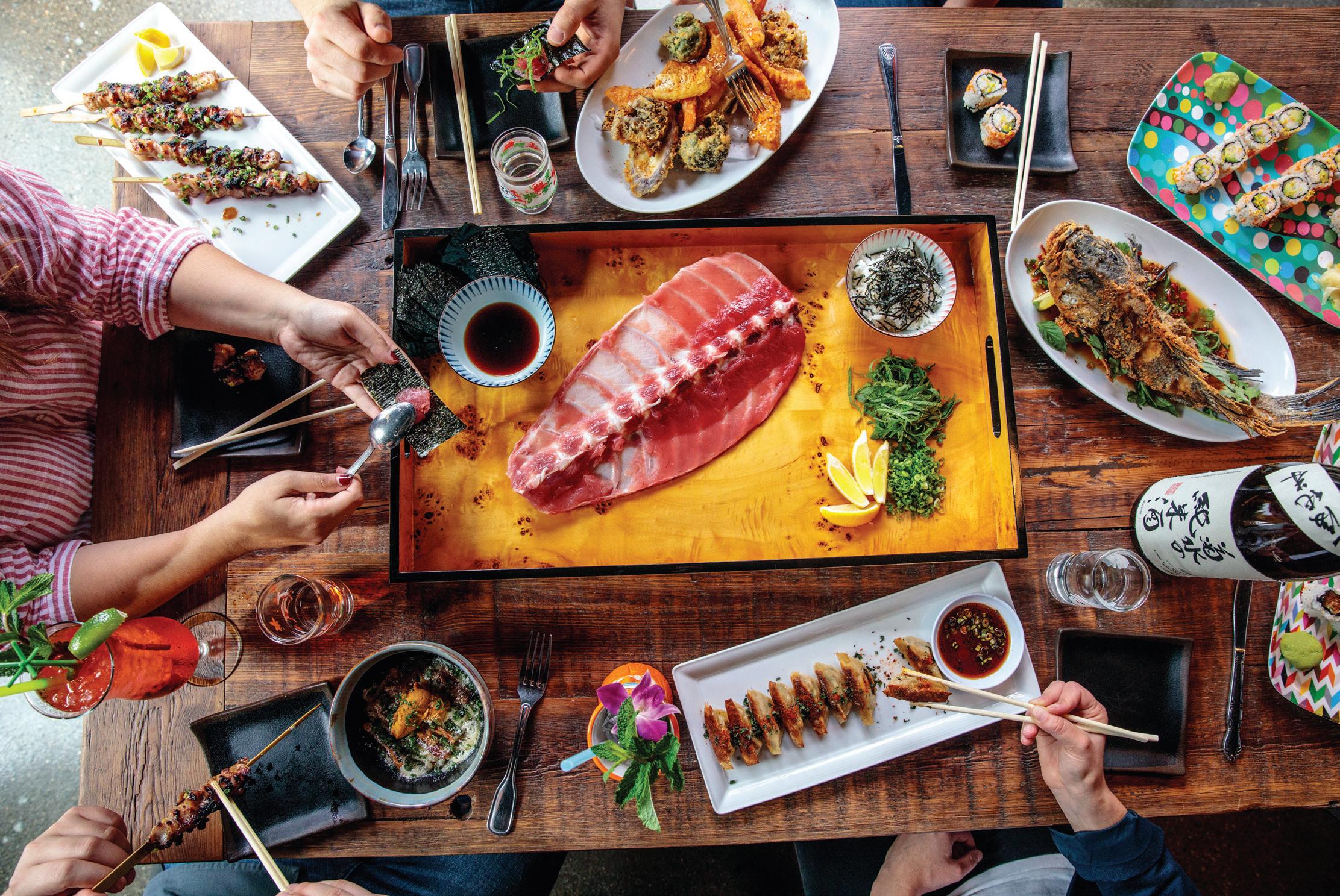

THE CANDIDATES
Boston
5 Spices House, BLR by Shojo, Dumpling Café, Gene’s Chinese Flatbread Café, Gourmet Dumpling House, Myers & Chang, Peach Farm, Sumiao, Taiwan Café, Winsor Dim Sum Café
Portland
BaoBao, Empire Chinese Kitchen, Hakka Me, the Honey Paw
THE WINNER: BOSTON
Given that Boston is the only city of the two with an actual Chinatown, there was some debate over whether it was fair to include this category. But Portland deserves a shout-out for Cara Stadler’s BaoBao dumplings and the Honey Paw’s As for Boston, between the modern riffs on ginger scallion lobster at Myers & Chang, the hand-pulled noodles at Gene’s, and the superlative soup dumplings at Gourmet
PURITAN & CO. | BOSTON
has always been this place that has had its pockets lined by people taking the coldest, darkest place and turning it into the best city they possibly can.”


THE CANDIDATES
Boston
3 Little Figs, 4A Coffee, Barismo, Diesel, George Howell, Gracenote, Loyal Nine, Render, Revival, Thinking Cup
Portland
Bard, Coffee by Design, Coffee ME Up, Higher Grounds, Speckled Ax, Tandem
THE WINNER: BOSTON
The craft coffee trend continues to up the ante on everything from roasting techniques to the art of the pour-over. And thanks to owner Patrick Barter’s mastery of such things, Gracenote is making the best coffee in the Northeast, followed closely by Render and the still-innovative godfather of New England craft coffee, George Howell. But when in Portland, don’t miss Tandem, both for the coffee and for the delectable pastries from Briana Holt.
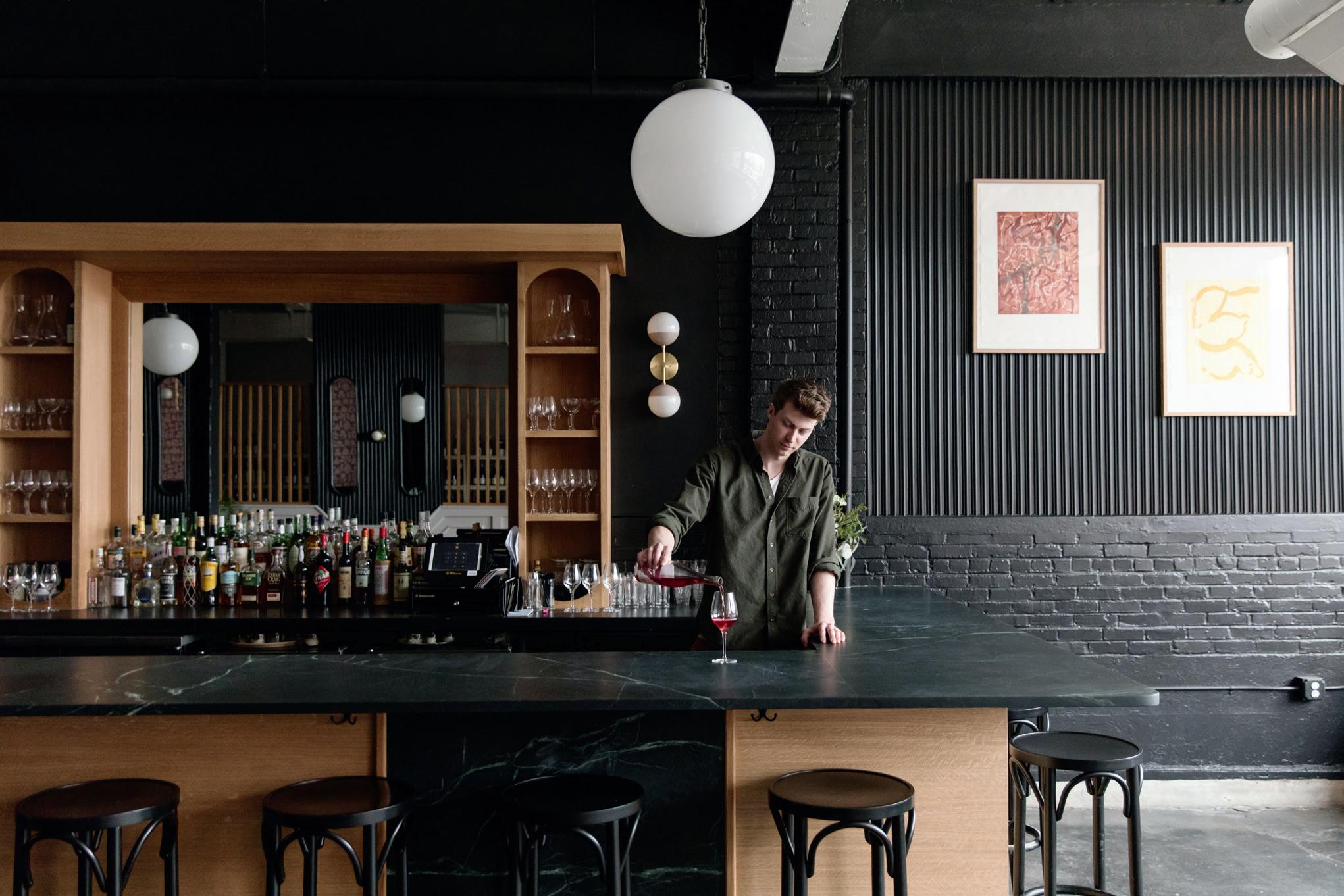

THE CANDIDATES
Boston
Mamaleh’s, Our Fathers, Zaftigs
Portland
Rose Foods
THE WINNER: BOSTON
It seems the long-anticipated Jewish Deli Revival is still in its infancy in New England, but the delis that we do have give us good reason to kvell. Boston’s Mamaleh’s, in particular, is doing extraordinary work with its house-cured pastrami and lox and its kugel and knishes—not to mention its top-notch cocktail menu. And in Portland, Rose Foods is a go-to for deli delights (plus, some of the best bagels in the country are a mere 20-minute drive north, at the Purple House in North Yarmouth). As for a winner, once you add Our Fathers and Zaftigs to Boston’s roster, the answer is clear.

“Boston

THE CANDIDATES
Boston
Allston Diner, the Breakfast Club, Buddy’s Diner, Busy Bee, Deluxe Town Diner, Kelly’s Diner, Mike’s City Diner, Rosebud, South Street Diner, Veggie Galaxy
Portland
Becky’s Diner, Miss Portland Diner, Palace Diner, Q Street
THE WINNER: PORTLAND
While Boston has a greater volume of verygood-to-great diners, we couldn’t overlook the fact that Portland is just a short drive from the Palace Diner in Biddeford, which has become the nation’s most celebrated diner. So between that and the fact that Becky’s opens at 4 a.m. to serve the fishing crews, this one goes to the Forest City.
THE CANDIDATES
Boston
Blackbird, Kane’s, Union Square Donuts
Portland
HiFi, the Holy Donut, Tony’s
THE WINNER: PORTLAND
We truly love the doughnuts at Kane’s, Blackbird, and Union Square, but the potato doughnuts at the Holy Donut are so fluffy, moist, and tender, we’d argue that all cake doughnuts should be made with mashed potatoes in the dough. And when you factor in Maine’s traditional mastery of the French cruller (by way of the Acadian community), it was an easy call.
FORE STREET, SCALES | PORTLAND
“Every time I think maybe this is the winter that the bubble will burst on our restaurant scene, it doesn’t happen.”
LYDIA SHIRE | SCAMPO | BOSTON
has given this country a lot of really great chefs—and there’s no question in my mind that it’s the hub of fine dining in New England.”
THE CANDIDATES
Boston
Bondir, Brassica, Craigie on Main, Field & Vine, Forage, Henrietta’s Table, Juliet, Loyal Nine, Puritan & Co., the Table at Season to Taste, Woods Hill Table
Portland
Central Provisions, Drifters Wife, Fore Street, Hugo’s, Miyake, Street & Co., Sur Lie, Union, Vinland, the Well at Jordan’s Farm
THE WINNER: PORTLAND

Farm-to-table-ness exists on a spectrum: At one end are the zealous practitioners, like Vinland, that source every ingredient locally. In the middle are the places that, like Puritan & Co. and Bondir, run their own farms but supplement that with, say, imported lemons. And last are the eateries that simply buy from nearby farms whenever they can. Across the spectrum, Portland’s farm-to-table ethos so permeates the restaurant scene (thanks in part to Sam Hayward’s long example at Fore Street) that it’s the best town for locavores.

THE CANDIDATES
Boston
Allium, American Provisions, Boston Cheese Cellar, Boston Public Market, Curds & Co., Eataly, Formaggio Kitchen, Savenor’s Portland

Browne Trading Market, C Salt, the Cheese Shop, Micucci Grocery, Portland Public Market, Rosemont Markets
THE WINNER: BOSTON
Make this comparison on cheese alone, and Boston could beat nearly any city in the country, beginning with the 300-plus varieties for sale at Eataly and ending definitively with the cheese caves beneath Formaggio Kitchen, where wheels are aged to perfection. Add in the many smaller gourmet and cheese shops, the abundance of the Boston Public Market, and the exquisite meats and produce at Savenor’s, and you’ve got a winner.
“There are significant X factors at play in Portland that have taken years to mature. The restaurants here feel homegrown and sophisticated at the same time.”

THE CANDIDATES
Boston
Christina’s, Crescent Ridge, Forge, Gracie’s, Honeycomb, the Ice Creamsmith, Morano Gelato, New City Microcreamery, Picco, Rancatore’s, Toscanini’s Portland
Beals, Gelato Fiasco, Gorgeous Gelato, Mt. Desert Island Ice Cream
THE WINNER: BOSTON
With all respect to the fine ice creams of Portland, this category was an easy pick. From the quality of the bases to the creativity of the flavors, Boston’s creamery scene is a cut above. One taste of Gracie’s salty whiskey or Toscanini’s signature Vienna finger cookie, and you’ll understand why.
THE CANDIDATES
Boston
Bar Mezzana, Benedetto, Coppa, Fox & the Knife, Giulia, Mida, Nebo, Pammy’s, Sorellina, Sportello, SRV, Sulmona, Terra
Portland
Enio’s, Lolita, Paciarino, Piccolo, Ribollita, Solo Italiano, Tipo, Vignola Cinque Terre
THE WINNER: BOSTON
Ever since Joseph Vercelli opened Boston’s first Italian restaurant on Boylston Street in 1868, Italian food has been the Hub’s go-to cuisine. And it’s never been better than it is today. Gone are the days of ethnic essentialism (“eggplant Parm and lasagna, check”). Chefs like Fox & the Knife’s Karen Akunowicz and Bar Mezzana’s Colin Lynch feel ever freer to push the boundaries of Italian cooking, making food that’s personal and inventive but still recognizable. Meanwhile, Sportello feels so of-themoment-Italian, you hardly need to cross the Atlantic.
KAREN AKUNOWICZ | FOX & THE KNIFE | BOSTON
“The thing that has kept me here in Boston is the people who have supported me and cheered me on. I couldn’t imagine doing this anywhere else.”
CHADCONLEY
| ROSE FOODS, PALACE DINER | PORTLAND
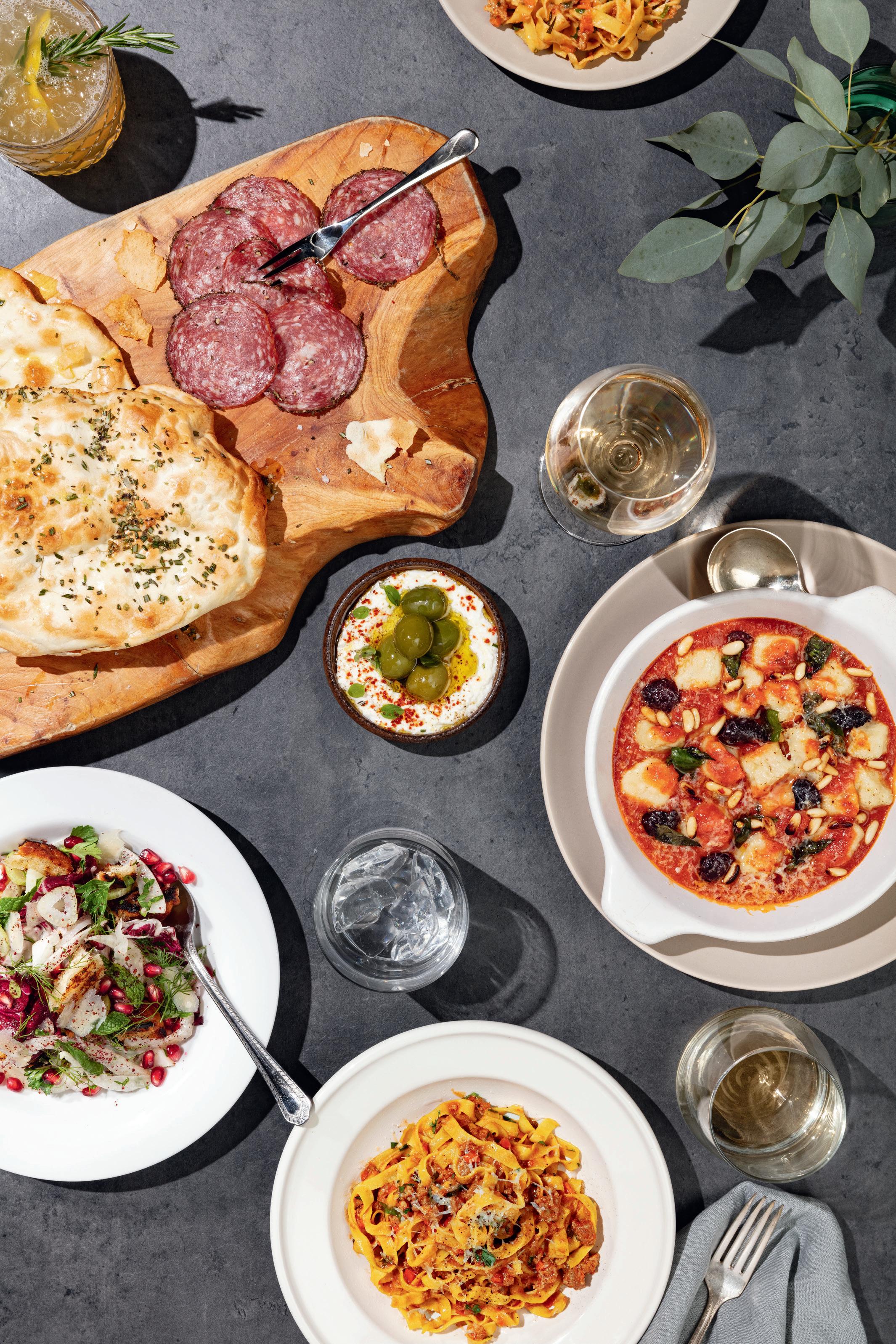 ITALIAN FOX & THE KNIFE, BOSTON
ITALIAN FOX & THE KNIFE, BOSTON
 SEAFOOD EVENTIDE OYSTER CO., PORTLAND
SEAFOOD EVENTIDE OYSTER CO., PORTLAND
THE CANDIDATES
Boston
Café Sushi, Douzo, Hojoko, Izakaya Ittoku, Kamakura, Momi Nonmi, O Ya, Oishii, Pabu, Pagu, Uni, Whaling in Oklahoma
Portland
Izakaya Minato, Mami, Miyake, Mr. Tuna, Pai Men Miyake
THE WINNER: TIE
There was more agonizing over this matchup than any other. Boston is home to two true national standouts (O Ya and Uni) and several award-worthy peers, and with the recent openings of Kamakura, Pabu, and Whaling in Oklahoma, there’s real energy in this category. And yet chef Masa Miyake’s nigiri is consistently the best we’ve had in New England— and at a much more accessible price point. Add the izakaya-style delights at Minato, which manages to feel exceedingly Japanese and fully local at the same time, and the superlative street food at Mami, and, well—we had to split the difference.

THE CANDIDATES
Boston
Anoush’ella, Chickadee, Garlic ’n Lemons, Oleana, Our Fathers, Sarma, Sofra
Portland
Baharat, Evo, Lolita, Tiqa
Long before Yotam Ottolenghi took the cookbook world by storm, Oleana’s Ana Sortun was bringing the flavors of the Middle East and the eastern Mediterranean to a wider audience. Then came sister restaurants Sofra and Sarma, and Boston became a destination town for hot buttered hummus, beet tzatziki, and tahini shortbread. Sortun’s three restaurants, along with Watertown’s Armenian markets, the fast-casual shawarma stylings at Garlic ’n Lemons, and the flatbread wraps at Anoush’ella, make Boston the clear winner.
THE CANDIDATES
Boston
Area Four, Brewer’s Fork, Galleria Umberto, Hot Box, Otto, Pastoral, Picco, Posto, Rabbotini’s*, Scampo
Portland
Belleville, Lazzari, Micucci Grocery, Otto, Slab, Tipo
THE WINNER: BOSTON
The fluffy squares at Belleville, Micucci, and Slab are a Portland signature and well worth the drive from anywhere in New England. However, Boston pizzerias offer a greater diversity of styles, from sourdough Neapolitan at Area Four to old-school Sicilian at Galleria Umberto. (Noted: Detroit-style pies, with their crisp caramelized-cheese edges, are all the rage, and Portland-based Otto makes them in both cities.)
*As of press time, owner Dan Roberts was still searching for a new, permanent location for Rabbotini’s, a former pop-up.

THE CANDIDATES
Boston
B&G Oysters, Island Creek Oyster Bar, Legal Harborside, Mooncusser, Neptune Oyster, North Square Oyster, Ostra, Row 34, Saltie Girl, Select Oyster Bar, Waypoint

Portland
Bite into Maine, Bob’s Clam Hut, Eventide, the Highroller Lobster Co., J’s Oyster, Maine Oyster Company, Scales, Street & Co.
THE WINNER: TIE
There’s a perception that Portland is the top seafood town, if only because tourists spend so much time in the Old Port, which bumps right up against the working waterfront. By contrast, Boston’s fishing fleet is hidden away. But a side-by-side survey of seafood restaurants proves that both cities are running strong. Scales, Eventide, and Street & Co. are fantastic; so are Mooncusser, Waypoint, Ostra, and Island Creek. With such an embarrassment of riches, it’s OK to simply celebrate that fact and call it a draw.
MIYAKE, PAI MEN MIYAKE | PORTLAND“Portland is still small enough that connections with the local fisheries and farmers are personal, so they’ll cultivate uncommon species just for restaurants.”
JOSH LEWIN | JULIET | BOSTON
“With a shorter growing season, chefs in Boston have to be more creative, to coax the ingredients out a bit more.”




Though Boston and Portland are front and center in the New England dining scene, we’ve also got our eye on the ambitious fare coming out of Providence, Rhode Island, and Burlington, Vermont. So we asked Providence Journal food editor Gail Ciampa and Vermont food writer Hannah Palmer Egan to map out the hot spots in their respective cities.










THE LITTLE TOWN THAT COULD

rovidence has a dining scene that surpasses all expectations for a city of its size. Its food o erings are boosted by the culinary school at Johnson & Wales and an overall sophistication that draws seekers of art and culture. Here you’ll find artisan bagels (most notably at Rebelle), top-notch Greek food, innovative Asian fusion, and Southern comfort.
Let’s start with the obvious: the famed Italian food in the Federal Hill neighborhood (I love tiny Enoteca Umberto and its pasta with creamy chickpeas, Pecorino Romano, and chili fl akes). But there’s so much more to explore on the other side of the hill, what locals call the West Side. There, you’ll find Big King, an Asian fusion spot with crisp tempura fish served by chef James Mark (whose North restaurant delights downtown diners with its dan dan noodles). Right around the corner, Bucktown serves the city’s best fried chicken. Thirsty? Head to Bayberry Beer Hall for New England brews and a killer weekend brunch, or Saint Monday for comfort food and comfort drinks (e.g., old-fashioneds and daiquiris).
The Valley Street area is home to Troop, beloved for its take on street food. Downtown, there’s top chef Ben Sukle at Oberlin, whose raw and cured seafood and local produce raise the bar on farm-to-table dining. Nearby Yoleni’s is leading the Greek revival with a restaurantmarketplace concept (consider it the Greek Eataly).
Heading toward the Providence River, you’ll find the Fox Point neighborhood, whose culinary riches include Persimmon, where chef-owner Champe Speidel brings a light hand to house-made pasta and seafood. At Milk Money, small plates are king, served in a cozyrustic room that feels modern and intimate.
Want to relive your youth? College Hill, home to Brown University, boasts the winning barbecue of Durk’s Bar-B-Q [ pictured ]—think dry-rubbed ribs or pork belly with a side of pickled veg—and a bar loaded with more than 100 whiskeys from all over the country.













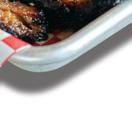

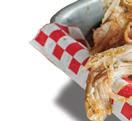 Gail Ciampa
Gail Ciampa

urlington is a city where everyone cares passionately about everything. And nowhere is that truer than in the food scene, where farm-to-table is a way of life. Here, local farms—many of them located within city limits— supply chefs with meat and produce year-round.



In the summer, a fleet of food trucks slings everything from crackling fried chicken to Thai noodle bowls and poutine, and in a state where the population is 95 percent white, the restaurant roster is rich in global fare. Head to Old North End for momo at Nepali Dumpling House and bowls of brothy soup at Pho Hong, or tuck into spiced chickpea stew at downtown’s Sherpa Kitchen
Do yourself a favor and grab breakfast in the form of an egg-stu ed popover at Mirabelles Café, or stop in at Penny Cluse, where chef Maura O’Sullivan’s sourdough French toast and cheesy home fries draw lines out the door. On weekends, hit up the bohemian brunch at ¡Duino! (Duende), where the mostly organic menu includes savory tomato shakshuka and scallion latkes topped with butternut squash gravy.
When the weather’s warm, Honey Road’s patio is the place for cold beers and chicken wings glistening with honey and harissa. Burgers are best at hipster hot spot ArtsRiot , where chef George Lambertson stacks beef patties with house-made pickles, gooey cheese, and special sauce. Or you can class it up next door at Dedalus Wine Shop, Market & Wine Bar, which o ers a smartly curated collection of natural and microbatch wines.

A worthy tasting tour for beer lovers would include stops at Foam Brewers for aromatic IPAs on the waterfront, Zero Gravity for rustic farmhouse ales, and Queen City Brewing for Old World–style ales and lagers. While you’re at it, swing by Switchback Brewing and sample its fl agship amber ale.







For dinner, it’s hard to top the crispy fried rabbit or house-cured coppa at Hen of the Wood [ pictured ], capped o with a cocktail made with an aged gin or whiskey at Highball Social , the new bar from Stonecutter Spirits. Eat local, drink local, sleep well. —Hannah Palmer Egan

“We have a tight market, a seasonal market, which is tough. But people support us and make dining out part of their everyday routine, and that feels really good.”
THE CANDIDATES
Boston
Alden & Harlow, Barcelona, Bisq, Committee, Little Donkey, Pagu, Sarma, Taberna de Haro, Toro, Waypoint, Yvonne’s Portland
Central Provisions, Chaval, Isa Bistro, Lio, Lolita, Portland Hunt & Alpine Club,Tipo
THE WINNER: BOSTON
Forgive us, Spanish purists, for sticking the centuries-old tapas tradition in the same category as the Millennial smallplates trend. The former inspired the latter, and it’s the most popular mode of dining today, as entrées are being supplanted by sharable apps. While both Boston and Portland have restaurants that ace this format, the Hub wins for both quantity and quality—as anyone who has sampled the crispy confit pork belly at Bisq or the fried chicken sandwich at Little Donkey can attest.
THE CANDIDATES
Boston
Bin 26, the Butcher Shop, Haley.Henry, Lion’s Tail, Nathalie, Rebel Rebel, Spoke, Wine Bar at Tasting Counter

Portland
Drifters Wife, Lolita, MJ’s, Sur Lie
THE WINNER: BOSTON
Portland’s Drifters Wife deserves every bit of praise it’s received since its 2016 debut. But we’d argue that the one upside of Boston’s ridiculously overpriced liquor licensing system is that restaurateurs who acquire the comparatively affordable beer-andwine-only licenses have to work harder to produce expertly curated, distinctive wine lists to draw diners. This is doubly true for wine bars, many of which are now focused on natural wines made without sulfites or other additives. If you haven’t done a Boston winearound, you owe yourself a visit.
THE CANDIDATES
Boston
Anh Hong, Dakzen, Mae Asian Eatery, Pho Viet’s, S&I To Go, Tiger Mama
Portland
Boda, Cheevitdee, Cong Tu Bot, the Honey Paw, Mi Sen
THE WINNER: PORTLAND
Here’s a case where having more restaurants in a category doesn’t guarantee a win. Boston has the greater number of Southeast Asian restaurants, but Portland boasts a higher proportion of excellent ones. Of special note: the chicken pho at Cong Tu Bot, the lobster toast at the Honey Paw, and the curries at Cheevitdee.
“A city becomes what its residents support. Boston’s client base for fine dining has always been limited, but more casual restaurants do really well.”
THE CANDIDATES
Boston
Clover, Cuong’s Vegan, Health Club, Life Alive, Red Lentil, Sassafras, Saus Bow Market, Taco Party, True Bistro, Veggie
Galaxy, VO2, Whole Heart Provisions
Portland
Green Elephant, LB Kitchen, Local Sprouts
Cooperative, Simply Vegan by Silly’s
THE WINNER: BOSTON
Looking at strictly vegetarian or vegan spots, not simply veggie-friendly ones, it’s obvious that Boston—the city that birthed Clover (now with 12 locations), a vegetarian diner (Veggie Galaxy), and a vegetarian Belgian frites shop (Saus Bow Market)—is the hands-down winner.
THE CANDIDATES
Boston
James Hook & Co., Legal Harborside, No Name Restaurant, Outlook Kitchen, Restaurant Dante, Rowes Wharf Sea Grille
Portland
Boone’s, DiMillo’s, Flatbread Company, J’s Oyster, Saltwater Grille, Scales
THE WINNER: PORTLAND
There was a moment when it seemed Boston might finally embrace its waterfront properly, with the Institute of Contemporary Art cantilevered over the harbor and a handful of restaurants with water views … and then it slapped up a bunch of bland high-rises. Talk about paving paradise. With more worthy restaurants within sight of Casco Bay, Portland gets the call.
Want
With a final score of 15–7 (not counting three ties), Boston wins the showdown. And for its scope, its diversity, and the talent of its chefs, it does, in fact, deserve the mantle of New England’s best food town. Portland chefs may be freer to experiment, and the average bill may be smaller, but by virtue of the intense competition of surviving in a big city, Boston chefs are pressed in the way that produces more diamonds (and plenty of burnouts).

And yet … in this case, maybe the whole is less than the sum of its parts. Maybe what matters most is not who wins, but where you can find your favorite food. Do you love bakeries? Go to Portland. Love Italian food? Boston’s your town. If you want a compact city where chefs can afford to do more offbeat, personal food and the doughnuts reign supreme, Portland is paradise. If you want to dive deep into Chinatown’s hand-pulled-noodle scene, try some game-changing ice cream, and end the night at a Peruvian restaurant that’s earning national raves, Boston will give you that, and more. Always more. —A.T.



THE ATV ECONOMY HAS BEEN A GAME CHANGER IN NEW HAMPSHIRE’S COOS COUNTY. BUT EVERY CHANGE HAS A PRICE. WHO PAYS IT, AND HOW MUCH SHOULD BE EXTRACTED FROM THEM TO BOOST THE FORTUNES OF A REGION?
BY IAN ALDRICH PHOTOGRAPHS BY MARK FLEMINGWe’re a good 15 minutes into our ride when Ray Bergeron brings our ATV to a momentary stop. At the edge of a wide gravel road that climbs to a rise in the shadow of Jericho Mountain in Berlin, New Hampshire, Bergeron peers over the nose of his four-wheeler in the direction of a narrow passage that descends into the woods. “Welcome to Holt’s Revenge,” he cracks. Then he whips around to look at me. “You ready?”
But we both know Bergeron isn’t really asking. Before I can answer, he presses the accelerator and we plunge forward. Over the next 10 minutes we descend and climb, ripping around tight corners, spraying gravel in our wake. I hold on tight. Bergeron, who is 58 and has spent the bulk of those years wrenching on cars and power-sports equipment, navigates the terrain with the confident ease born of experience. Gunning here, laying off there. At different moments he snaps his head back toward me. “You still here?” he asks, letting out a laugh. The first time, I’m sure he’s joking. After the third time, I’m not so sure. “He’s still with us,” he confirms to my colleague and photographer, Mark Fleming, who’s riding shotgun. Is Holt’s a one-way trail? I’m afraid to ask.
Thankfully, we have the route to ourselves. But that’s not the case with the rest of Jericho Mountain State Park, home to its namesake mountain and, on this early August weekend, the center point of the Jericho ATV Festival, a two-day carnival of mud pit runs, obstacle course rides, professional freestyle shows, and free rein over the park’s 85 miles of trails. In all, nearly 7,000 people will descend on Jericho for the weekend. Many have come from southern New England, ATVs in tow, with money to spend on food, hotel rooms, and even brand-new $25,000 machines.
In a region that has spent the better part of two decades sputtering to formulate a post–paper mill identity, this weekend is seen by many as a sure sign that a new and unexpected tourist economy, one that revolves around ATV riders, has emerged for New Hampshire’s Coos County. New businesses have opened, familiar ones have expanded, and as the dollars have rolled
in, the small towns that dot the mountain landscape have increasingly catered to the influx of visitors. They’ve opened their roads to ATV use, allowing greater access to more than 1,000 miles of trails that snake through the region.


Yet as this developing economy has taken hold, it’s deepened old divisions and created new ones over how the most northern part of the state should be transformed. Nobody debates that the region’s deep wilderness is its most sellable asset. But how it’s leveraged is at the center of a battle that’s pitted residents, even family members,
against one another. In Gorham, which is the epicenter of some of the White Mountains’ most popular hiking trails, a group of neighbors sued the town and the state last year, charging that the community’s embrace of ATVs had permanently damaged their way of life. Every change has a price. But who pays it, the lawsuit essentially asked, and how much should be extracted from them in order to boost the fortunes of a region?

“It’s like the whore on a street,” one longtime Gorham resident told me. “Sure, the money is good. But one day



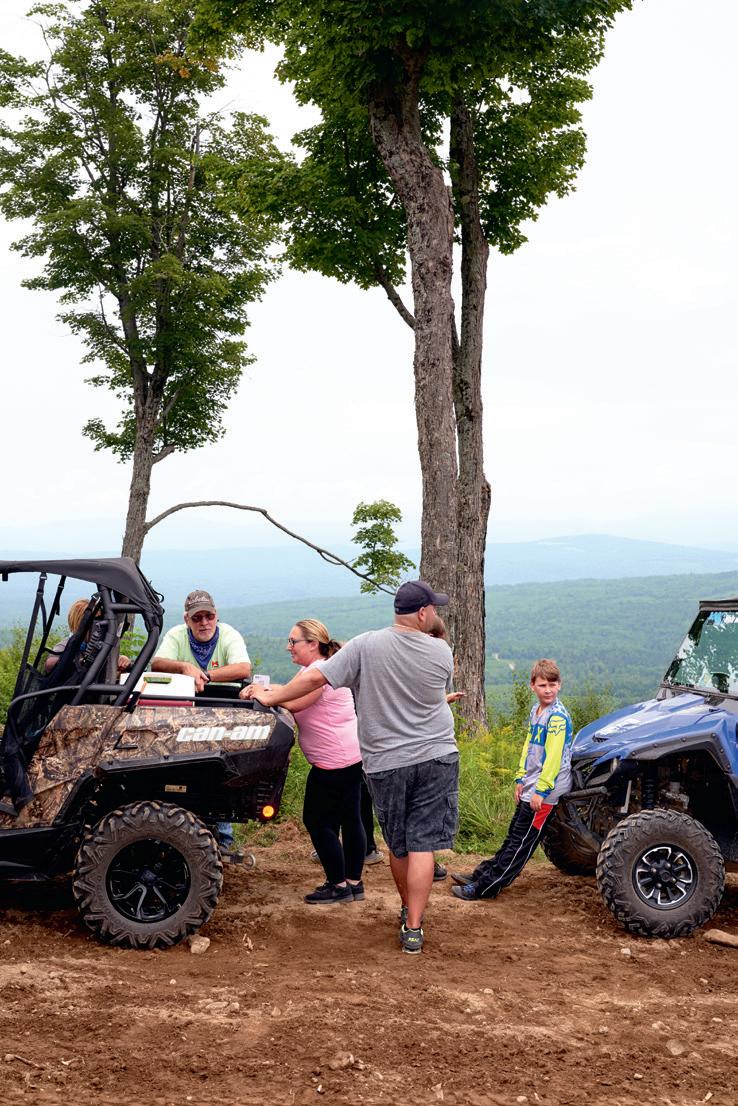





nobody will want her anymore. That’s kind of what I think we’re doing to ourselves. We’re polluting with noise and dust, and we’re not thinking. We’re just taking the money.”
Bergeron, a Berlin native, doesn’t see it that way. As the owner of White Mt. ATV Rental in downtown Gorham and head of the Presidential OHRV (Off-Highway Recreational Vehicle) Club, he promotes off-roading with an outsize enthusiasm that is both infectious and gravitational. He talks with equal passion about how ATVs have opened the outdoors to a new swath of people and about the work his volunteer crew has done to clamp down on the “small percentage of knuckleheads” who feel the need to let loose in the wrong areas.
When we veer off Holt’s Revenge Trail to stop at a popular ridgetop clearing, he roams the peak, shaking hands with customers he recognizes, greeting state officials with a chummy familiarity, and doing general check-ins with other riders on how their machines are performing. He’s in constant sales mode: selling his business, selling the region, selling the power of this new economy. There’s too much at stake otherwise, he says.
“We have a lot to lose,” Bergeron says. “A lot of my friends had to leave after the mills closed. I was the first one to see it, because I deal in ‘toys.’ Hey, Ray, can you sell my snowmobile? Can you sell my Harley?
“ I know what the people who I like to call the naturalists think of me,” he continues, “that I’m one of the ones who brought all these carbon-spewing vehicles into the area.” He laughs. “I’m a big-ass target. Guys like me [are seen] as people who gun it, do wheelies, make noise, and go like a bastard!” Then his voice softens. “But that’s not us. We’re just out here looking at the scenery in a different way.”
running on the Androscoggin. By the mid-1890s, Berlin had become a major paper producer, driven in part by the success of the Berlin Mills Company. Renamed the Brown Company in 1917, it employed between 600 and 800 in the summer, up to 1,200 men in logging camps during the winter, and 450 river drivers in the spring.
The Brown Company was also at the heart of community life. It built a school on its property and hosted dances and opera house plays. The Brown family’s home on Church Street was a point of local pride.
But the Depression and greater postwar competition eroded the firm’s dominance. In 1968 Brown was sold to Gulf and Western. It was sold again
at a worse time. The closures arrived just as the global economy took a deep dive, taking other employers down with it and further weakening a region that was already teetering on the edge.
Starting in 2008, for example, Gorham went four years without a single new building permit application.
“People had no sense of a future,” Berlin mayor Paul Grenier told me. “They were encouraging their kids to leave the area. You’re never going to get a job here. Get out. And the kids were leaving.”
As the region’s mill economy was unraveling, one of Grenier’s predecessors, Robert Danderson, began eyeing what was happening in West Virginia. In the southern part of the
To understand northern New Hampshire’s embrace of the ATV economy, it helps to know the story behind the economy that preceded it. When Berlin was incorporated as a town in 1829, small lumber mills were already

in 1980, then once more in 1995. Each sale initiated a round of attrition. In 2001, the mill temporarily closed. It later reopened as a pulp plant but shut its doors for good in 2006. Today, Berlin’s population is about 10,000—half what it was a century ago.
Just a few miles south, Gorham’s fortunes have fared only slightly better. Gorham Paper and Tissue is still in operation, but it employs just 110 people, and its viability is always in question. In 2018, the mill fell behind on its tax payments, and for a time its executives did not return phone calls from town officials.
For the Gorham-Berlin region, the mills’ struggles couldn’t have come
“IF YOU LISTEN TO THE ATV FOLKS,” SAYS ONE GORHAM BUSINESSMAN, “IT’S ALL GREAT—THE MORE THE BETTER. IF YOU LISTEN TO THE OTHERS ... MAYBE THAT’S NOT THE CASE.”
state, a tract of former coal mining land had been converted into a 600mile off-road riding network known as the Hatfield-McCoy Trails. In its first five years of operation, an estimated $25 million had been injected into the local economy.
Danderson saw a similar opportunity in Berlin, in an underused 230acre city park just a few miles from downtown. With the state looking to meet the demands of a growing interest in ATV terrain, he approached officials at the Department of Resources and Natural Development about turning the area into an off-road destination. In 2005, the land was combined with an adjoining 7,200-acre swath to create Jericho Mountain State Park.
“I had read that snowmobiles added something like $1 billion to New Hampshire’s economy, and that amazed me,” Danderson, a retired public utility employee, told me by phone from his home in Florida. “Gas, hotels, buying machines [and] accessories—I felt ATVs would surpass that eventually, because you’ve got the longer season and you’re not as weather-dependent.”


Not long after the state park opened, a movement began to widen the county’s ATV reach. The aim was both simple and complicated: to bring together a patchwork of logging roads, state land, and snowmobile trails to create a vast riding network. The county’s 11 main off-road volunteer clubs and three chambers of commerce
played nice, finding compromise and shelving local agendas for what they saw as the greater good. In June of 2013, Ride the Wilds, a 1,000-mile collection of trails that extends from Gorham to Pittsburg, on the Canadian border, was officially dedicated.
In the years since, the region’s offroad identity has been defined by growth and controversy. As the county’s ATV economy has taken shape, its presence has become amplified in everyday life. In communities like Gorham, Berlin, and Stark, drivers and riders share local roads between May and November. That’s no small matter. The convenience of ditching a truck or trailer and riding directly to a trailhead or a restaurant, or back to a motel after
Gorham resident Lois Stearns says nearby ATV activity has caused her home’s value to drop below what she and her husband, Court, paid nearly 15 years ago. Ray Bergeron, owner of White Mt. ATV Rental in Gorham, says his business has felt the effects of the controversy over ATV tourism.a day in the woods, is one of the prime selling points for visiting the region, tourists and town officials told me.
But in embracing this kind of tourism, communities have contended with other issues born from the conveniences they’ve fostered. Noise and traffic never really cease for those who live near a trailhead, and in a state that permits drivers as young as 12 to operate an off-road recreational vehicle, safety is another concern.
“I think we all understand that ATVs can play a part in the economy up here, but we seem to be losing sight of any kind of balance,” said Howie Wemyss, general manager of the Mount Washington Auto Road in Gorham. “It’s just ATVs all the time.

Are we driving away the people who have always come here? What are the effects? We don’t know. If you listen to the ATV folks, it’s all great—the more the better. If you listen to the others ... maybe that’s not the case.”
What brings people to New Hampshire’s Coos County today are many of the same things that have always brought people to the region. Encompassing both the White Mountain National Forest and the expanse of the Great North Woods, it offers visitors access to vast tracts of wilderness—a rarity in the increasingly land-fractured Northeast. And even decades after highways and technology have granted
its residents greater connectivity to the broader world, a proud sense of isolation pervades the place, where selfreliance and a sense of local community are as prized as any currency.
Those were the kinds of things that called to Lois and Harry “Court” Stearns. As their retirement came into focus, the couple, who’d spent much of their married life in the region, knew they wanted to settle close to woods and waters where Court could pursue his hunting and fishing passions. In 2005, the Stearnses moved from South Dakota, where Court, an orthopedic surgeon, had finished a six-year stint at a hospital in Rapid City, and into a newly built five-bedroom home just outside downtown Gorham. It was bigger than
what they wanted, but it packed an aesthetic and a setting that couldn’t be beat. There was a large fieldstone fireplace, big windows that opened up to acres of woods, and a former railroad bed that Lois walked daily with her dogs.
“It was in town but felt like a camp,” Lois told me as we sat around her dining room table. “We just felt like, What a place! ”
During my visit we were joined by two of Lois’s friends: Sandy Lemire, who lives right down the road on Route 2, and Mark Malia, another neighbor. It was early August when we met, late morning, and the Jericho ATV Festival had kicked off only a few hours before. Its presence was impossible to ignore. Around Lois’s house buzzed the sound
of off-road machines. Riders rumbled down the old railbed, a mere hundred yards from the home, then banked a left and blasted up a wide gravel path running behind a stand of trees that only partly shielded the house from the trail. When describing her affinity for her home and life in Gorham, Lois talked strictly in the past tense.
The change began in 2011, when Gorham’s board of selectmen opened up existing snowmobile trails to ATVs, which would affect the region in a way that few foresaw. But the Stearnses quickly realized what it meant. Maybe more than any other place in Coos County, their home was in the cross hairs of the region’s ATV scene. Off-road trails wrap around the property’s borders, while the town’s main off-road parking lot is next to the driveway. It wasn’t long before the lot began regularly filling up with the trailers and trucks of out-of-town riders who wanted to make the 10-mile journey to Jericho on their machines.

For the Stearnses, who owned ATVs themselves, and for others who lived on or by the trails, it completely changed the tenor of their homes. They rallied to speak to town officials, to plead for them to move the trailhead or reconfigure the trail. There were lengthy discussions between the opposing parties, and a committee even met for a time to hash out the differences. But with the ATV scene only continuing to grow, the acrimony and mistrust never subsided. Then, in March 2018, the bad feelings escalated when 13 Gorham residents filed their lawsuit against the town and the state. Both Lemire and Malia are a part of the case, but the Stearnses are the lead plaintiffs.
Even more than his wife, Court became consumed by the situation. It was all he talked about, ranting to anyone who would listen about how his quiet retirement “dream” had been ruined. Lois pleaded for them to move, but her husband dug in. Sometimes he’d sit on his backyard deck, taking long drags off a cigarette as he watched the machines buzz by his house. At one point, Lois recalls, Court camped out at the end of the driveway with his rifle to let riders know of his presence.
In another instance, he placed a fake skeleton in the corner of a room with a sign that read, “The last ATV rider that trespassed on our property.”
As his home environment seemingly worsened, his mood grew darker. He and Lois fought constantly. “The thing was eating him up,” she said. On June 1, Court Stearns took his own life.
There’s a common language that both sides of this issue use to describe their situation. Neither party feels as though they can speak up or talk too loudly about their position for fear it will incite the other camp. I heard this from Ray Bergeron, and I also heard it from Lois Stearns, Lemire, and Malia, who all described moments when riders purposely stopped in front of their homes to rev their machines. Through the buzz of those ATVs, they sometimes heard these visitors yell obscenities, they claimed.
Over the course of much of last summer, a shell-shocked Lois barely left her house. She struggled to find the space to mourn her husband while feeling imprisoned in a home that no longer felt like hers. After Court’s death, she installed a pair of dead bolts on her front door, which she keeps locked at all times; her windows also stay closed, even on warm summer days. And yet the sound of the machines remains a constant soundtrack in her life. Several times as we talked, she stopped mid-sentence. “Do you hear that?” she asked. Her hands shook with anxiety. Lois, who grew up in Berlin, talked constantly of just wanting to sell the house and leave.
“I’m out of here,” she said. “They tell me not to do anything drastic for a year, but I can’t stay. I have to get the hell out. I’m petrified. I’m a wreck.”
About an hour into our conversation, we headed outside. She showed me the trees and shrubs she and Court had planted, the outdoor oven they had built. She pointed out the spot along the edge of the woods where frequently they’d see a mama bear and her cubs. Then we hit the rail trail by her house and walked a section of the corridor behind her property that leads
to Jericho. A steady stream of ATVers rolled past us. They were all courteous, and as the drivers neared they slowed their machines much lower than the posted 15 mph limit. Many waved as they motored by.
We kept walking up the main trail until we were directly behind the Stearnses’ house. From this vantage point, it was easy to see what had first drawn the couple to the property. There was the babbling brook, and just beyond that the landscaped backyard, and then the house and those big windows. For a brief moment, the sound of ATV machines was just a faint background noise. Lois had the woods and her house to herself.
“It looks like a different place,” she said. “It looks so different from here.”
It was pushing noon when I returned to Jericho Mountain State Park for the second day of the ATV festival. After a morning of heavy rains, patches of blue sky had begun to show. The crowds were starting to pick up, and a long line extended not far from the entrance at the Can-Am tent, where visitors were waiting to test-drive new models. The growth of New Hampshire’s off-road economy has been aided by the development of a higher-end class of machines. Those simple, single-seater utility types that farmers latched on to in the 1980s are about as coveted these days as dial-up service. Today it’s all about the side-by-side, with room for up to four; burly suspension systems; highpowered motors; and semi-enclosed cabins. At a festival like Jericho’s, where bank representatives, dealers, and rows of new machines are splayed across the grounds, the temptation to upgrade can be too hard to pass up.
At the front of the Can-Am line, a young man sporting a big smile approached his wife. “That was the bank,” he said. He then turned to the two guys behind the vendor table. “I’m gonna have to set this test drive aside. I just got a new machine.”
“What’d you pick up?” one of the reps asked.
“A Polaris Sportsman Touring XP 1000,” the guy replied, beaming. The
two men gave approving nods. “It’s another one for the fleet.”
“Fleet?” I interrupted. “How many do you have?”
“It’s our sixth,” he said. He shrugged and looked at his wife, who was trying to wrangle their two young kids, then back at me. “I didn’t say we could afford it.”
On the other side of the festival grounds, not far from the credit union tent where the man I met was finalizing a new loan, I found Paula Kinney, executive coordinator of the Androscoggin Valley Chamber of Commerce. She was bogged down with a last-minute request by a vendor to use the mud pit for an archery event.

“We can’t do it,” Kinney told a colleague. “You remember we had to stop those foot races in the mud because of the insurance? We’ve already got those machines going through the mud, and people lose stuff, like vehicle parts. They’ll break their necks. I like crazy stuff as much as anyone, but there’s no way.”
Based in Berlin, the chamber is the main organizer of this two-day festival, which essentially makes it Kinney’s baby. Dressed in jean shorts, a black raincoat, a camouflage ball cap, and black rain boots decorated with a scattering of smiling emoji faces, Kinney had been at Jericho since 6 this morning. Already she had contended with a rainstorm that took down the chamber’s tent and had rallied volunteers who were hoping they didn’t have to work because of the weather.
As the day wore on, her spirits were buoyed by a turnout that was putting the event, now in its ninth year, well on pace to break attendance records. Any-
one who had a few seconds of her time heard about it. “We set the record last year and I was on cloud nine,” she told me in a voice hoarse from the nearly constant cheerleading she did as she roamed the festival grounds. “If we hadn’t had the rain it would have been even better, but I’ll take it.”
Her enthusiasm was more than just the result of a job well done. There was a sense of hometown pride, too. Kinney grew up in Berlin and had a front-row seat to the town’s changing economics. Her childhood home was next to the paper mill, and out of high school she landed a job with Gamm, a women’s
“IT’S NOT THAT I JUST LOVE ATVS ... [BUT] I DON’T SEE ANOTHER GROUP COMING HERE AND SPENDING THE KIND OF MONEY ATVERS DO,” A LOCAL CHAMBER OFFICIAL SAYS.
Though she has long loved hiking and biking in the mountains, Corrine Rober recognized the business potential of ATV tourism, and in 2013 she and her husband launched Bear Rock Adventures in Pittsburg.
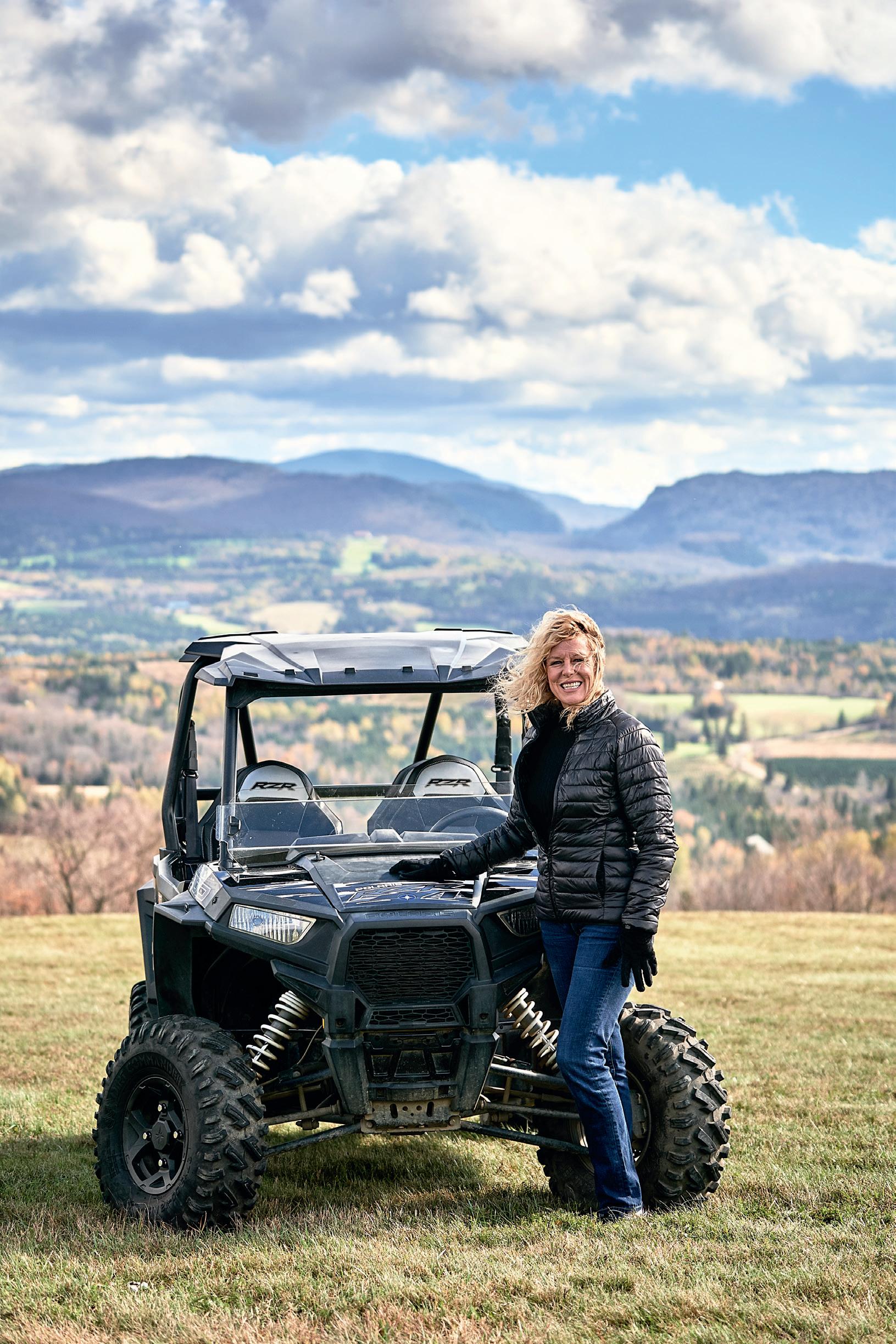

sportswear stitching plant, where she rose to the position of office manager. Three months short of her 20-year anniversary, however, she was hit with the news that the plant was shutting down immediately. Kinney and the 175 women who worked on the floor were instantly unemployed.
A decade ago, a desperate Kinney started volunteering with the local chamber. Symbolic of the greater challenges the community was facing, the organization was struggling to stay afloat. Kinney held bake sales and garage sales, whatever it took to raise the group’s profile and stabilize its
books. Eventually she strung together enough of a budget to convince the organization’s board to hire her as a paid employee.
Kinney, who saw early on the economic potential of ATV tourism, is arguably the region’s biggest off-road booster. She will direct people to the chamber’s motto—“Your Adventure Starts Here”—as evidence that her organization supports all kinds of recreation: rafting, hiking, cycling. But without a doubt the chamber is all in on off-roading. The annual festival at Jericho is only one of several big events that the chamber puts together for the
riding season, and its embrace of ATVs has put it at odds with some of the other businesses it represents.
Late last summer, Howie Wemyss of the Mount Washington Auto Road withdrew his company’s membership in the chamber after that group signed on as an intervenor to support Gorham and the state in the lawsuit that the Stearnses and others had filed. Wemyss is hardly a staunch opponent of this new economy. Each June his company hosts an ATV day that turns the auto road over to off-road machines
(continued on p. 128)

Once published in national magazines, Kosti Ruohomaa’s photographs showed the Maine he knew to the world. After he died in 1961, his legacy as one of New England’s greatest photographers was all but forgotten, with thousands of his images boxed up in a New Jersey warehouse. Now they are about to have a new life.
left : In 1945, just as Kosti Ruohomaa was establishing a national reputation, he captured this image of his father, Selim, heading out to milk the cows at the family farm on Dodge Mountain in Rockland, Maine.

right : Ruohomaa took time out for this self-portrait in a 19thcentury mirror while on assignment for Architectural Forum in 1945. Over the years his work frequently appeared in Life, Fortune, National Geographic , and other major U.S. magazines.

One day in October 2017, Kevin Johnson, photo archivist at the Penobscot Marine Museum in Searsport, Maine, arrived at a warehouse in Fort Lee, New Jersey. His mission: to resurrect a legend. Within 30 minutes he had loaded his SUV with seven two-foot-long boxes crammed with manila envelopes containing negatives, contact sheets, and notes. Each envelope was the result of a photo assignment (about 1,200 total)—the life’s work of Maine photographer Kosti Ruohomaa, who died in 1961 at age 47. Over the years, Ruohomaa’s name had been all but forgotten, except among a small cadre of photographers who after discovering Night Train at Wiscasset Station , a collection of his photographs published in 1977, would say his work had inspired them. Hours after leaving the warehouse, as Johnson crossed the New Hampshire border into Maine he stopped at a sign reading: “Welcome to Maine.” He then photographed the boxes to document the moment when, he says, “Kosti finally came home.”

A year later, I visit Johnson in an upstairs room at the museum to look at a small fraction of the collection. Deanna BonnerGanter joins us. A former Maine State Museum curator, she has devoted 30 years to researching Ruohomaa’s life (he supposedly told Andrew Wyeth to “say it like row-home-a boat”). Her 2016 biography, Kosti Ruohomaa: The Photographer Poet, chronicles how he became one of the top names at the famed Black Star photo agency in the ’40s and ’50s. His images of rural New England and its people—mostly Mainers—graced the pages of the nation’s most famous magazines. The way the world viewed Maine at that time was partly influenced by what Ruohomaa showed them. He wrote that he found his Maine “hidden in the offbeat nooks and crannies.” The expression of what he felt for his home region was compared to what Ansel Adams portrayed in the West.
Bonner-Ganter volunteers at least 15 hours a week to help make it happen.
As we open one of the manila envelopes, Johnson says, “I’ve seen maybe only 10 percent of what we have. There are surprises all the time.” Spilling out on a table are images of a river drive carrying timber from the North Woods to paper mills; workers on the family blueberry farm where Ruohomaa grew up, in Rockland, Maine; an island in winter, cold and harsh and strangely beautiful in black and white. “In the summer it is a bit too idealistically beautiful,” Ruohomaa once wrote of photographing Monhegan Island. “In the winter it has guts and drama and doesn’t wear such a pretty face. Anyway, it has the kind of meat my camera likes.”
opposite : Ruohomaa’s wax-pencil edits on contact sheets such as this c. 1950 one (in which a family friend demonstrates how to eat a lobster) show “how he went about realizing his vision and his method of approaching a photo story,” Johnson says.

Ruohomaa was racing time. Alcoholism was eroding his health, and, as Johnson says, “he knew the way the world was evolving, many things would not be around.” After he died, Black Star retained the rights to his work. For decades, it was as though his photographs had been buried with him. When the agency moved its headquarters, his photos landed in the New Jersey warehouse, where they might have languished for years, unseen. But Ruohomaa’s passion was matched by that of Johnson and Bonner-Ganter, who struck a deal with Black Star: The Penobscot Marine Museum would care for the work and return it to the public eye, while the agency would hold publishing rights.
There have already been two exhibits from what arrived in Maine from the warehouse. Johnson thinks they will need $350,000 and three more years to bring Ruohomaa’s world online. A patron has already pledged $100,000, and grants are being pursued. After spending a day with Johnson and Bonner-Ganter, I left thinking about how we often take museums for granted, when at their core they represent labors of love, and sometimes they serve to remind us of what we do not even know we have forgotten.
—Mel AllenThere may be as many as 50,000 images inside these boxes, all waiting to be catalogued, and eventually scanned and digitized, then placed on the museum’s website for the public’s viewing. It’s an ambitious and daunting endeavor.
To learn more, go to penobscotmarinemuseum.org. The museum’s exhibits are closed until May, but its offices, research libraries, and archives are open year-round.

right : Many of Ruohomaa’s selfassignments centered on everyday life in midcoast Maine, such as this student reading aloud in a one-room schoolhouse in Rockville in 1950.


top left : An up-country fisherman peddles fresh haddock outside a 1945 town meeting in Washington, Maine.
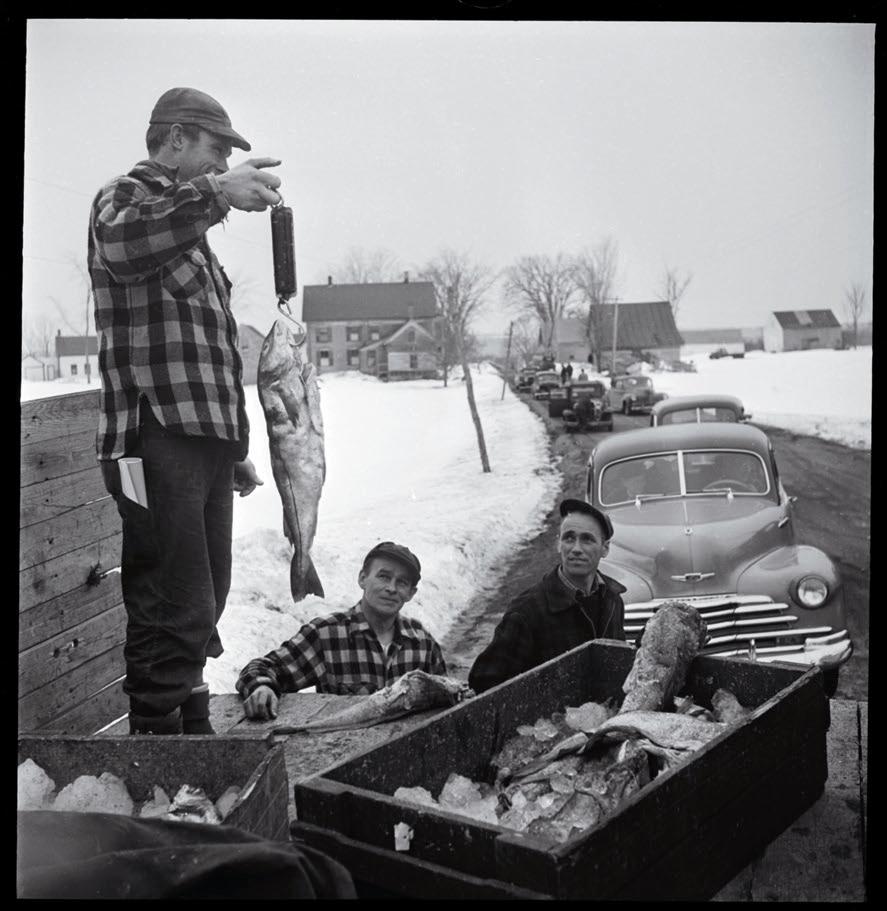
center left : Selectman Archie Lenfest reads a report during the Washington, Maine, town meeting. Ruohomaa photographed three different town meetings in Maine as part of his pursuit of folkways; photos from this shoot were published in The Boston Globe.
bottom left : Documenting traditions was important to Ruohomaa, who captured these drivers working their pike poles on the Machias River branch in April 1954. He enjoyed the experience so much he asked the St. Regis Paper Company if he could photograph the log drive again in 1958. The last log drive in Maine would be held in 1976.
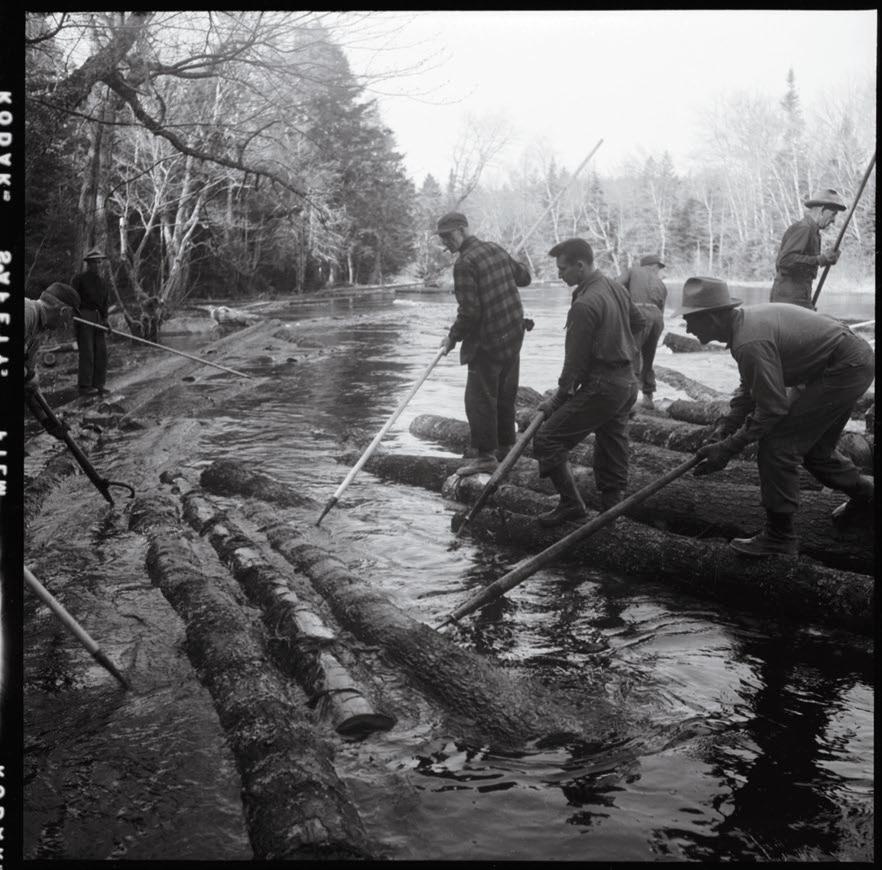

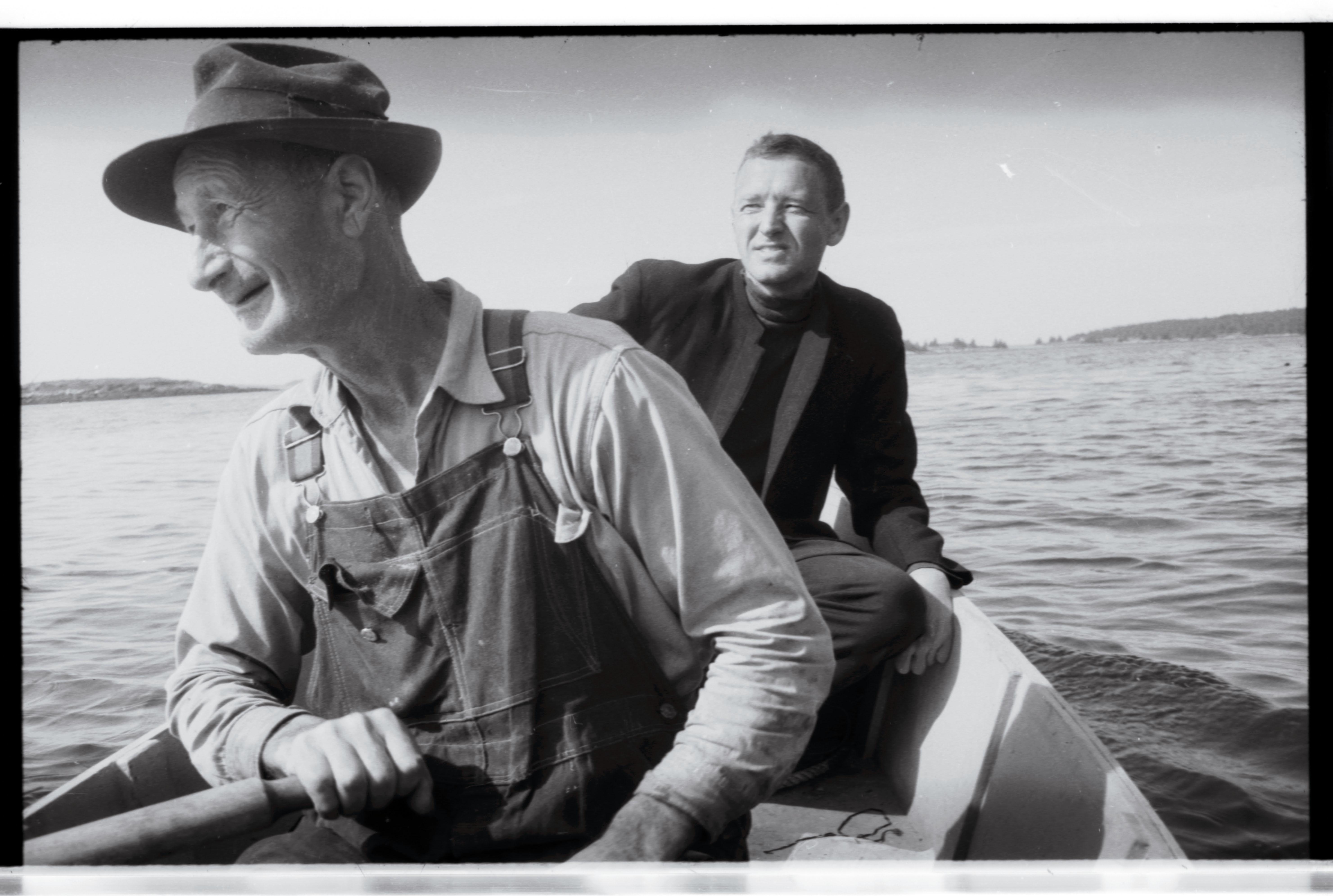
In the summer of 1951, Ruohomaa received a call from his friend Andrew Wyeth inviting him on a trip to Louds Island to bring back a hearse (as the story goes, Ruohomaa was excited because he thought Wyeth said “nurse”). Ruohomaa ended up documenting the journey from start to finish. Here, Ralph Cline rows Wyeth to shore from Dick Percy’s lobster boat.


left : Ruohomaa took a number of photographs of Andrew Wyeth at the Cushing, Maine, farmhouse shown in Wyeth’s Christina’s World. In this 1951 image, Ruohomaa captured the artist, right, in a relaxed moment with the woman who posed for that same painting, Christina Olson, and her brother, Alvaro.



top right : This 1950 photograph shows children at play at the Ruohomaa family farm. According to photo archivist Kevin Johnson, Ruohomaa would often pay youngsters a dollar to be his models while doing their everyday activities.
center right : This shot of a young woman at a clambake in South Thomaston, Maine, may look effortless, but other frames from the camera roll show how hard Ruohomaa worked to get the exact right moment.

bottom right : Another memorable image from Ruohomaa’s visit to the 1945 town meeting in Washington, Maine.
All photographs from the Kosti Ruohomaa Collection at the Penobscot Marine Museum, Searsport, ME. Courtesy of Black Star, White Plains, NY.
To see additional photos by Kosti Ruohomaa, go to newengland.com/ kosti-photos.
Frank Bryan has hardly slowed down since we last talked to him, back in 1992. A prolific author, beloved UVM professor emeritus, and ardent Vermonter, the 77-year-old Bryan remains an energetic and charismatic scholar best known for his ideas on town meeting. We caught up with him a while back at the Vermont History Center in Barre to discuss his small-town childhood, the value of speaking up in public, and what he thinks now about secession.
graduated from high school in 1959, in Newbury, Vermont. There were seven of us. I graduated in the top three, at about a 72 average—the highest of the five boys. We had a lot of people think, Oh my God, it’s a small town, it’s way the hell gone, which is true. Yet we did get radio and television. I remember listening to country music from WVA in Wheeling, West Virginia—but it had to be nighttime.”
“I got in trouble a few times, but I was protected by the community. If you did something bad, everyone knew your circumstances, so they could cut you some slack—or not. That has the benefits of ‘small’ but also its biases. But yeah, it worked out pretty well for me.”
“Most of my professional work has been involved with the relationship between size and policy, size and politics.”
“I was rejected as an undergrad at the University of Vermont, where later I got tenure and even held the political science department’s only honorary chair at the time. I never let them forget they’d rejected me as an undergrad.”
“New England is different from any other place. It’s got everything. It’s got mountains. It’s got a seacoast. It’s got ‘smalls.’ It’s got ‘bigs.’ A couple of professional sports teams. I remember my
grammy holding me on her knee when Ted Williams was coming to bat back in those old days. She said, ‘Don’t worry, my Teddy will take care of it.’ So it wasn’t as parochial as you might think.”
“You know, ideological connotations are so different now. To be a conservative used to mean you were for ‘small is beautiful’ or states’ rights—which was dangerous, because the South was still institutionally racist. But in Vermont it also meant being for town meeting, town control, and local politics. So I was always on the outs in Vermont, because that wasn’t a time when town meeting was appreciated much, and everyone thought it was old, silly, archaic ‘little town’ stuff. But it affected me a lot.”
“Without my students I couldn’t have written my book (Real Democracy: The New England Town Meeting and How It Works ). Every year I sent 40 to 100 students to town meetings all over Vermont. They had to count the number of people who were there: how many women, how many men. They wrote down who spoke, if they spoke again. That kind of research had never been done before. The students loved it. Twothirds were from out of state, and when I sent them from Burlington to way-upthere Vermont, they’d come back with stories. They really got a kick out of it. And they learned that pure democracy isn’t as pure as the word, and it’s real.”
“People call me a romantic on town meeting, but if you read my stuff there’s nothing romantic about it. I would say spending a couple of hours a year at town meeting shows more commitment than voting. Voting is so easy. You go into a booth; nobody can see what you’re doing. But get up in front of 75 to 100 people, and everybody can see you. They can see your face. I think it’s a great socialization of democracy.”
“There is absolutely no doubt that civil rights and civil liberties cannot be local. Anywhere. Your rights as an American are the same anywhere you are. Environmental protection can’t be local. The Connecticut River is a great example there: The river is owned by New Hampshire, but really it should be controlled by New England, at least, so that’s a bad boundary. Some things cannot be administered at the local level and should not be. And the key is figuring that out. Unwrapping it.”
“I’m no longer a secessionist, because I feel sorry for America. I think America is in real trouble. Whereas in the past I had no moral hesitation at all, now I think it would be a cheap shot at a hard time.”
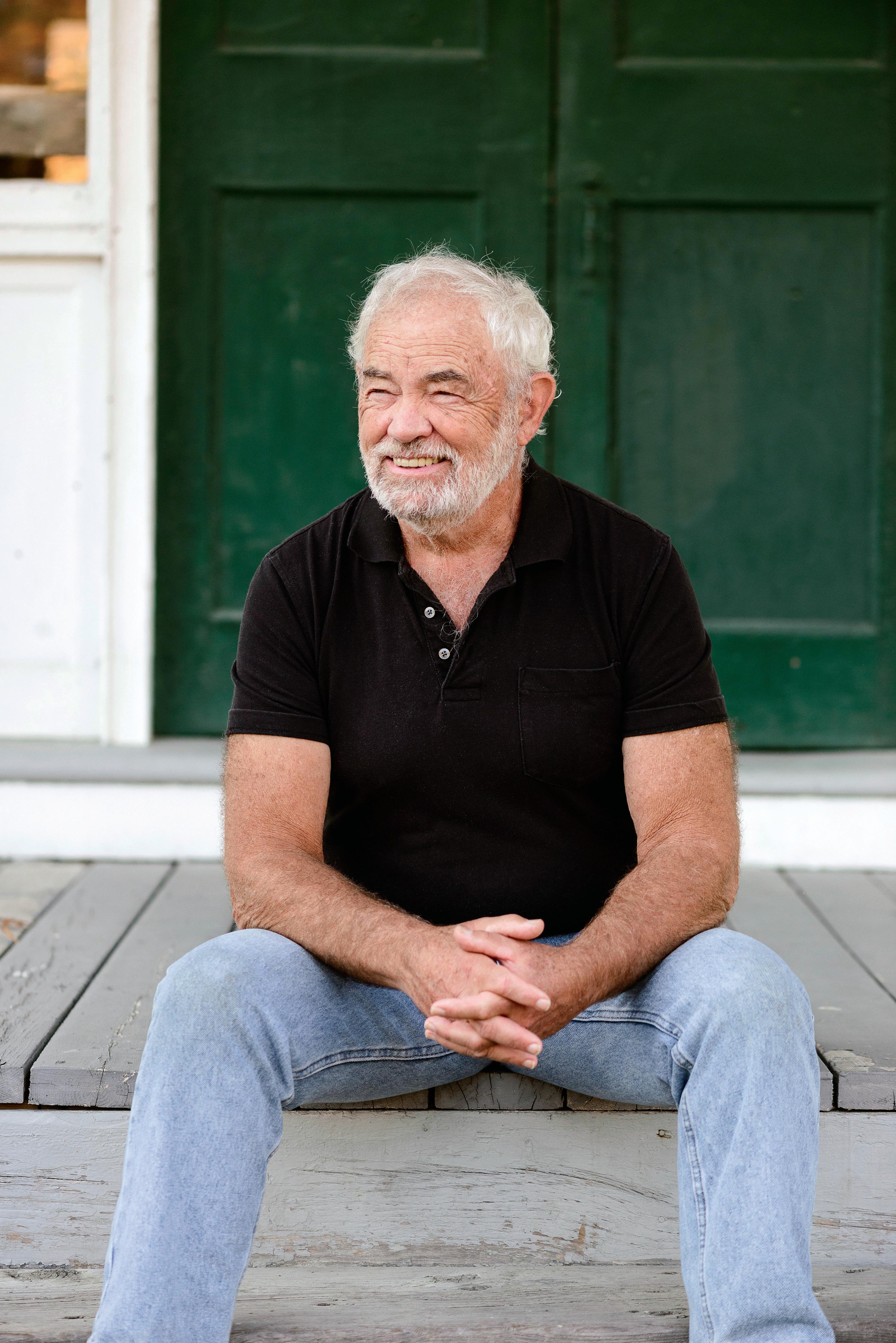


When a young Midwesterner started working at the Boston Public Library, he was a stranger in a strange land. What he discovered there, though, would change his life.


BY GLENN STOUT
wrote Ray Bradbury. He’s not the only one. Growing up, I marked each week by the days between visits to our town library and by the stack of books I slowly devoured. That I would one day work in a library now seems like destiny, something as certain as the turning of a page. ¶ For me, a transplanted Midwesterner who’d lived in Boston for less than a year, still ignorant of the ways of New Englanders in general and Bostonians in particular, the Boston Public Library proved to be both teacher and parent. It became the key that allowed me to find a home in a place I did not yet know. Within the granite walls of its two buildings that anchor Copley Square, mingling with its people, rooting through the collections and dust of that magnificent place, I grew to discover myself. Quite unexpectedly, the BPL seemed to capture not only all of what Boston was, but also what it was becoming.
It was the fall of 1982, and I was armed with a newly minted creative writing degree. The previous winter I had quit my postgraduate job pouring concrete, sold my trombone, and moved to Boston. I had friends from school there, and I had always wanted to live in a city with an old ballpark, something Fenway Park more than fulfilled. I was soon working several minimum-wage, part-time jobs—one as a security guard at Harvard Medical School, where mostly I did the crossword puzzle in the morning Herald and gawked at Phineas Gage’s famously perforated skull and other curiosities on display in the Warren Anatomical Museum. Then I saw an ad in the paper for the Boston Public Library.
Hmm , I thought. Libraries … people who read, like me. And a city job, with benefits! Just the kind of place, I concluded, for a burgeoning poet fantasizing about becoming a writer. I had no idea that the Boston Public Library had just received its first budget since a statewide tax referendum, Proposition 2½, resulted in massive layoffs. Now it was hiring again, and in only a day or two it would add dozens of employees.
The BPL was unique among Boston institutions at the time, poised squarely between the city’s stodgy past and its emerging future, a dynamic best represented by the two adjoining buildings that made up the Central Library. The past was embodied by the beautifully decaying (and since renovated) McKim Building, opened in 1895 and
dubbed the “People’s Palace” by Oliver Wendell Holmes, while the future—or what was visible of it in Boston then— was the Johnson Building, opened in 1972, a modern, near-brutalist edifice.
The library was staffed by an entrenched bureaucracy of Boston Irish, who more or less had been running the place for the past 50 years, and hundreds of workers who kept the library operating and who hailed from Grove Hall, Mattapan, Dorchester, and other city neighborhoods. Most of these workers didn’t know Boston Latin from pig Latin, but they spoke Spanish, Vietnamese, French, Chinese, and apparently every other language available. Add a dash of the then-taboo (at the time libraries were the rare places that provided a generally safe haven for LGBT employees) and the eccentric (a few aging librarians who seemed to have stepped out of Miss Havisham’s tearoom), and it was like no place else in the world, at least none that I had seen.
The woman in personnel who hired me started asking me about working at the various library branches—did I know how to get to Washington Village? Dudley? Codman Square? Huh? All I knew was the B line, the way to the Fenway Park bleachers and the path from Kenmore Square to Copley. By the blank look on my face, she concluded I’d better stay right in Copley Square or else suffer the fate of Charlie on the MTA and ride forever ’neath the streets of Boston. I filled out some
clockwise from top left : Snapshots from the Boston Public Library’s McKim Building include a peek behind the face of one of the library’s clocks; a portrait of George Washington by German artist Emanuel Leutze (best known for painting Washington Crossing the Delaware ); the grand staircase, with its pair of marble lions and murals by French artist Pierre Puvis de Chavannes; a section of wall that’s been left untouched by renovations to show how much grime had built up over the decades.
previous spread : The McKim Building’s grand reading room, Bates Hall.
paperwork, including a pledge not to overthrow the United States government (libraries being well-known dens of revolutionary, if whispered, discontent), and I was, in the parlance of the place, an LA-2, a library assistant. I felt proud until I learned, like the 13th floor in a hotel, there was no such thing as an LA-1.
I realized on my first day that the library was different. Eager to please, I was assigned to combine two collections in the circulating library that covered the same spectrum of the Library of Congress classification system. A librarian told me that for weeks she had labored to copy the call numbers of the thousands of titles in one collection onto individual slips of paper, which she had slid between the appropriate titles in the second collection. My task, she explained half a dozen times, was to match book to slip and slide it into the proper place.
No problem. Except after I had reshelved about 10 books, the first

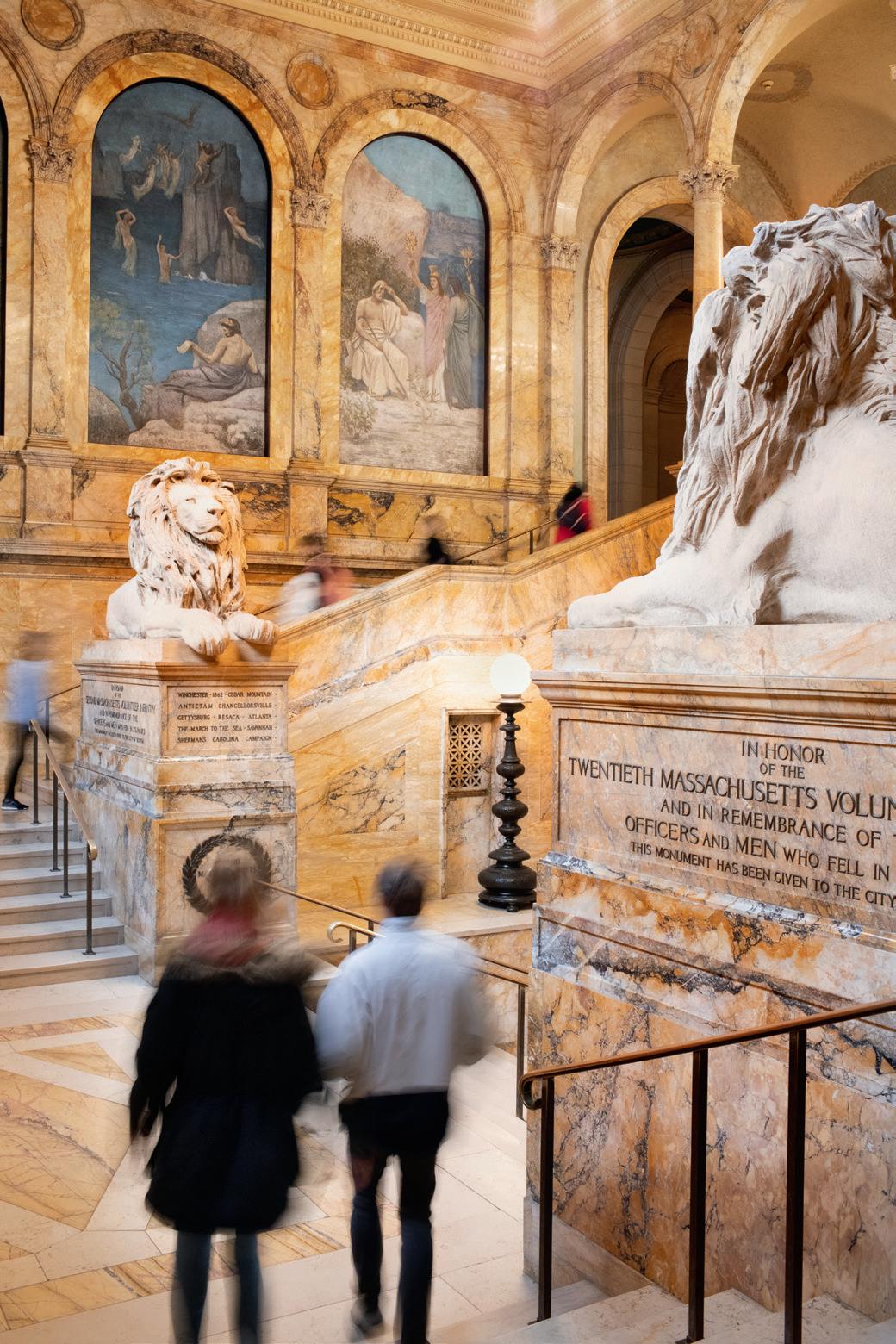

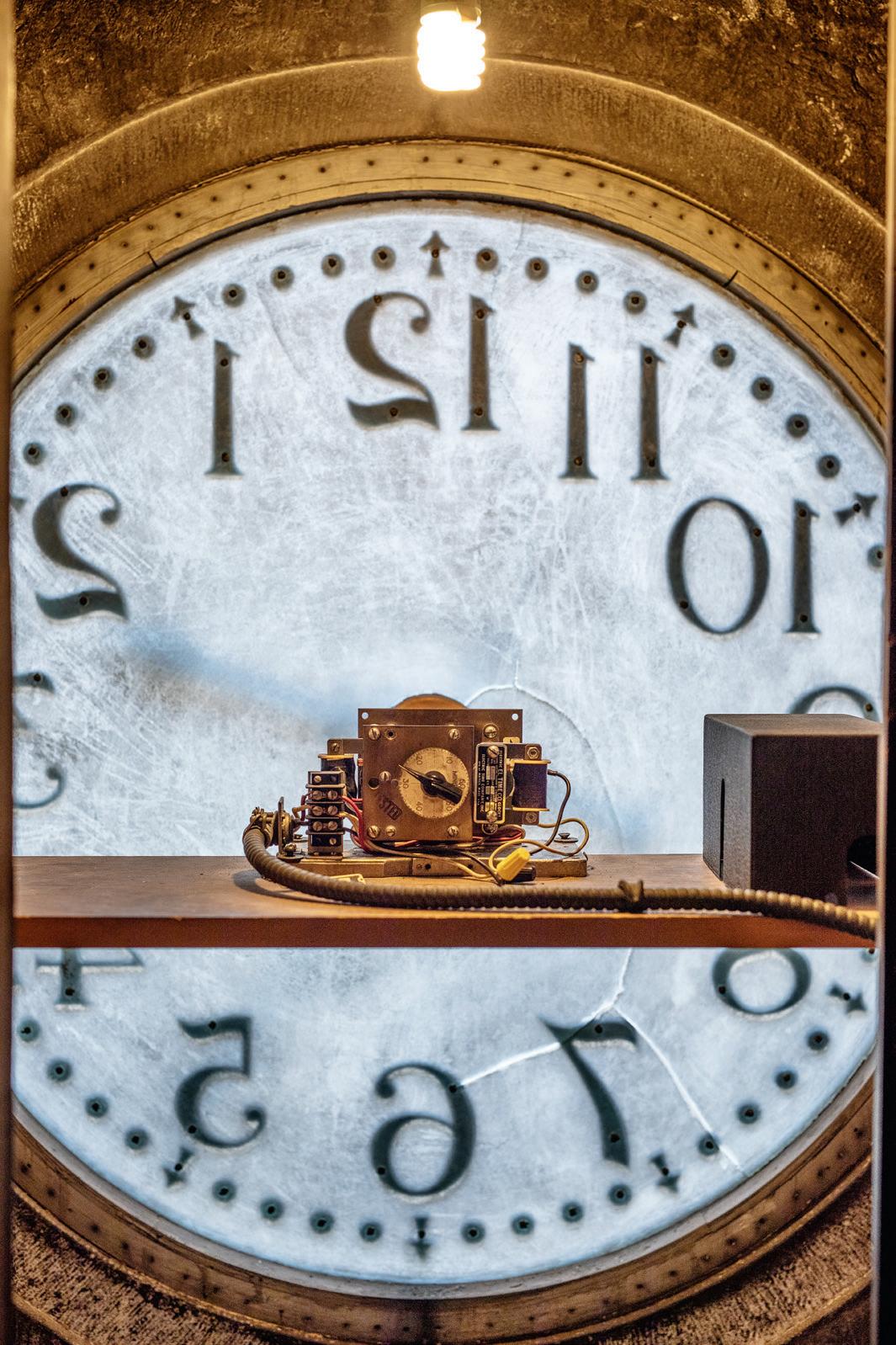


Books are only the beginning of the treasures at the Boston Public Library, whose collection of more than 23 million items includes artworks, maps, letters, manuscripts, and other rarities—plus more than a few odds and ends from its own past. this page , clockwise from top left : A vintage Braille “typewriter,” the Perkins Brailler, which was created in 1951 by a teacher at the Perkins School of the Blind in Watertown, Massachusetts; Citizen Kane film reels from the library’s extensive film archive; a lighting fixture discovered in a box among the stacks; a tabletop sculpture of Joan of Arc; printing plates and ephemera; a ’70s-era typewriter, once critical in creating catalog cards; old card catalog drawers; boxes of microprint, a lesser-known paper-based cousin to microfilm.







opposite : On the McKim Building’s third floor is the Sargent Gallery, home to artist John Singer Sargent’s masterwork: the Triumph of Religion mural cycle.

shelf was full. Soon, the second shelf was full, too. The librarian had failed to account for the volume of the books: Fifty shelves’ worth of books were not going to fit onto 50 shelves that were already occupied.
This didn’t seem a big deal. I simply made use of some adjacent empty shelving, spread out the first collection over twice the space, ditched the slips, and shelved the books from the second collection in the proper place. Problem solved. A few hours later she came to check on me, pinch-faced and dour. She was mortified, even more so after she checked my work and found it correct, which seemed even more threatening, then scurried off, presumably to find a place where she could scream into a pillow. Not long after that, her boss, an older librarian known as Mr. J., came over. He looked at what I had done and laughed. “My God,” he said, “you actually want to work. Come with me.”
Thus began my apprenticeship. I quickly became sort of an indentured servant assigned to tasks too dirty, too physical, or too logistically complicated for most librarians. This is not to say they were inept or lacking in practical skills. Some were among the best and smartest people I know. However, the profession does tend to attract some who, let’s say, find the profane world and its attendant disorder an ongoing challenge. In this environment, I came off like a force of nature, when in fact I was just a guy with a dollop of common sense.
I was soon adopted by several male librarians in the research library, none of whom had sons, and two of whom were gay. I became kind of a favored nephew or, as I referred to myself, “library grout,” filling in as needed on special projects, doing the chores that no one else would: moving books in vast numbers, sorting through decades of gifts, and other bookish, vaguely Herculean, and often dusty tasks long overdue.
I was fine with this—thrilled, even. Unlike the other LA-2s, mostly shelvers, I didn’t have to do the same thing in the same place over and over again. From the start, I intersected
with all sorts of different people in a variety of departments, and between the two buildings I got lost several times a day.
My satisfaction must have shown. I’d been working at the library only a short time when someone stopped me, put her face close to mine, and muttered, “You’re not from here, are you?”
“No,” I said. “How could you tell?
The sour expression never changed. “You’re smiling,” she said.
My Boston education had begun.
The library, I soon learned, was a microcosm of the city, as socially and politically divided as Boston itself— which at the time, just a few years after the busing crisis, was still a series of neighborhoods that often ignored one another. Back then it was possible to live your entire life in, say, Southie or Charlestown and never, not even once, have reason to go to Roxbury or Mattapan, or vice versa. Or, if one lived on Beacon Hill or in the Back Bay, the neighborhoods of the dwindling but still powerful Boston Brahmins, to never admit the existence of any other neighborhood at all.
So it was at the library, too. The closed stacks of both the McKim and Johnson buildings, a rabbit warren of more than 50 miles of shelving, contained the seven million or so volumes of the research library’s on-site collection. To access the books in this pre-computer age, users had to paw through millions of catalog cards (some handwritten) in more than 2,000 drawers, then fill out a call slip to be sent by pneumatic tube to the proper floor. There, an assistant would retrieve the book and send it down by conveyor belt so that it could be carried out to the patron in Bates Hall, the formal reading room that stretched the length of McKim Building’s second floor, all rich wood and marble. It was, and in some ways still is, one of the great research libraries in the country, and it attracted scholars and students from around the world.
Yet the research library existed almost completely separate from the general library, the open-shelf lending library on the public floors of the Johnson Building. There, readers could
roam nearly two full acres of open shelving or, as was often the case, find a comfortable place to sit, sleep, or even mutter quietly to themselves. The general library served not only readers of the latest best-sellers but also a growing and more or less permanent population of homeless. It was about the only place in the city, public or private, where they could spend a day and not be mistreated or ejected outright.
Carved above the main doors to the McKim Building were the words FREE TO ALL—and the library was exactly that, which meant its patrons were as varied as the city itself. I lived within walking distance, and going to work always reminded me of the Warner Bros. cartoons where Wile E. Coyote and Sam the Sheepdog clock in together, do battle, and then clock out. Not that any patron was my enemy, but my commute did parallel that of the aforementioned homeless, and together we moved in and out of the library like the tide, nodding in recognition on our way. There was Mr. Butch, widely known as the “King of Kenmore Square,” who used to see me coming every morning and say, “Here comes breakfast,” certain of his 50 cents. And then there was Mr. Daley, rumored to be an engineer, who every day in the library studied a vast pile of books and scribbled notes and calculations onto a single sheet of yellow paper; he was said to be in the midst of a decades-long project to prove the library had been built by the ancient Egyptians. By closing time, his piece of paper would have turned all indigo from his voluminous scratchings, his insights lost. The next day, he would begin again.
In general, the staff of the research library was made up of quasi-academic representatives of the city’s crumbling aristocracy, mostly rinsed through Harvard or Boston College. The staff of the general library tended to be younger, ethnically more diverse, and often, like me, still somewhat new to the city and its ways.
But there was more. Among the employees in both buildings, the divide was between librarians— mostly women, nearly all white and
Now you can finally have all of the soothing benefits of a relaxing warm bath, or enjoy a convenient refreshing shower while seated or standing.
Introducing Safe Step Walk-In Tub’s exclusive NEW Shower Package!

✓ First and only walk-in tub available with a customizable shower

✓ Fixed rainfall shower head is adjustable for your height and pivots to offer a seated shower option





✓ Durable frameless tempered glass enclosure available

✓ High-quality tub complete with a comprehensive lifetime warranty on the entire tub


✓ Top-of-the-line installation and service, all included at one low, affordable price


















Now


still supervised by men—and library assistants—neighborhood residents, black and white and Asian and Latino. Most of the latter were either high school grads settling in for a 40-year run to a city pension or, like me, recent college grads just happy to have a job that allowed for an annual teeth cleaning and, seriously, a paid halfday holiday to go Christmas shopping.
of 49-star flags made by the residents of the Framingham State Prison for Women, I stumbled upon a staff hideaway that included lamps, a couch, easy chairs, and a television. I found squashed between the covers of books the occasional bra or pair of underwear, as well as, sadly, more than a few syringes and spoons secreted away by heroin addicts.
“Butterfly Meadow” $145 15”x18.5”Ltd. edition print
Plan a visit to Mt. Nebo Gallery. We offer a great selection of framed and unframed Will Moses art. Also books, cards and puzzles. Open 7 days a week. Closed major holidays.


And there was still another divide: whether one was from Boston or not. That question posed to me early on— “You’re not from here, are you?”—was as important as any other.
Few of these divisions were obvious when I began, and as I moved more or less freely among the various departments—sorting magazines in serials one day, moving boxes in government documents the next—I roamed between both buildings and their populations like an anthropologist on some kind of free-form expedition.
Over time, I met kindred spirits, aspiring musicians and artists and writers like myself, who found the library a sanctuary as well as a graduate school for eclectic self-education. While the place itself and its people delivered one kind of learning—an introduction, as it were—the actual library collections provided another. This is where my Boston education finally reached fruition. In those collections, I discovered both Boston’s past and my own improbable future.
ISBN 0-399-25154-2
Book $17.99
And what a place to explore! In both buildings—the timeworn McKim and the brutalist Johnson—the nonpublic spaces were M.C. Escher–inspired labyrinths in which one really could take a corridor between buildings and somehow go up or down three floors. I had reason to go most places and often went spelunking through the other, out-of-the-way corners on my own. And spelunking is the appropriate word, for in the dank basement of the McKim Building, where fallout shelter signs still hung on the walls, actual stalactites several feet long protruded from the ceiling, created from the groundwater of the Back Bay percolating through yards of dense concrete and granite.
Puzzle $17.75
More than once I thought I’d been in every nook and cranny of the library only to find yet another nook. The McKim Building, for instance, contained richly appointed anterooms that had once served as reception areas, an enormous porcelain bathing tub, and a massive safe that no one seemed to know how to open, how it got there, or what it contained. In a dusty corner of the Johnson Building I discovered a well-used mattress, presumably for naps or even an interstaff liaison. In the McKim basement, behind cartons
A baseball fan, I had read that Chick Stahl, manager of the 1907 Red Sox, had killed himself during spring training by drinking carbolic acid because of the pressures of managing the team. But I knew enough Red Sox history to realize that if this were actually true, there would be an entire graveyard of managers who had chosen suicide. Intrigued, I decided to learn more.
This led me to the microtext department, a room full of old manual microfilm viewers where one could crank through the pages of Boston’s past—not just from the Herald and the Globe but also from defunct papers such as the Post and the Traveller, the American and the Advertiser, the Times and the Transcript , and dozens and dozens more. Though the images were often dim and the film was sometimes scratched nearly to the point of illegibility, these pages made history live again.
As I scrolled through roll after roll of film, Boston’s history unfurled, offering clues to its social and tribal puzzles and seeming to unwrap a gauze that obscured its traumas, from police strikes to molasses floods; its politics, from Honey Fitz and James Michael Curley to Mel King; its criminals, from Charles Ponzi
to Whitey Bulger; and its characters, from Isabella Stewart Gardner to Red Sox superfan ’Nuf ’Ced McGreevey. Day after day, as I blew dust off reels mostly untouched for decades, I began to realize the city was nothing but its stories, and I was living within them; I wasn’t so much an outsider anymore, but a character in a larger drama.
After uncovering the reason old Chick Stahl had taken that drink of carbolic acid (’twas a woman), I set aside poetry for prose and, improbably, convinced Ken Hartnett, the editor of Boston magazine, to publish the results. And when he asked if I had more, I knew the answer was not just yes but “How much do you want?” The stories of this city were endless.





I was transformed, and as I used the excuse of the city’s sports teams to relive its past, the splits and divisions and logic of the place began to whisper their secrets. It was as if I had uncovered a classification system distinct to Boston. And, just as I had with the library, I ever so slowly deciphered the city and learned its ways.
This only increased after I took advantage of a now-defunct program and earned a library degree on the city’s dime. Now I was invested in the place—not just the library but Boston, too. I sat in the library’s Italianate courtyard each day before work or during breaks, and at a certain point I began to realize it felt like home. I even took to calling it “the Mother Library.”

And though as my writing career eventually took me away from both the library and Boston itself, when I visit today, I find the city much changed but the library still familiar and recognizable. Nearly 25 years after I left, I fantasize that I can simply slip back inside my old self and just resume working. I am certain it would now be months, if ever, before anyone asked me, “You’re not from here, are you?” If they did, I know now how I would answer: “Yes, I am.” Somehow, by telling some of Boston’s story, I have become a small part of that story myself.




 by Judson D. Hale Sr.
by Judson D. Hale Sr.





I’mnot sure just when we began to suspect we couldn’t live in our beloved house forever. The stairs were becoming steep. I no longer plowed our long driveway with my trusty Jeep but there was always work to do around the place. Work I enjoyed but began to find increasingly difficult. About this time we began burying friends, relatives—and our parents, too. The result was that we slowly came to resolve not to ever burden our children and grandchildren with the same problems and uncertainties we all experienced during their last years.


It became time for Sally and me to turn the page. So, you might ask, are we happy now that we’re finally established in our beautiful and comfortable retirement community? Well, I can say without hesitation, we are sublimely happy when we’re in the company of our three boys, their wives, and our eight grownup grandchildren. But are we happy when it’s just Sally and me? Just us? Surprisingly, thankfully… yes! “I feel so safe here,” Sally said to me recently, and although I’d never exactly thought of it that way, I sort of understand.




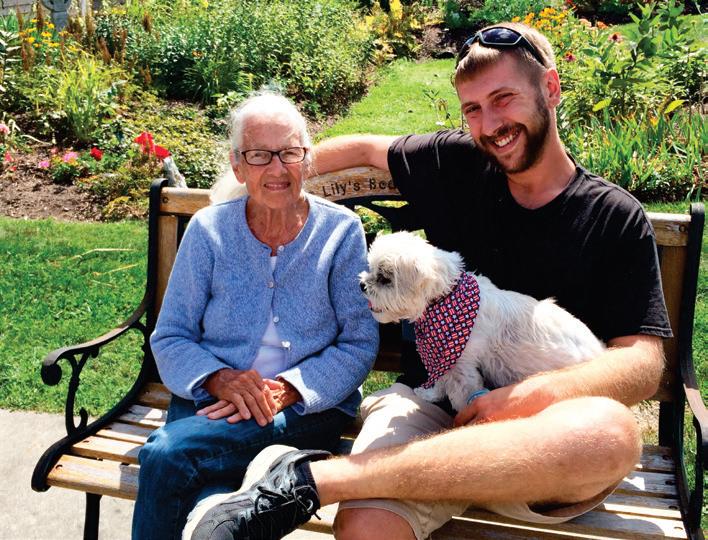

So now we are well into the next chapter of our lives. We’ve turned many pages. But when on occasion I feel a bit of yearning for long-ago days, I look back into the glow of my memories that are now an integral part of my everyday life. Then, lo and behold, the misty-eyed feelings turn into laughter. For me, thank the Lord, there’s always the laughter. Always.










(continued from p. 103)
exclusively. He offers 1,200 tickets in January for the event, and they sell out in just a couple of days. But the chamber’s decision to pick a side in the lawsuit angered him.
“Clearly the surge in OHRV traffic has provided an economic boost to many businesses in Gorham,” Wemyss wrote the chamber last July. “But it has also decreased the business of some who remain silent for fear of retribution. The OHRV fans do a wonderful job of cheerleading their cause, but where is the balance? Where are the studies to show the real effects that increasing OHRV traffic has on the entire community?”
Kinney isn’t surprised by this level of blowback. She understands that change is hard. She gets that these machines represent a new kind of noise. She even goes so far as to say she’s thankful she doesn’t live near a trailhead, because the sound even gets to her. In fact, after the festival wraps up she often takes a day to find a quiet spot on the Androscoggin in her kayak to decompress. But there’s a bigger picture she has to keep in mind.
“It’s not that I just love ATVs,” she told me, “but I do love what they’re doing for us. When those people are here, they’re coming and spending money. What would we have if they weren’t spending money? That’s the question. I don’t see another group coming here and spending the kind of money ATVers do.”
An economy of any kind leaves its mark. In the grand old days of the Brown Company, Berlin may have been awash in economic stability, but the business of making paper polluted the water and saturated the air with the persistent odor of sulfur. Even lighter forms of activity have an impact. In recent years the Appalachian Mountain Club has grappled with a record number of hikers who traverse trails that were never made for 21st-century crowds. So in some ways,
the issues around ATVs are part of a continuum that began when the earliest European settlers first tried to make a buck from what the region had to offer.
“Tourism is not an industry without impact,” Gorham’s select board chair, Mike Waddell, told me. “There’s noise, a bunch of strangers around all the time; it’s not paradise. Just like we had a trade-off when we had the mills. At least now you can breathe the air, and the Androscoggin River is clear. But people for many decades traded what they breathed, what was on their vehicles when they got up, and a river that flowed with different colors—that’s all within my memory. It’s not without problems, but right now tourism is the only game we got.”
But figuring out the exact economic impact of ATVs isn’t so cut-and-dried. There has been no deep economic analysis of the breadth of the off-road economy in northern New Hampshire. The most accurate metrics come in the form of taxes. And here, there is some good news. Over the past decade, ATV registrations have jumped 80 percent (even out-of state machines need a state sticker). More people are sleeping and eating in Coos County, too. Overall, meals and rooms tax revenue is up 23 percent since 2011.
A more anecdotal portrait of the economy can be found along the three-mile stretch of Jericho Road from downtown Berlin to the state park, where new businesses such as Jericho Deli & Convenience and the off-road dealer Jericho Outdoors have emerged in the past several years. In Gorham, the Royalty Inn has seen a record number of visitors these past few years—so much so that general manager Conrad Klefos recently explored an ambitious plan to turn a shuttered restaurant into an ATV clubhouse, with a lounge and a garage where riders can store their machines.
But for those businesses that don’t cater to the ATV crowd, the picture has been more mixed. At the end of August I returned to Gorham and met with Liz Jackson, who with her husband, Steve, owns and runs the downtown restaurants Libby’s Bistro and Saalt Pub.
Liz is about as Gorham as one can get. She’s a fourth-generation resident who hails from a line of retail and restaurant entrepreneurs. After growing up working in her grandmother’s eatery, she embarked on a food career of her own, studying cooking at the Cambridge School of Culinary Arts and then working as an assistant to Julia Child on her TV series.
After years of exploring and eating around the world, Liz wanted to bring a little more culinary gravitas to her hometown. In 1997, when she was seven months pregnant with her third child, she and Steve opened Libby’s, a French-inspired restaurant that could slide seamlessly into a Brooklyn neighborhood, in a converted bank building. Today it shares space with Saalt, and the two restaurants have successfully carved out a niche just down the road from a McDonald’s and a Dunkin’.
I met Liz on a Sunday night in one of the pub’s dining rooms. The dinner shift was coming to a close, and Liz, who’d cooked most of the day, finally had a chance to sit down to a meal. It had taken some persuasion to get her to talk with me. In earlier years, as debates swirled about how the community should embrace the ATV scene, she’d been especially vocal about her concerns. Liz was all for job creation, but she worried about what it might be pushing out. Was the possible risk to Gorham’s reputation as an AMC hiker–friendly town worth it?
The backlash to her position became severe, she said. Chamber volunteers stopped coming to her restaurant, while other ATV supporters confronted her at meetings, she told me, or fictionalized dining experiences to leave negative Yelp reviews. Two years ago, she withdrew from the chamber.
“I realized there are people out there who would argue for a nuclear landfill if it was going to generate money and they could say it would provide a good job,” she said. “What we’re asking for is just some thoughtfulness about the growth, for the town government to say there are two sides to this and for us to work together. But the town has pitted us against our concerns.”
Who am I? Why am I here? Is reality what it appears to be?






If God is good, why is there suffering? How can science and the Bible both be believable?
How do I know which religion is true? Isn’t it arrogant to claim that Jesus is the only way to God? Whatʻs wrong with “whatever”? Why believe anything at all? Sin is just a lack of love — an unhelpful behavior. True or False?
— 1 Peter 3:15, ESV
The AIIA Institute is a forum for information and exchange on world views, beliefs, and ideologies — providing a simple readable historic orthodox Christian perspective on many related matters of faith and truth.



If you’re a skeptic, you’ll find our free bimonthly publication thought-provoking. If you’re a Christian believer, you’ll be fortified in your convictions and better equipped to respond to others who are asking tough questions.
How does anyone know that anyone can know the truth about anything? Scan the QR code & signup

Join thousands of others nationwide who benefit from reading the Proclamation six times a year. No obligation. No cost. No catch.
Contact us: Website: AIIAInstitute.org | Email: AIIA@AIIAInstitute.org Mail: P.O. Box 262, M onson, ME 04464 | Phone: 207.997.3644
Or visit us in person at our Study Center in Maine, pictured above.



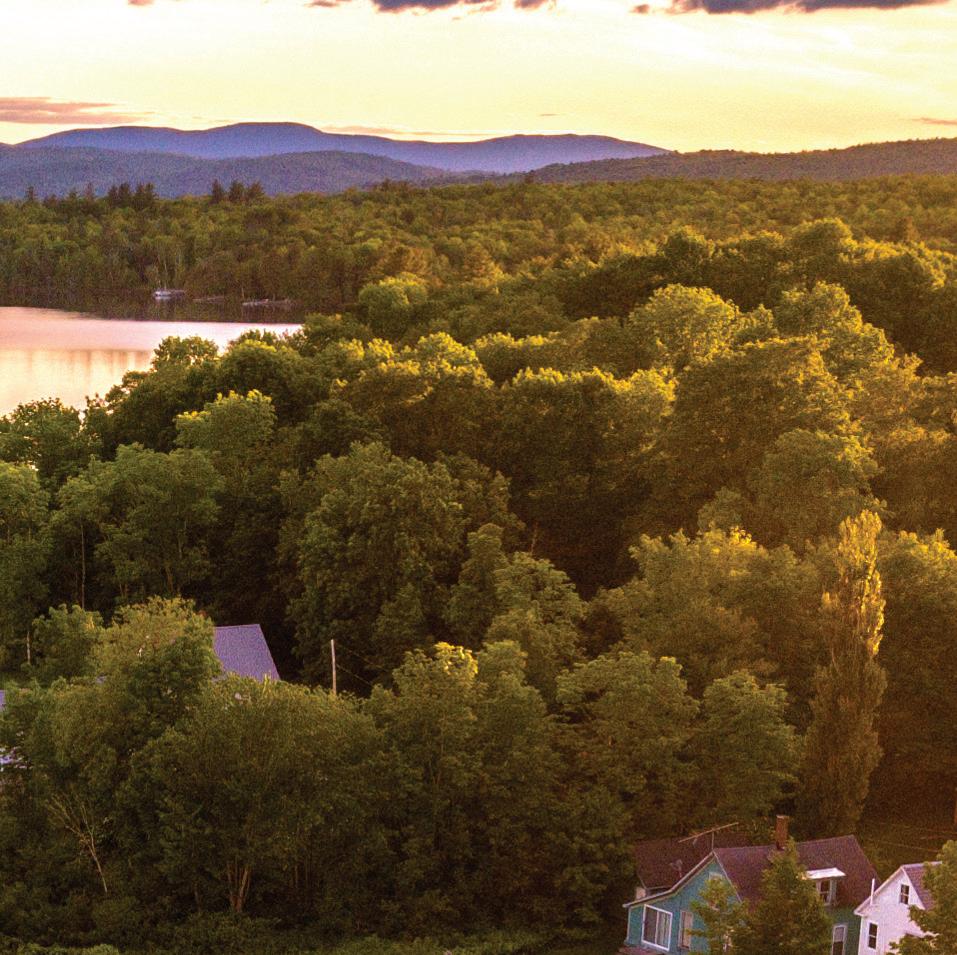
“But in your hearts honor Christ the Lord as holy, always being prepared to make a defense to anyone who asks you for a reason for the hope that is in you; yet do it with gentleness and respect,”
Like Wemyss, and like the plaintiffs in the lawsuit, she feels there is a place for an ATV economy. What she objects to is its prominence and its placement over other sectors. “If they wanted to have a whole week, like [Laconia’s] bike week, go for it,” she said. “But instead it’s so spread out, it’s just noise, noise, noise all the time. On festival weekends I’m down as much as 60 percent.”
As we talked, the restaurant slowly started to close for the evening. It had been a strong Sunday night, with a good 150 people dining in the two restaurants. Liz has an easy and frequent smile, and as jazz music played in the background she beamed a heartfelt thanks to exiting diners who streamed past our table, many of whom she knew personally. It was a reminder that her main business isn’t food—it’s comfort.
“I like taking care of people, and I think that’s why this neighborhood thing bothers me,” she said. “I can’t imagine not trying to make people feel good and happy. Or running a business that is hurting someone else. My whole business is built around making people feel good about being here. It’s what we do. If you are unhappy, then we have failed.”
A little later in the conversation, she gave me a resigned smile. “At the end of the day, if that’s what they care about, if they value the dollar more than they value their neighbor, maybe this isn’t a community I belong in.”
Two months after Ray Bergeron introduced me to Jericho’s Holt’s Revenge, I found myself behind the wheel of a side-by-side Polaris machine 65 miles north of Berlin, in the small town of Pittsburg. It was a striking day: cloudless sky, warm, with only a scattering of maples and birches serving notice of the foliage season that was about to hit.
In a region that’s already notably rural, Pittsburg ups the deep-woods feel. Sharing a border with Canada and composing the entire northern top of New Hampshire, its 291 square miles make it the largest municipally incorporated town in New England. Yet it claims just 800 residents. One of
its most well known is Corrine Rober, a principal figure behind the success of the Ride the Wilds trail network and the owner of Bear Rock Adventures, an off-road machine rental agency she operates out of her hometown. On this early fall day, she was my copilot and navigator.
In an industry known for its dudeness, Rober doesn’t fit in with common perception. She’s tall and blond, with a low-key charm that proved valuable during her decade and a half of owning and running a busy family restaurant in Glen. Rober’s path to the ATV business wasn’t the product of following any kind of motorhead passion. She grew up in the mountains, and her preferred method of escaping into the wilderness has always been by foot or on bike. But the businesswoman in her saw off-roading as an opportunity to make a new kind of living after she and her husband, Steve Baillargeon, a logger and Colebrook native, turned a second home up north into their first. Bear Rock opened in May 2013. A month later, Ride the Wilds was dedicated.
Pittsburg has not been immune to the controversies that have cropped up in other communities. But as a result of the town’s limited population density, it’s also avoided the kind of heated acrimony that persists in Gorham. Still, at the time of my visit, parties on both sides of the issue were keeping a careful eye on the Gorham lawsuit. (A few weeks after my visit, Judge Lawrence MacLeod of the Grafton Superior Court allowed much of the case to move forward, including the plaintiffs’ nuisance and damage claims. But the plaintiffs were denied a preliminary injunction to prevent the town and the state from operating the trailhead by Lois Stearns’s home. This story went to press before a new ruling had been handed down.)
From the shop’s headquarters, Rober directed me down a quiet paved road that skirted Back Lake, and then along a gravel lane that emptied out at the Perry Stream Land and Timber Co., an 8,000-acre parcel of private property that’s coursed with 120 miles of public ATV trails. After motoring
through a small clearing, we reached a fork. “Head that way,” Rober said, pointing to a steep uphill trail of ruts and decent-size rocks that poked out of the ground. I slowed the machine down for a second.
I turned to her. “Are you sure?”
“You’ll be fine,” she said.
I was skeptical. But I hit the accelerator and started to climb. It was a jerky journey. I punched and laid off the pedal. I nervously navigated around the rocks and ruts. I stopped, then skidded to a start. As I rolled over one particularly thorny area I was convinced I was going to rip out the machine’s underside. At an especially steep section, I envisioned us just toppling backward. I gripped the wheel tighter. I started to sweat. I thought about pulling over and letting Rober finish the trek. There was no laughing. I was no Ray Bergeron.
But it got better. I finished the climb and then embarked on a series of trails that wound around and down the property. “That was perfect,” Rober said, after I navigated a section of challenging downhill terrain.
No, it really wasn’t, but I did start to get the hang of it. My foot stayed steady on the accelerator. I got a feel for how to navigate the ruts. The rocky stretches weren’t as intimidating. I no longer wanted to hand the wheel over to Rober.
Something else also clicked. I got the appeal. Far removed from the riproaring scene at the Jericho ATV Festival, we had the woods to ourselves. It was fun, even thrilling at times. We moved deliberately, stopping here and there to take in a view or talk about a part of the land we were on. If I couldn’t or didn’t hike or mountain bike, here was my ticket into the wilderness, a sight that for generations has brought people together.
I remembered Ray Bergeron’s words: “We’re just out here looking at the scenery in a different way.” And yet I also knew it was this same scenery that had brought Lois and Court Stearns back to Coos County. And I wondered if those on either side of the ATV battle would ever be able to see the beauty the same way again.


































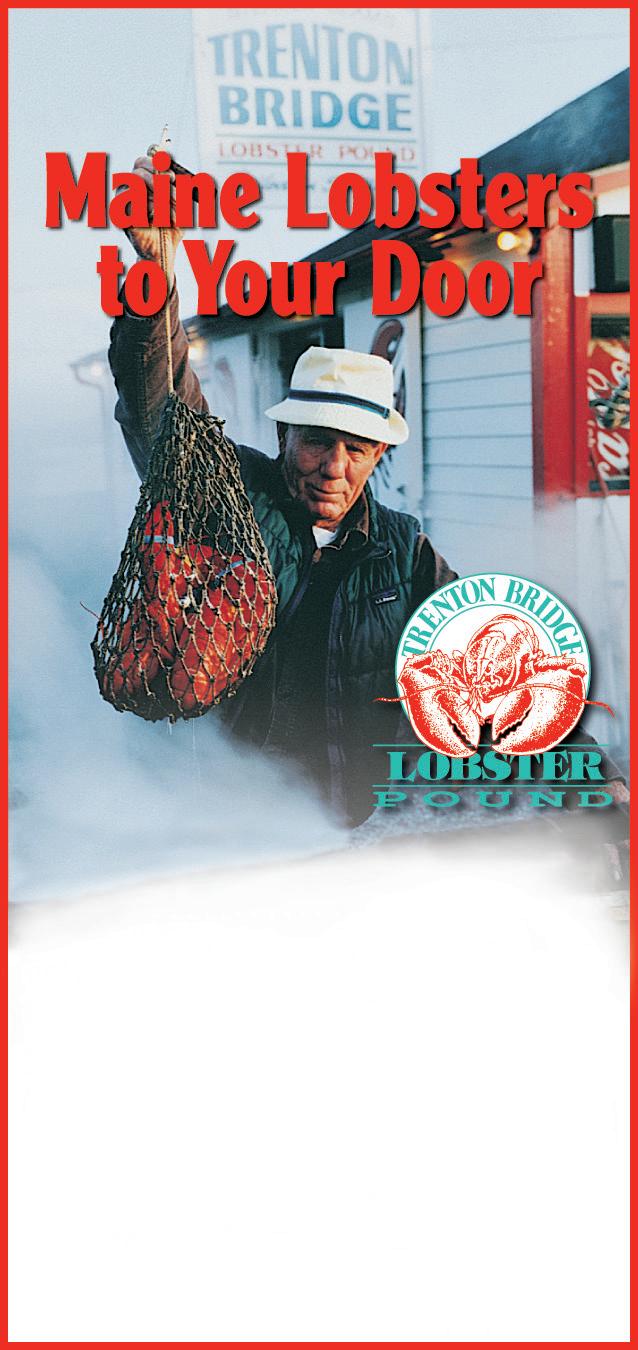





















EnergAire continuously purifies up to 4,000 cubic feet (a large room) of air and makes it breathable and invigorating. Restores natural ion balance to unhealthy environments caused by industrial pollution, automobile exhaust, central airconditioning, and heating, smoke, dust, pollen, animal fur. . . removes microscopic pollution particles not removed by any other method of air purification. EnergAire was rated Number One for speed of removal of cigarette smoke by the leading U.S. consumer protection magazine. It has no noisy fan, no costly filter, and requires no maintenance. Uses less than 2 watts. 9" high. 3" diameter. Weighs less than 1 pound. $69.95


















RODAR is the super-powerful professional ultrasonic pest repeller with up to 60 or more times the power of other devices — and power is what makes RODAR so effective. RODAR ultrasound equals a jet engine — noise unbearable to pests but at frequencies humans and pets cannot hear. RODAR units are completely safe. RODAR drives pests out and keeps them from getting in. Handsome simulated walnut cabinet 5-5/8" high. Weight 1-1/2 pounds. Uses less than 5 watts. $99.95






Are radiating pains down the back of your leg, or pain in your lower back or buttocks making it uncomfortable to sit, walk or sleep? Millions are suffering unnecessarily because they are not aware of this proven treatment.
MagniLife® Leg & Back Pain Relief combines four active ingredients, such as Colocynthis to relieve burning pains and tingling sensations. Although this product is not intended to treat or cure sciatica, it can help with the painful symptoms. “I am absolutely amazed at how it works and how fast it works.” - T Martin. Tablets dissolve under the tongue.
MagniLife® Leg & Back Pain Relief is sold at Walgreens, CVS, Rite Aid, Amazon and Walmart Order risk free for $19.99 +$5.95 S&H for 125 tablets per bottle. Get a FREE bottle when you order two for $39.98 +$5.95 S&H. Send payment to: MagniLife S-YK1, PO Box 6789, McKinney, TX 75071 or call 1-800-532-9177. Money back guarantee Order at www.LegBackPain.com
Are you suffering from deep muscle pain and tenderness, joint stiffness, difficulty sleeping, or the feeling of little or no energy? You are not alone. You should know relief is available.
MagniLife® Pain & Fatigue Relief combines 11 active ingredients to relieve deep muscle pain and soreness, arthritis pain, aching joints, and back and neck pain. This product is not intended to treat or cure fibromyalgia but can help relieve the painful symptoms and fatigue. “These tablets have just been WONDERFUL. I’d recommend them to anyone and everyone!” - Debra, WV.
MagniLife® Pain & Fatigue Relief is sold at CVS/pharmacy, Rite Aid and Amazon. Order risk free for $19.99 +$5.95 S&H for 125 tablets per bottle Get a FREE bottle when you order two for $39.98 +$5.95 S&H. Send payment to: MagniLife F-YK1, PO Box 6789, McKinney, TX 75071 or call 1-800-5329177. Satisfaction guaranteed. Order now at www.PainFatigue.com
If you experience painful muscle cramps in your legs, back, feet, or hips, you should know relief is available. Over 100 million people suffer from unnecessary muscle cramps, which may interfere with sleep, because they are not aware of this proven treatment.
MagniLife® Muscle Cramp Pain Reliever contains eight active ingredients, such as Magnesia Phosphorica to help prevent and relieve cramps and radiating pains that are worse at night. “Your product has severely helped me and I thank you so very much.” - Marie L., MT.
MagniLife® Muscle Cramp Pain Reliever is available at CVS/Pharmacy, Rite Aid and Amazon. Order risk free for $19.99 +$5.95 S&H. Get a FREE bottle when you order two for $39.98 +$5.95 S&H. Send payment to: MagniLife L-YK1, PO Box 6789, McKinney, TX 75071 or call 1-800-532-9177 at www.LegCrampsRelief.com
Are unsightly brown spots on your face and body making you uncomfortable? Liver spots, also known as age spots, affect the cosmetic surface of the skin and can add years to your appearance. Millions of people live with the dark spots and try to cover them with makeup, or bleach them with harsh chemicals because they are not aware of this new topical treatment that gently and effectively lightens the shade of the skin.
MagniLife® Age Spot Cream uses botanicals, such as licorice root extract to naturally fade age spots, freckles, and other age-associated discolorations, while protecting skin from harmful external factors. “It is fading my liver spots. This product actually works!!!”Patricia C, NJ.
MagniLife® Age Spot Cream is sold on Amazon or you can order risk free for $19.99 +$5.95 S&H for a 2 oz jar. Get a FREE jar when you order two for $39.98 +$5.95 S&H. Send payment to: MagniLife AC-YK1, PO Box 6789, McKinney, TX 75071, or call 1-800-5329177. Satisfaction guaranteed. Order now at www.AgeSpotSolution.com
Yankee Magazine has learned that some of our subscribers have received deceptive renewal notifications from several unauthorized companies. Only Yankee Magazine is authorized to issue renewal notifications for our subscriptions. The return address on the envelope provided with your subscription renewal will read: P.O. Box 422447 Palm Coast, FL 32142-2447
Yankee Magazine DOES NOT contract with third parties to solicit or receive subscription payments. If you receive a renewal and are unsure of its authenticity, please call our subscriber services department: 800-288-4284



Scorpian Star is tsavorite, a piercing, vibrant green-colored gem. It is the eyes of the jungle. The eyes of the night. When the sun goes down, these gems are electric. Brighter than emerald, more brilliant than emerald, more durable than emerald too. Rare! Rare! Rare! First discovered in East Africa in 1967.One of the world’s top seven rarest gems and still one-fifth the cost of emerald. 14K white gold.
A.Small, 4mm......X4095......$525.00

B.Med, 4.5mm......X4096......$875.00
C.Large, 5mm......X4097....$1,245.00

Issue:
Issue:_________________________





Please check your proof carefully. Approval must be returned by _______________________ Publisher is not responsible for errors once proof has been signed— or if not returned by the above date. Please note that color proof/pdf is to show color break only. Colors do not accurately represent actual printed advertisement as it will appear in the publication.

Absolute Satisfaction Guaranteed
If we have made any errors, mark them clearly.________________________________________________________


At mile 19 of the Boston Marathon there stands a statue depicting the great Johnny A. Kelley, who started in the race a record 61 times and won it twice. He’s also known for the 1936 duel that inspired the nickname “Heartbreak Hill” for the marathon’s grueling final climb—a duel he lost just a mile from where his statue now stands, and to a runner who is lesser known yet whose achievements are just as worthy of immortalizing.
A Narragansett Indian born in 1913 in Westerly, Rhode Island, Ellison Brown grew up in a large family that struggled to make ends meet. Though his athleticism and love of the outdoors earned him the nickname “Tarzan” (which would follow him throughout his adult life), members of his tribe also knew him by his Narragansett name, Deerfoot.
Brown left school around the seventh grade, by which time he’d already come to the attention of Tippy Salimeno, a local running trainer. With Salimeno’s encouragement, Brown started running—and winning—distance races. He also began capturing the public’s imagination: At the 1935 Boston Marathon, he ran in an outfit made from his mother’s dress; on his feet were beat-up sneakers that he shucked off during the race, running the last miles barefoot to finish in 13th place.
At the 1936 Boston Marathon, Brown, now 22, set such a blistering pace that the press vehicles initially lost track of him. He was so fast, in fact, that when Kelley caught him halfway up the last hill, it seemed inevitable that Brown would fade. Then Kelley tapped Brown on the shoulder (“as much to say, ‘Hey, boy, move over,” Kelley recalled with regret, decades later), and the younger man took off like a rabbit, leaving Kelley to his “heartbreak hill.”

Brown followed that marathon victory with another in 1939, in which he cruised across the finish line at 2:28:51, a new American record, nearly a quarter mile ahead of his closest competitor. In 1940 he ran the Salisbury Beach Marathon in 2:27:30—that year’s world’s fastest time.
Brown retired from running not long afterward, and he passed away in 1975 without much by way of fame or fortune. But his inspiration lives on. “[He] proved anyone was capable of winning,” said Mikki Wosencroft, a Narragansett who ran the 2016 Boston Marathon in Brown’s honor. “It wasn’t just if you had great training or the right equipment and the right shoes … if you had the skill and the gift, you could win.” —
Jenn Johnson



Fifty years ago, the Woodstock Music and Arts Fair attracted a half million people to our Sullivan Catskills.

The festival’s spirit lives on whether you’re sampling freshly made maple syrup , digging for springtime ramps, indulging at a spa , sipping a hand-crafted brew , or rolling the dice at a casino resort .



No wonder Lonely Planet named us the world’s second-best place to visit in 2019. Come see us.
